
© Shutterstock
Soaring Andean summits, unspoiled Caribbean coast, enigmatic Amazon jungle and cryptic archaeological ruins. Colombia boasts all of South America's allure and more.

Best Time to Visit
Best places to visit, leave the planning to a local expert.
Experience the real Colombia. Let a local expert handle the planning for you.
Attractions
Must-see attractions.
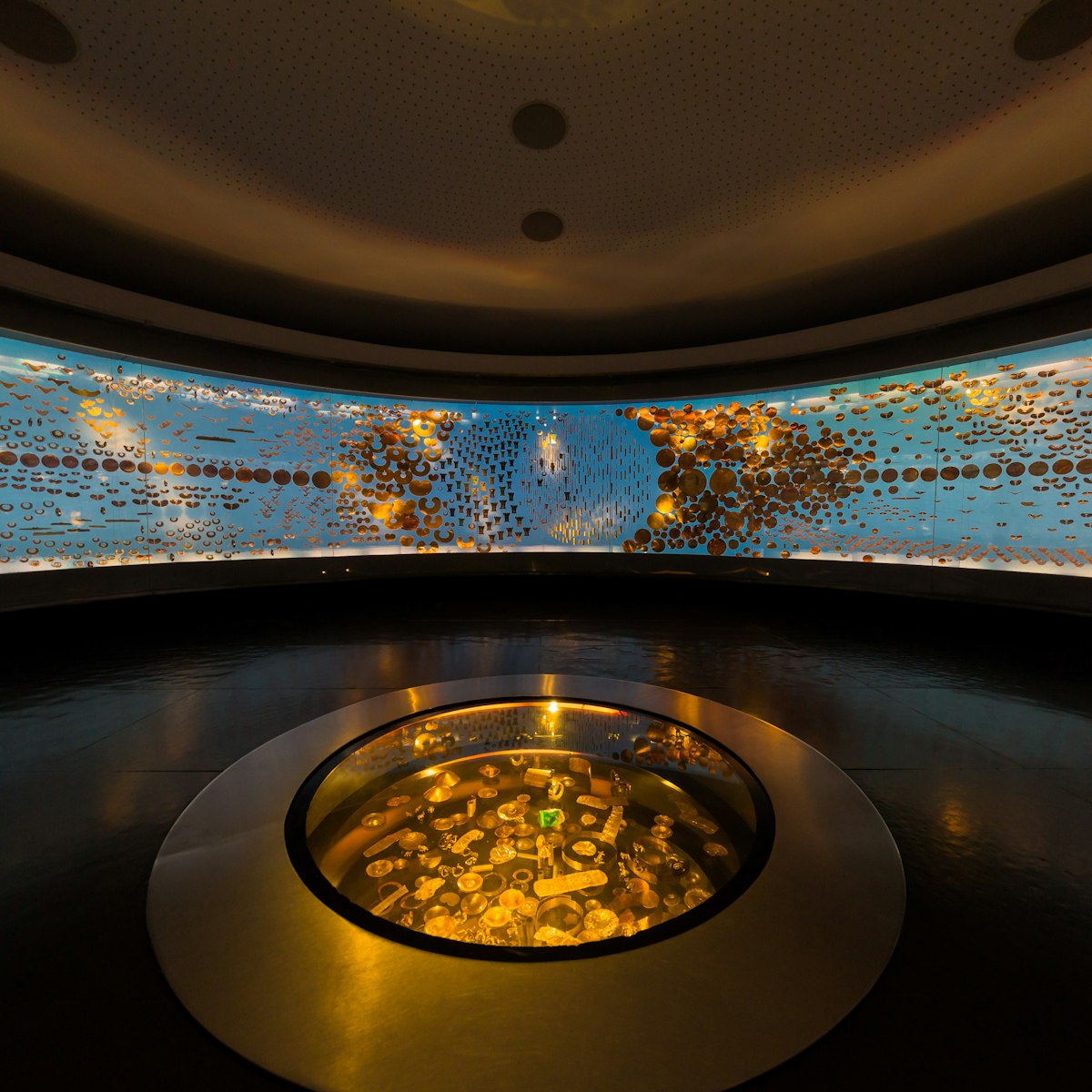
Museo del Oro
Bogotá's most famous museum and one of the most fascinating in South America, the Gold Museum contains more than 55,000 pieces of gold and other materials…
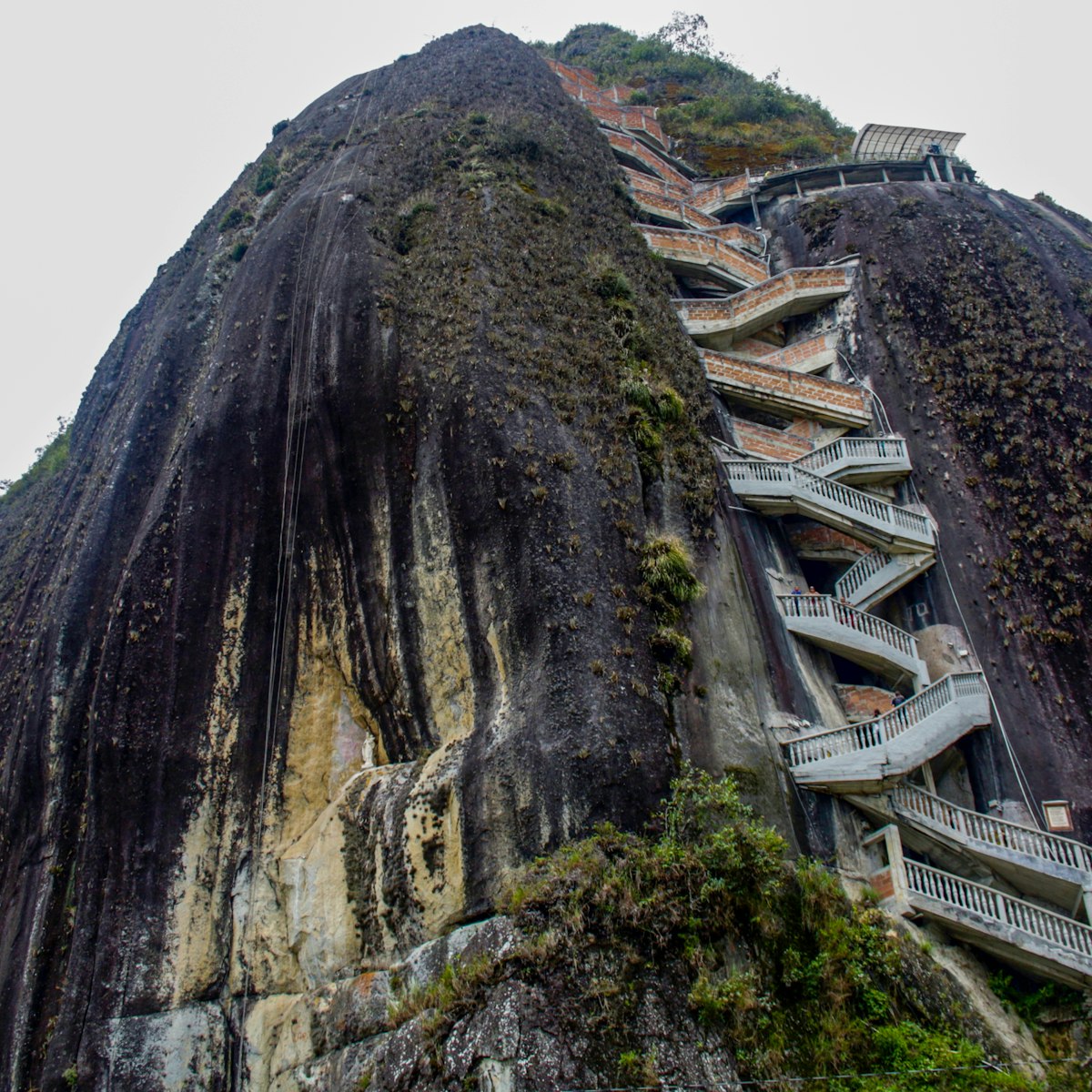
Piedra del Peñol
Also known as El Peñon de Guatapé, thanks to the fierce rivalry between the towns it straddles, this 200m-high granite monolith rises from near the edge…

Parque Arqueológico
Cauca & Huila
This 78-hectare archaeological park is 2.5km west of the town of San Agustín. There are over 130 statues in the park in total, either found in situ or…

Cartagena's old city is its principal attraction, particularly the inner walled town, consisting of the historical districts of El Centro and San Diego…

Museo Casa de la Memoria
This harrowing museum dedicated to the urban conflict in Medellín is a must-visit for travelers wanting to fully understand the city (and Colombia). There…

Parque Nacional Natural El Cocuy
One of Colombia's most spectacular national parks, PNN El Cocuy is mostly made up of a diverse ecosystem known as the páramo. This glacially formed,…
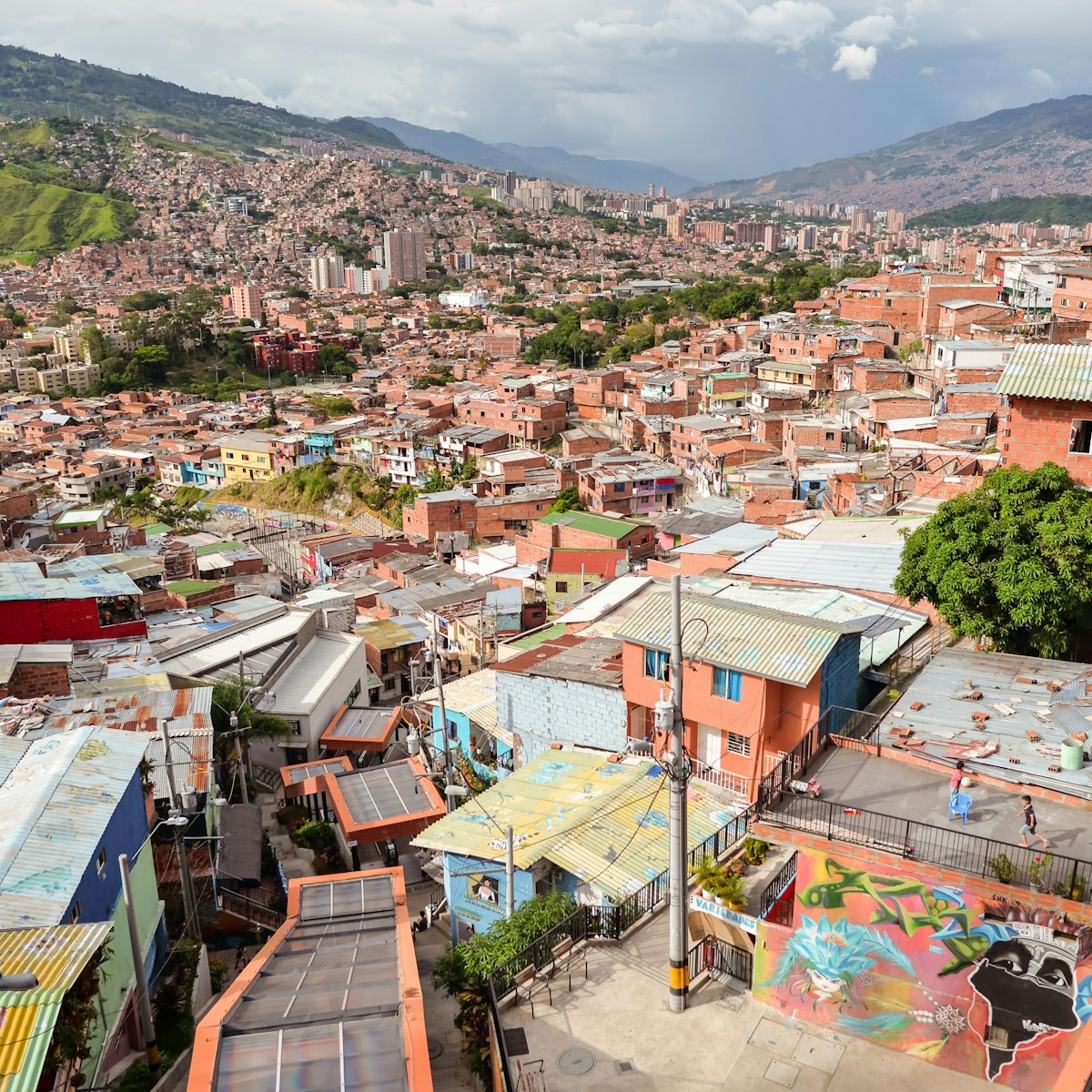
La Comuna 13
Once one of the most dangerous neighborhoods in Medellín, the Comuna 13, which clings to the mountainside above the San Javier metro station, has…
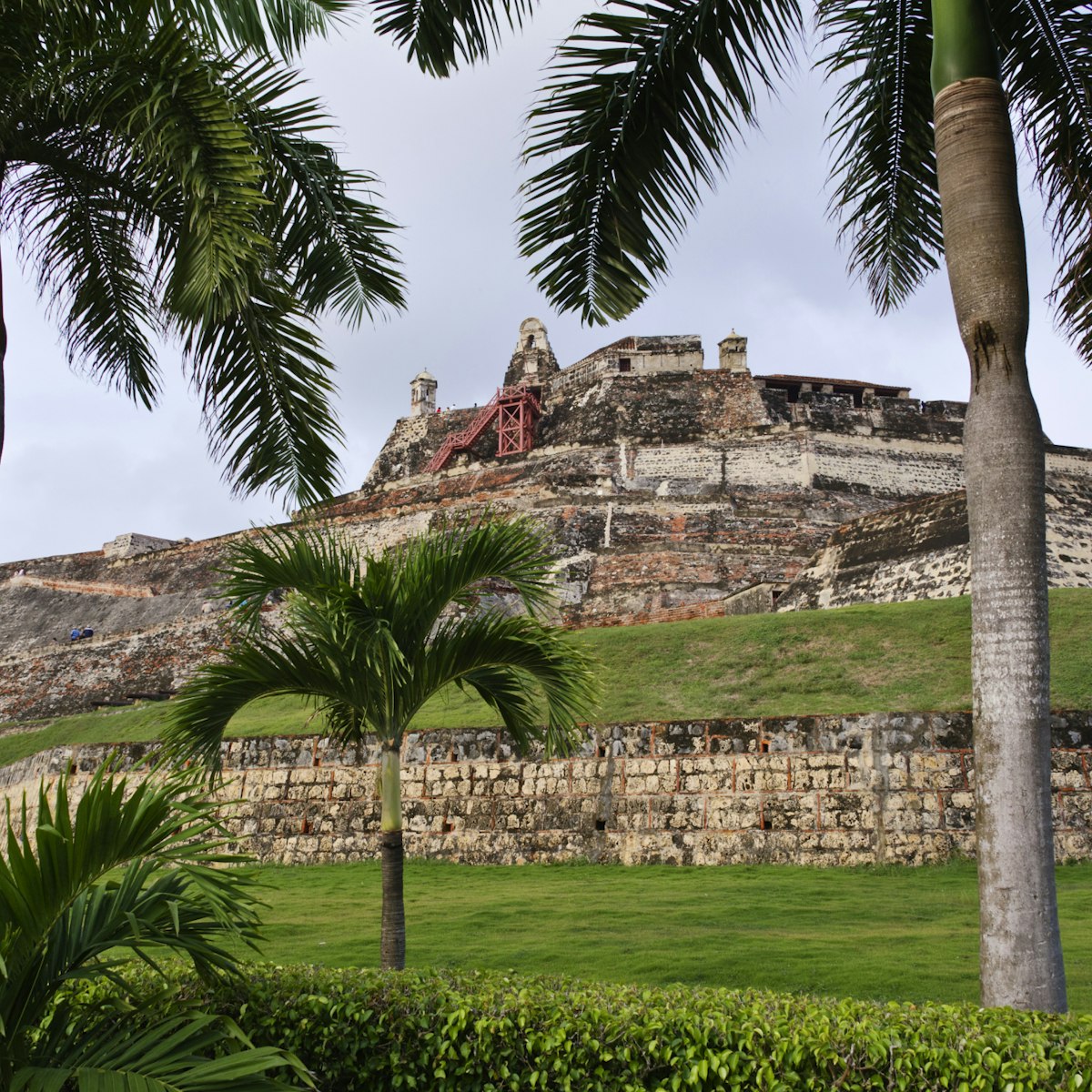
Castillo de San Felipe de Barajas
The greatest fortress ever built by the Spaniards in any of their colonies, the Castillo de San Felipe de Barajas still dominates an entire section of…
Top picks from our travel experts
14 best experiences in colombia in 2024.

Desierto de Tatacoa
Technically not a desert but a landscape of red and gray rock, sculpted by ancient waterways, the Desierto de Tatacoa is one of Colombia's most unique…
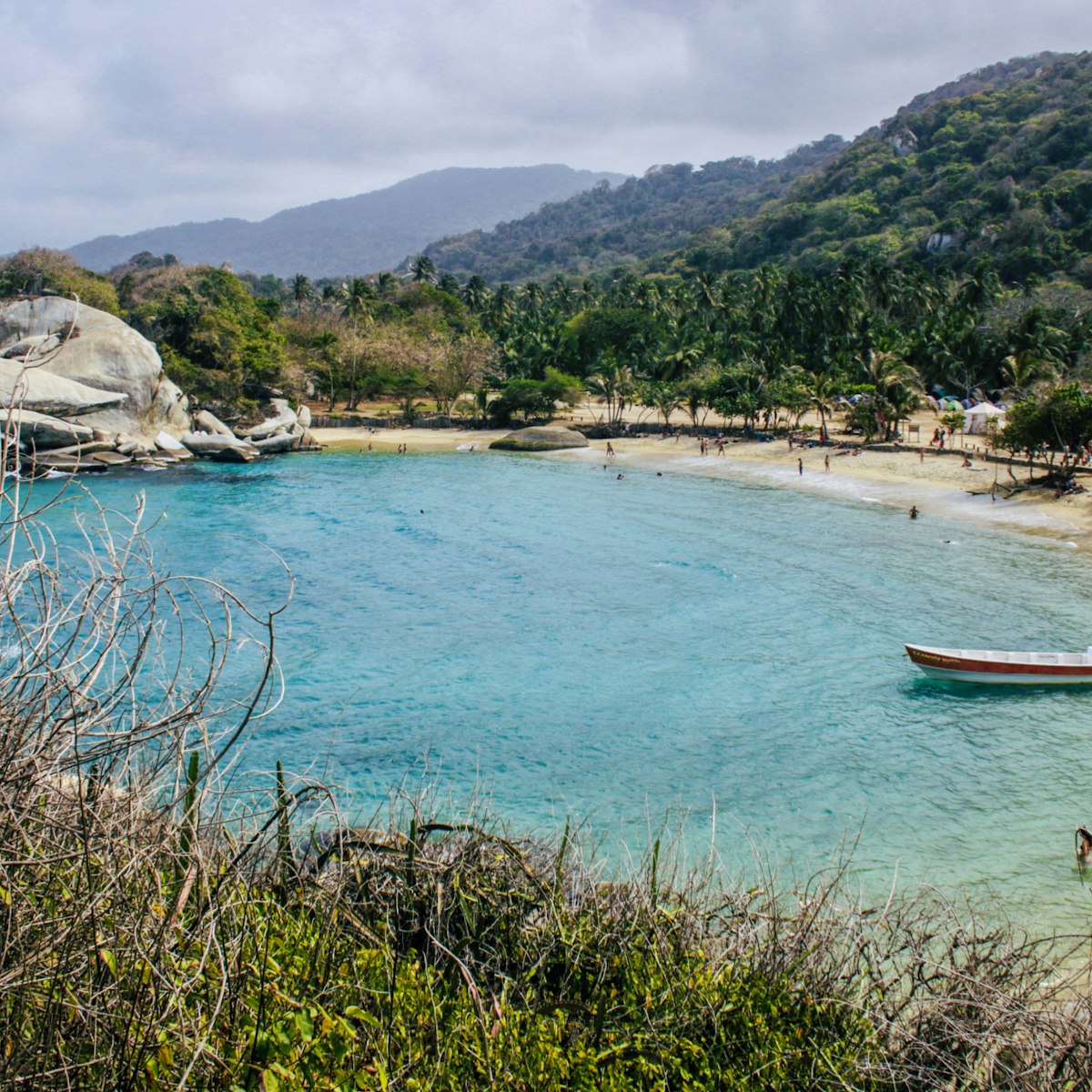
Cabo San Juan del Guía
Parque Nacional Natural Tayrona
Cabo San Juan del Guía is a beautiful cape with a knockout beach. It's also by far the most crowded area of the park, although lack of road access deters…
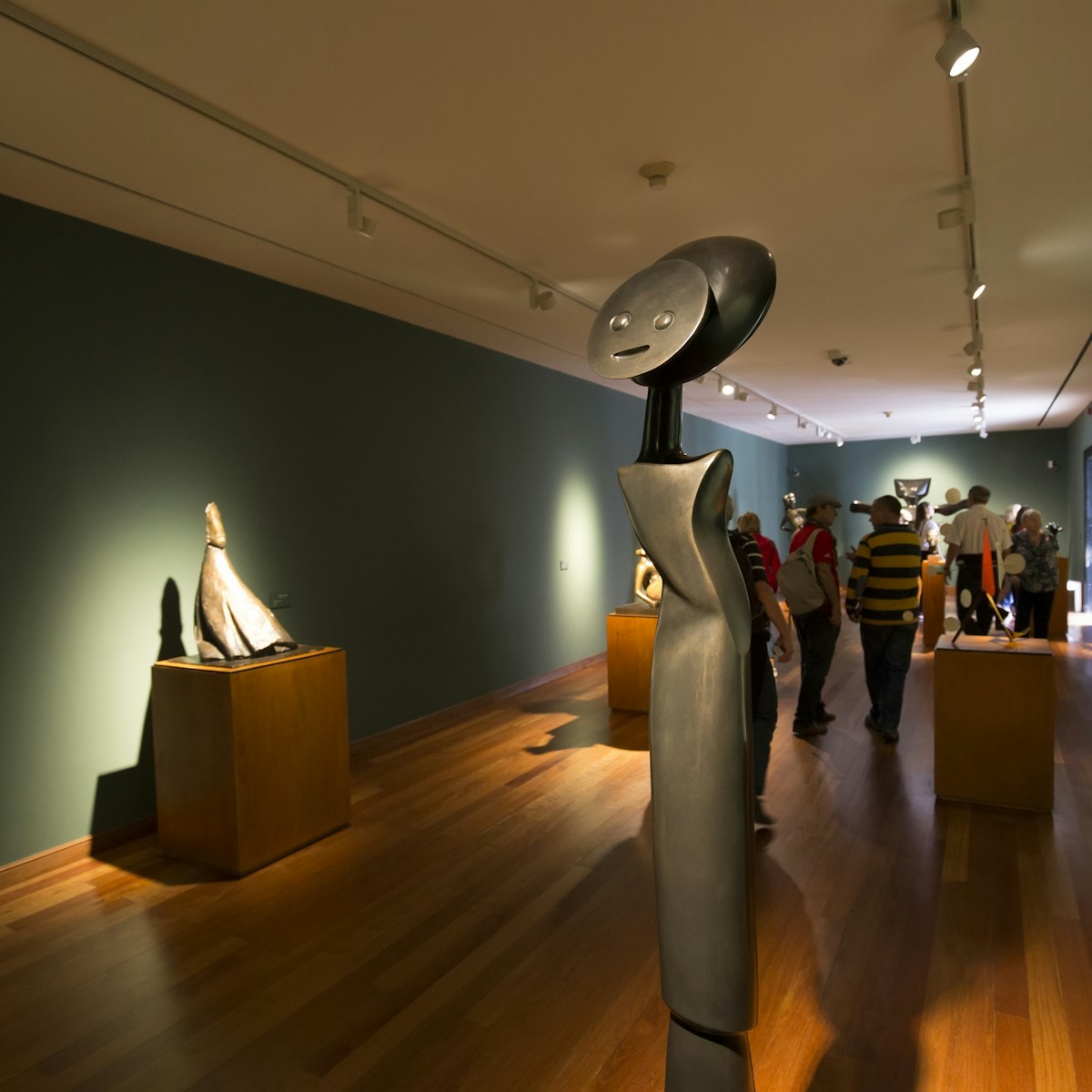
Museo Botero
Even if you've never heard of Fernando Botero, you'll probably recognize some of his highly distinctive paintings of oversized (read: chubby) characters,…

Hacienda Venecia
Zona Cafetera
This hacienda has won numerous awards for its coffee. It offers a tour in English that includes an informative presentation about Colombian coffee, an…

Topa Tolondra
Popular with locals and travelers alike, this large salsa bar near Loma de la Cruz is always buzzing. The tables are pushed right up against the walls,…
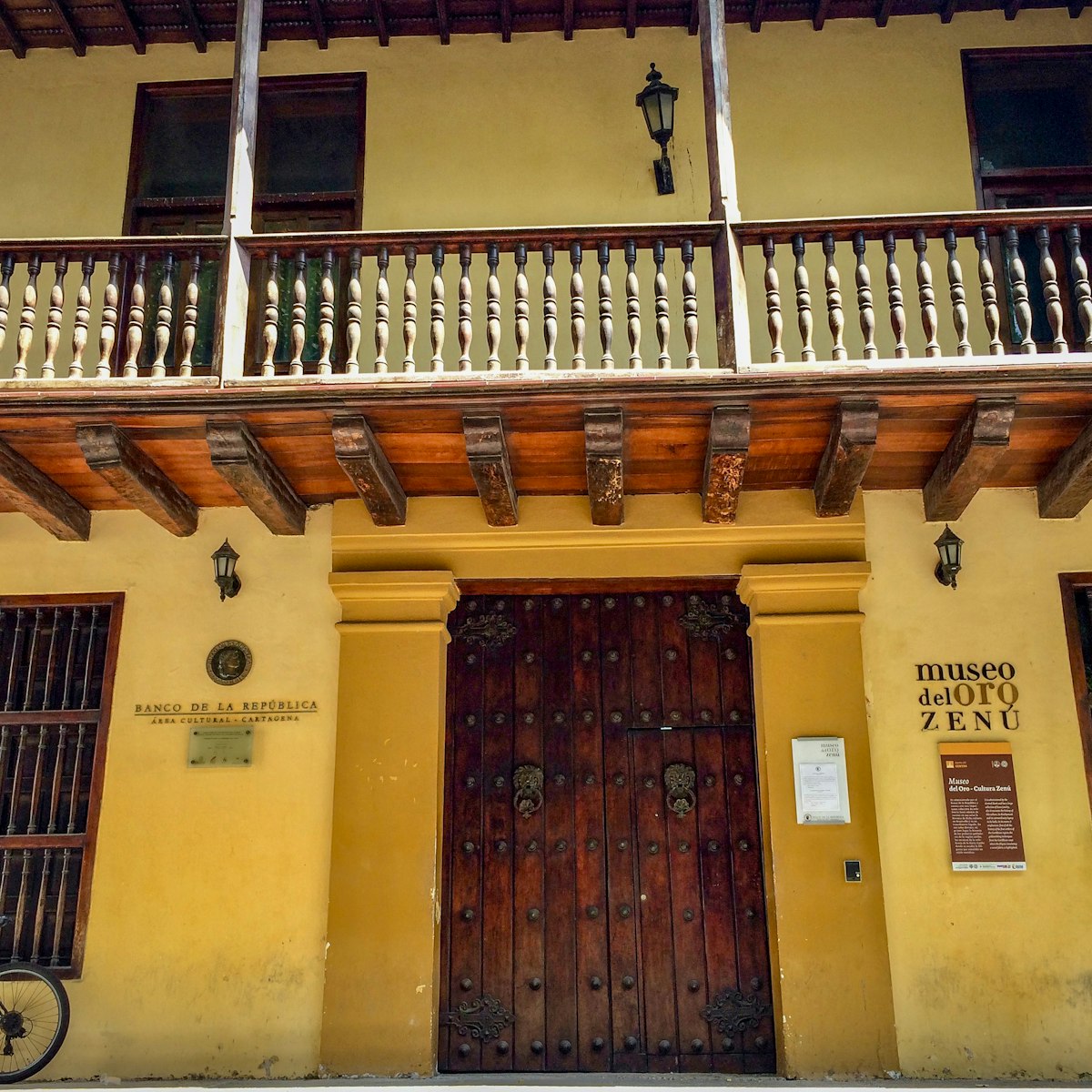
Museo del Oro Zenú
This museum is like a miniature version of Bogotá's world-class gold museum, the Museo del Oro. Though small, it offers a fascinating collection of the…

Parque Nacional Natural (PNN) Los Nevados
One of Colombia's most awe-inspiring national parks, PNN Los Nevados encompasses 583 sq km of rugged terrain in the heart of the Colombian Andes. Its…

El Cerro de Moravia
The densely populated neighborhood of Moravia was once Medellín's municipal rubbish dump with an open-air mountain of trash surrounded by a large shanty…

Observatorio Astronómico Astrosur
Former Tatacoa Observatory resident astronomer Javier Rua Restrepo now runs his own observatory around 1km further away from town. He is a dynamic teacher…

Hacienda Guayabal
This slow-paced working coffee farm near Chinchiná is a great place to come and unwind while surrounded by cafetero culture. It runs an excellent tour…

Cañaveral is as far as you can go in the park by road. From the car park a trail leads west to Arrecifes and Cabo San Juan del Guía. The beaches in…

Parque Nacional Natural (PNN) Old Providence McBean Lagoon
Providencia
To protect the unique marine life here, a 10-sq-km nature reserve in the island's northeast was established in 1995. About 10% of the park's area covers a…
Scattered across the hills around the little town of San Andrés de Pisimbalá, Tierradentro's Parque Arqueológico includes four tomb sites, an above-ground…
Planning Tools
Expert guidance to help you plan your trip.
Best Things to Do
Colombia attracts record numbers of visitors with its incredible landscapes, vibrant cities and warm welcome. These are the top 14 things to do in 2024.
Things to Know
Have an unforgettable trip to Colombia with these planning tips on everything from transport to health, safety and etiquette.
Transportation
Colombia's landscape is stunning and impressive but those features can be hard to navigate on the ground. Here's how to get around Colombia.
Visa Requirements
With its warm, welcoming atmosphere and jaw-dropping national parks and beaches, Colombia is a joy to visit, Here's what you need to know about visas.
Money and Costs
Colombia is one of the best-value destinations in South America. Stretch your cash even further with our top tips on how to visit on a budget.
Traveling with Kids
Discover the family-friendly side of Colombia with these age-appropriate destinations and activities for unforgettable vacations with kids.
Best Road Trips
From incredible mountainous landscapes to stunning uncrowded beaches, Colombia has some once-in-a-lifetime road trips. Here are 5 of the best.
Plan with a local
Experience the real Colombia
Let a local expert craft your dream trip.
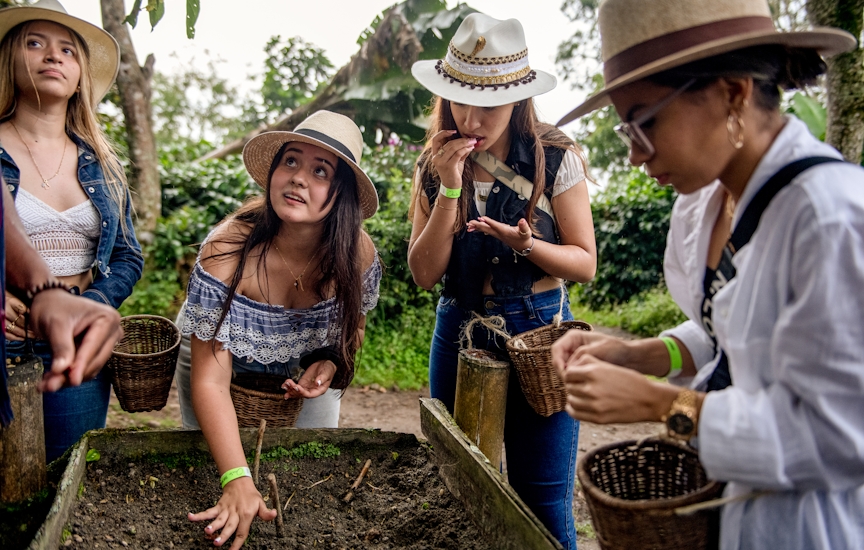
Latest stories from Colombia
Filter by interest:
- All Interests
- Adventure Travel
- Art & Culture
- Beaches, Coasts & Islands
- Food & Drink
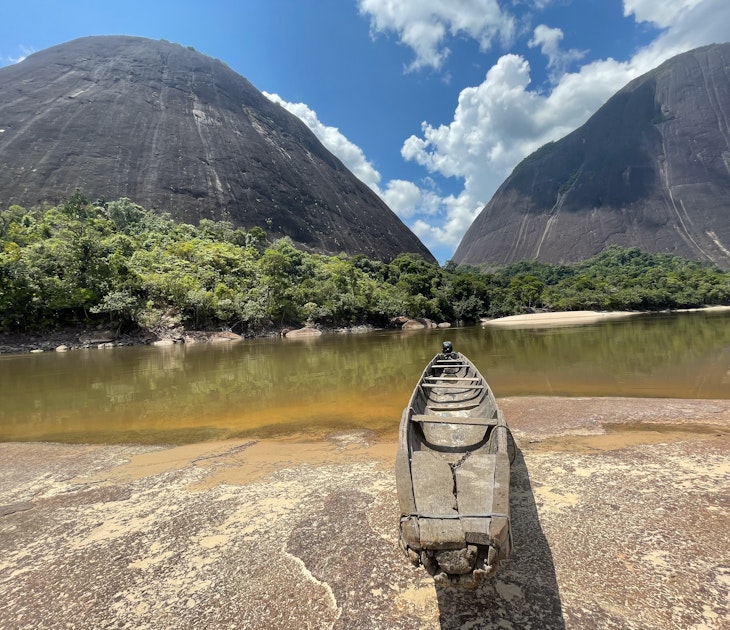
Apr 10, 2024 • 8 min read
Here’s how to get off the beaten track and discover the best of the magnificent Colombian rainforest.
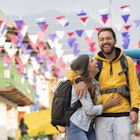
Mar 9, 2024 • 11 min read

Feb 29, 2024 • 9 min read

Feb 11, 2024 • 9 min read

Oct 2, 2023 • 8 min read

Oct 2, 2023 • 11 min read

Oct 1, 2023 • 4 min read
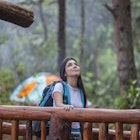
Sep 30, 2023 • 6 min read

Sep 23, 2023 • 5 min read
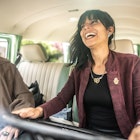
Sep 21, 2023 • 8 min read
in partnership with getyourguide
Book popular activities in Colombia
Purchase our award-winning guidebooks.
Get to the heart of Colombia with one of our in-depth, award-winning guidebooks, covering maps, itineraries, and expert guidance.
Colombia and beyond
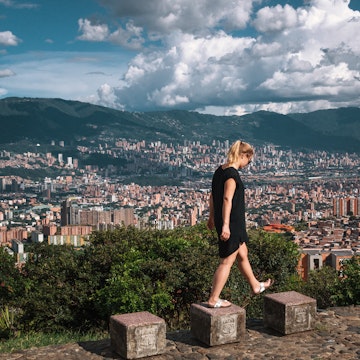
Situation in Haiti April 5, 2024
U.s. citizens in haiti, update april 12, 2024, information for u.s. citizens in the middle east.
- Travel Advisories |
- Contact Us |
- MyTravelGov |
Find U.S. Embassies & Consulates
Travel.state.gov, congressional liaison, special issuance agency, u.s. passports, international travel, intercountry adoption, international parental child abduction, records and authentications, popular links, travel advisories, mytravelgov, stay connected, legal resources, legal information, info for u.s. law enforcement, replace or certify documents.
Share this page:
Learn about your destination
Take 90 seconds for safer travel.
Travel Advisory Levels
Enroll in step.

Subscribe to get up-to-date safety and security information and help us reach you in an emergency abroad.
Recommended Web Browsers: Microsoft Edge or Google Chrome.
External Link
You are about to leave travel.state.gov for an external website that is not maintained by the U.S. Department of State.
Links to external websites are provided as a convenience and should not be construed as an endorsement by the U.S. Department of State of the views or products contained therein. If you wish to remain on travel.state.gov, click the "cancel" message.
You are about to visit:

Colombia Travel Guide
Your ultimate colombia travel guide, with tips, and things to see and things to do in colombia. great for first-time and returning travelers..
Located between the Caribbean, the Amazon Jungle, and the Andes Mountains, Colombia has something for everyone.
A bright, colorful country, it is a very popular tourist destination and for good reason.
Rich with culture and history and full of tropical climates, it makes a great place for fans of the outdoors or those who want to experience its many beaches and islands.
Add in the vibrant nightlife in cities like Medellin and it is a perfect vacation spot.
This Colombia travel guide will help you plan your next vacation.
Popular Guides
- Things to do in Cartagena
- Must See Cities in Colombia
Our Highlight
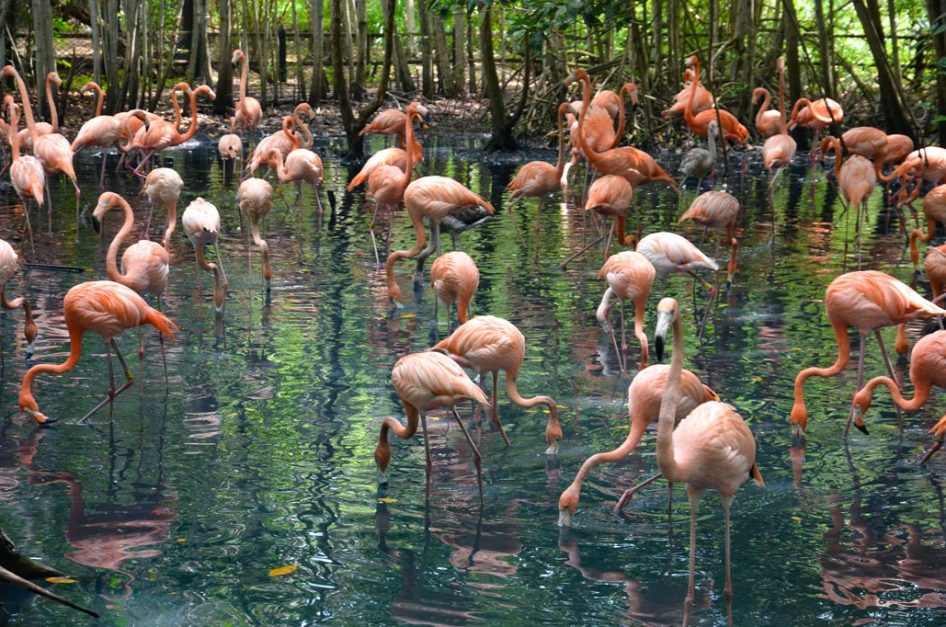
Table of contents
Table of Contents
Fast Facts about Colombia
- Power voltage is 110V at 60 Hz.
- Colombia’s currency is the Colombian Peso and 1 Colombian Peso is equal to 0.0003 USD.
- The best way to get around Colombia is by bus.
- As long as your stay is under 90 days, you do not need a tourist visa, just a valid US passport.
- Popular network providers in Colombia include Claro, Tigo, and Movistar. You can purchase a SIM card through any of these networks by visiting their official stores.
- Colombia has a sales tax rate of 19%.
Things to See and Do in Colombia
Tayrona National Park: Found in the Caribbean Coast of Colombia, head over to the Tayrona National Park to explore beautiful beaches and the Sierra Nevada de Santa Maria, the highest coastal mountain in the world. Once there, you can hike through the hillsides to see Pueblito, a village full of history and sacred sites from an ancient civilization, or go to the rainforest and see a variety of animals and species, including the very rare cotton-top tamarin (monkeys). https://www.beautifulworld.com/south-america/colombia/tayrona-national-park/embed/#?secret=xCh0K8LhzY
Gold Museum: Spend time at this very popular gold exhibition in Bogotá. Take a guided tour to learn more about Colombia and its history or explore at your own pace and see artifacts and gold pieces from pre-Hispanic metallurgy.
Walled City of Cartagena: Feel like you are back in time and explore the bright, colorful streets of Cartagena. Walk past beautiful restored colonial houses and buildings, enjoy fine dining, shop at designer boutique stores, and sample delicious fruits from the fruit stands.
Laguna de Guatape: One of the most popular places in Medellin is the town of Guatape. Take a guided tour or explore on your own. Climb the 700 steps of the El Peñol rock to experience views like no other, see the artwork that decorates the town, visit the abandoned mansion of Pablo Escobar, and swim in the lake of Guatape.
San Andres Island: Spend a day (or more) at this famous coral island. Swim in the warm waters, scuba dive with stingrays, explore the various caves, and take in peaceful sights.
Colombia Travel Guides
- Things to do in Cartagena – Visit the Jewel of Colombia
- Top 5 Must See Cities in Colombia
- 15 Reasons to Visit Colombia
Accommodation
Budget: Colombia offers backpacker hostels with a mix of dorm-styled and private rooms for around 320 to 1,200 Colombian Pesos per night. Hostels tend to come with swimming pools, lounge areas, and/or complimentary breakfast.
Mid-Range: For mid-range hotels, expect to pay 160,000 to 500,000 Colombian Pesos per night. Amenities include air-conditioned rooms and suites, outdoor pools, hotel restaurant and bar, fitness areas, complimentary breakfast, and free Wi-Fi.
High-End: Upscale hotels can go from 650,000 to 1,500,000 Colombian Pesos per night and include top-class hospitality service, upscale rooms with private balconies, prime city locations, ocean views, elegant dining, pools and spas, and more.
Check out our favorite booking platforms Booking.com , Tripadvisor and VRBO for the best deals on accommodation.
Food : The cuisine of Colombia is a mix of Indigenous, African, Spanish, and Arab cuisine and favors rice and bread, legumes, meat and seafood, and a variety of fresh fruits. When out and about, stop by local street vendors to taste some chopped papaya and mangoes or grilled corn on the cob or pastel del pollo (chicken-stuffed pastry) or Obleas con Arequipe (wafer sandwich with caramel sauce). At night, head down to a sit-down restaurant to enjoy more Colombian cuisine. Expect to pay roughly 25,000 Colombian Pesos per day for food.
The Best Ways to Get Around Colombia
Getting to colombia:.
Getting to Colombia: The El Dorado International Airport in Bogotá is Colombia’s busiest airport and is just 9 miles, or a 30 to 60-minute drive, to Bogotá city. If traveling closer to the Amazon region, the Alfredo Vásquez Cobo International Airport is a good option.
Flights: You can check for the best flights to Colombia on Skyscanner .
Transportation:
Train: Colombia has a nonexistent train system for passengers.
Bus: Colombia offers many bus options both for shorter distances and to travel between cities. Long-distance buses are similar to a train and offer air-conditioning and sometimes Wi-Fi. Take a bus from Cali to Bogotá in about 10 hours for 70,000 Colombia Pesos, or take a city bus for 2,000 Colombian Pesos.
Rent a car: To rent a car in Colombia, you will need a valid US license valid for at least two years. Note that is not as recommended to rent a car, as it is considered less safe than taking a bus. If you do rent, make sure to find a rental agency that offers insurance. Prices start at around 400,000 Colombian Pesos per day. Colombia also offers taxi services and Ubers.Check for prices and availability here.
When to go To Colombia
- The best time to visit depends on where you are going. December to March are the driest months in general, which is ideal for those going to the Andes Mountains. If you’re heading to the Amazon region, go between July and August, where there is less rainfall. To avoid the crowds and get better prices on flights and hotels, November is a good month to visit Columbia.
Where to Stay in Colombia
Ibis Medellin : Stay in the heart of Medellin at this stylish hotel. The convention center, Museum of Modern Art, downtown area, and the train station are all just minutes away. Once you’re done exploring, head back to the hotel for free high-speed Wi-Fi, air-conditioned rooms, and the hotel’s bar and restaurant.
Hotel Vilar America: Come stay at this charming hotel situated between the historic and nightlife districts of Bogotá. Enjoy free Wi-Fi and breakfast, family rooms with flat-screen TVs, and the hotel’s restaurant before venturing out in Bogotá.
Hotel Cosmos Cali : Enjoy air-conditioned rooms with flat-screen TVs at this hotel in Cali. Room service, free Wi-Fi, and breakfast are included. Take a short walk to the Cali City Theater or head down to the Cali bullring.
What to Pack for Colombia
- Sunscreen: Protect your skin from the beautiful sun with some sunscreen.
- Hiking Boots: Keep your feet comfortable with a sturdy pair of hiking boots.
- Swimsuit: With so many beaches and waters to explore, make sure to bring a swimsuit with you.
See our packing tips: packing tips
Colombia Travel Guide: Best Booking Resources
Whenever we travel to we make sure to start with these companies. We have tried a lot of different ones over the years and all of these have consistently proven to be the best when it comes to offering great prices.
We have used every one of these personally and continue to do so.
- Booking.com : This is our go site to when comparing prices for accommodation. It usually has the cheapest prices, especially in Europe and we love their interface. Not to mention you get free cancellation and you are guaranteed the best price.
- Trip Advisor : What we like about Trip Advisor is that we can look at all the reviews and then book our accommodation. TripAdvisor is where we go when we want to compare prices with multiple accommodation providers.
- VRBO : is the main search engine we use when we are looking for a home or apartment rental. It can sometimes be cheaper than hotels and it is the best way to stay in areas that offer a more local feel.
- Hostelworld : With one of the largest databases of hostels in the world, Hostelworld is the go-to site when you are looking for budget accommodation.
- Skyscanner : This is the first place we check for flights. It consistently comes back with the cheapest and best options. It allows us to compare a lot of airlines to get the best price.
- Rome 2 Rio : If you want to see how to get somewhere by plane, train, bus, ferry or car Rome2Rio lays it all out for you as well as related costs.I love how they show it all to you on a Google Map and it works offline.
- Get Your Guide: For all your day trip and city guide needs, we use Get Your Guide. It has the world’s largest collection of things to do with more than 30,000 activities in 7500 destinations.
- World Nomads Insurance: When traveling to Italy you should always have travel insurance. We have found the best bang for your buck is by far World Nomads.
Colombia Travel Guide: Related Articles
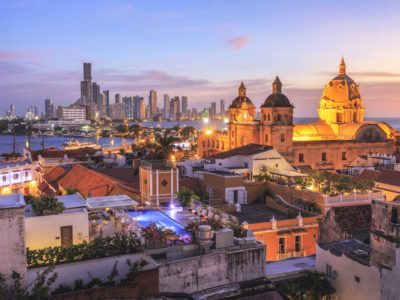
18 Best Things to Do in Cartagena – The Jewel of Colombia
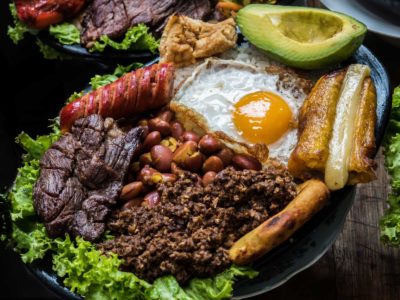
Colombian Food: 28 Traditional Dishes to try in Colombia or at home
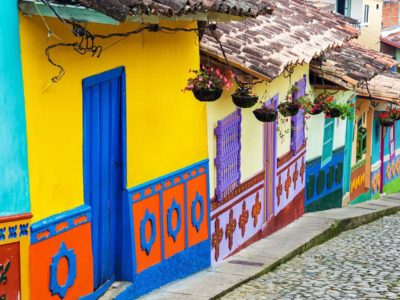
25 Fun Facts About Colombia – Plan Your Trip Today

Ultimate COLOMBIA Travel Guide
Colombia is a country located in South America . Bogota is the capital and it is a country known for its history, architecture, landscapes, and beaches.
Colombia is a country with a torrid past and one that people are only just starting to think about visiting in the past 10 years, with good reason, as it has a lot to offer the tourist.
There are exquisite ruins in the dense jungles, megacities with so much culture on offer you don’t have to wander far, amazing coffee and beautiful beachside resorts in the north.
It’s a country we have only scratched the surface of but it’s one we will be back to explore more of in the near future.
Destinations
Colombia travel: quick tips, don’t visit colombia without:.
UNIVERSAL TRAVEL ADAPTER

GET A GUIDEBOOK

REUSABLE WATER BOTTLE

START PLANNING YOUR TRIP!
Where to stay in colombia.
Below you will find some of the places we have stayed during our travels in Colombia. These are individual properties that we enjoyed and would recommend to other travelers.
HOW TO GET AROUND IN COLOMBIA
Anyone looking to travel to Colombia will likely fly into Bogota and connect to the other airports across the country. From these major cities, it is possible to use public transportation to see the city or take buses further afield.
Many people choose to engage in group tours or day tours to get around and see things in Colombia. It is also possible to rent a car and plan a road trip that takes you further afield and out of the city.
TOP COLOMBIA TOURS
Colombia journey.
9 Days Bogota to Categena Visits: Bogota, Armenia, Medellin & Cartegena
CLASSIC COLOMBIA
16 Days Bogota to Santa Marta Visits: Armenia, Salento, Medellin, Cartegena, Minca & Taganga
COLOMBIA COAST & LOST CITY
14 Days Bogota to Santa Marta Visits: Minca, Taganga, Tayrona NP & Lost City Trek
PLAN YOUR TRIP LIKE A SEASONED PRO!
Colombia travel: booking resources, colombia travel guide: related articles.
Looking for more info? Check out all the articles we’ve written on travel to Colombia and start planning your dream trip.
16 Epic Things to do in Bogota

- Travel Tips Colombia for planning and on the go
Book your individual trip , stress-free with local travel experts
- roughguides.com
- South America
- travel-advice
- Travel guide
- Itineraries
- Local Experts
- Travel Advice
- Accommodation
More travel information for Colombia
From travel safety to visa requirements, discover the best tips for traveling to Colombia
- Eating and drinking in Colombia
- Getting around Colombia: Transportation Tips
- How to get to Colombia
- Best time to visit Colombia
- Weather in Medellin in April
- Weather in Medellín in March
- Weather in Colombia in January
- Weather in Colombia in February
- Weather in Colombia in April
- Weather in Colombia in June
- Weather in Colombia in July
- Weather in Colombia in August
- Weather in Colombia in September
- Weather in Colombia in October
- Weather in Colombia in November
- Weather in Colombia in December
Daily budget Basic US$50, occasional treat US$90 Drink Fresh fruit juice US$2 Food Pargo frito con arroz con coco (fried snapper with coconut rice) US$8 Hostel/budget hotel US$20/40 Travel Bogotá–Cartagena bus (663km; 19hr) US$75
Crime and personal safety
Emergencies, entry requirements, information, money and banks, opening hours, public holidays, local slang, culture in colombia, tailor-made travel itineraries for colombia, created by local experts.

7 days / from 1284 USD
Unforgettable Colombia
Spend your first days in Colombia exploring its capital city Bogotá before heading further to the coast: Cartagena and Santa Marta will be next on the agenda. From wandering the historic city center to hiking the jungles to a virgin beach, Colombia will be an unforgettable trip!

18 days / from 3664 USD
Colombia: music & arts explored
If you are a lover of the arts than look no further. This trip will bring you culture, art, architecture, music and dance: visit local markets and workshops, admire the graffiti in Bogotá, discover historical city centers and “Fondas” – local bars with exotic decoration and typical Colombian music.

10 days / from 4650 USD
Colombia for nature & adventure lovers
Do you like adventure and nature? Then you're in luck, this trip combines the best of both. Go horse riding through the Risaralda valley and join a bike tour through Cartagena, visit the beautiful Cocora Valley and discover the Coffee Cultural Landscape. There's something for everyone!
Tailor-made trips for Colombia
Colombia today is far safer and more accessible than it has been in decades. That said, pockets of guerrilla activity remain in remote parts of the country, particularly the jungle – a haven for drug-running activities – both by the rebels and particularly by the paramilitary groups who have the tacit support of the government, and who have been criticized for using techniques as dirty as those employed by the rebels. The FARC have renounced kidnappings for financial or political ends, but it remains to be seen whether they’ll remain true to their word. Although, reassuringly, tourists have not been targeted specifically in the country’s civil war, certain areas should still be avoided , including the Chocó, parts of Nariño, Putumayo, Meta, Arauca and rural parts of Cauca. Most guerrilla/paramilitary activity is confined to rural areas near the border with Panama and Venezuela. However, it’s imperative that you stay abreast of current events: for up-to-date travel advice check www.travel.state.gov or www.gov.uk/fco .
Violent crime does exist, particularly in poor neighbourhoods of the big cities, but visitors are far more likely to encounter pickpockets, so keep a sharp eye on your belongings. Beware of scams – such as criminals posing as plain-clothes policemen and asking to inspect your passport and money, allegedly in search of counterfeit notes, which they then confiscate. Counterfeit notes do exist, so ask locals how to identify them.
When out and about, take only as much cash as you need for the outing, and leave the rest (as well as your passport) in a safe in your lodgings. Always carry a photocopy of your passport with you – the main page and the page with your entry stamp. Local police have a mixed reputation for corruption.
Drugs are widely available in Colombia, cocaine and marijuana in particular. Possession of either is illegal and could result in a prison sentence, and being caught with drugs while trying to cross a border can have serious consequences. If you do decide to take drugs, be very careful: they are much stronger than in Europe and the US. Do not accept drinks, snacks or cigarettes from strangers as there have been reports of these being spiked with the tasteless and smell-free drug burundanga , or “zombie drug”, that leaves victims conscious but incapacitated and susceptible to robbery and rape.
Police/ambulance/fire 123
A passport and onward ticket are the sole entry requirements for nationals of most of Western European countries, Canada, the US, Australia, New Zealand and South Africa.
Upon arrival, all visitors receive an entry stamp in their passports, usually for sixty days . You can request up to ninety days but this is rarely granted. Double-check the stamp straightaway for errors. Make sure you get an entry stamp if coming in overland and that you get a departure stamp upon exiting to avoid trouble.
Thirty-day extensions cost COP$72,350 and can be obtained at the former DAS (Departamento Administrativo de Seguridad) offices from the Ministerio de Relaciones Exteriores ( www.cancilleria.gov.co ). You’ll need two passport photos with a white background, copies of your passport and entry stamp as well as the original, and an onward ticket.
Vaccinations against hepatitis A, hepatitis B and typhoid are strongly recommended and rabies should also be considered; consult a travel health clinic weeks in advance. Vaccinations against yellow fever are necessary if visiting coastal national parks; some countries, such as Australia and Brazil, will not let you into the country without a yellow fever certificate if you’re travelling directly from Colombia. Insect-borne diseases such as malaria and dengue fever are present, particularly in the Amazonas, Chocó, Antioquia, Córdoba, Bolívar, Putomayo and Atlántico departments – bring plenty of mosquito repellent (50 percent DEET, unavailable in Colombia) and cover up with long sleeves and trousers. Altitude sickness ( soroche ) may affect travellers at altitudes over 2500m, including those flying directly to Bogotá – take time to acclimatize before continuing your journey, drink plenty of water and avoid alcohol.
Colombia offers some of the best healthcare in South America; all major cities have hospitals , while in rural areas healthcare is more difficult to come by. In the case of serious health issues, you may be transferred to a larger hospital with more specialized doctors and facilities.
Despite the significant rise in tourism to Colombia in recent years, the practical information available at tourist offices is often rudimentary. Almost every town has a tourist office, although their staff often don’t speak English, and hostels are often much more useful for gathering information.
In Colombia, the annually updated (Spanish only) Guía de Rutas , sold at tollbooths and some tourist offices, has excellent maps , as well as potential road-trip routes and extensive local listings.
colombiareports.com Latest news, sports, culture and travel in English.
colombia.travel Colombia’s official tourism site, with plenty of photos, good background and some practical information.
hosteltrail.com/colombia Budget accommodation and local attractions.
parquesnacionales.gov.co Portal to Colombia’s national parks.
Internet cafés can be found even in small towns (from COP$3000/hr), and free wi-fi spots are becoming easier to find.
Sending a postcard or a letter abroad can be done for COP$5500–6500 from almost anywhere in the country, using the efficient 4-72 (4-72.com.co). Packages are best sent via private companies such as Avianca ( aviancaexpress.com ) and Deprisa ( deprisa.com ).
Colombia’s national currency is the peso (COP) , divided into 100 centavos. Coins are for 50, 100, 200, 500 and 1000 pesos and notes for 1000, 2000, 5000, 10,000, 20,000 and 50,000 pesos. At the time of writing, rates were: US$1=COP$1800; £1=COP$2700; €1=COP$2300.
Changing large notes can be problematic outside big cities.
ATMs are plentiful, with at least one even in small towns. For changing money , casas de cambio offer slightly better rates, have more flexible hours and provide quicker service than most banks. Travellers’ cheques can also be exchanged at casas de cambios and banks, but few businesses accept them. Using moneychangers on the street is not recommended.
Shops are open 8am until 6pm, Monday to Friday. Many businesses also often open on Saturdays until mid-afternoon. Outside Bogotá many businesses close at noon for a two- or three-hour siesta. Commercial hours in cities in warmer areas such as Cali often get started and end earlier. Government offices often follow the same pattern. Banks open around 9am and close at 4pm. Casas de cambio stay open later.
The three major mobile phone networks are Movistar, Claro and Tigo, and it’s inexpensive to purchase a local mobile phone: a basic handset will set you back around COP$50,000–60,000; if you have an unlocked phone, a SIM card will set your back around COP$12,000, with around COP$5000 worth of credit, with top-up credits sold in every corner shop. However, it’s cheapest to make domestic long-distance calls using the mobile phones in corner stores that buy minutes in bulk (look for the word “ minutos ”). Call centres ( telecentros ) allow you to make inexpensive calls both to local numbers and abroad, though Skype is by far the cheapest way to go, given the proliferation of free wi-fi.
- January 1 New Year’s Day (Año Nuevo)
- January 6 Epiphany (Día de los Reyes Magos)
- March 21 St Joseph’s Day (Father’s Day)
- March or April Easter (Semana Santa)
- May 1 Labour Day (Día del Trabajo)
- May Ascension Day (the Monday six weeks and a day after Easter Sunday)
- May/June Corpus Christi (the Monday nine weeks and a day after Easter Sunday)
- June 29 Saint Peter and Saint Paul (San Pedro y San Pablo)
- July 20 Independence Day
- August 7 Battle of Boyacá
- August 15 Assumption of the Virgin Mary (Asunción de la Virgen)
- October 12 Columbus Day (Día de la Raza)
- November 1 All Saints’ Day (Día de Todos los Santos)
- November 11 Independence of Cartagena
- December 8 Immaculate Conception (Inmaculada Concepción)
- December 25 Christmas Day (Navidad)
Colombians take much joy in their particular style of linguistic acrobatics and slang. Colombians freely convert verbs to nouns and vice versa, so take each word as a fluid concept.
(n), camellar (v) Work, or working. A good way to refer to a particularly trying task.
La/una chimba
(adj) Used to describe a situation or thing that is wonderful. Roughly synonymous with the youthful American usage of “awesome”. Variations include “Qué chimba!” (“Nice!”).
(n) Body odour. A crass but still useable term.
(adj) “Cool”, loosely. Used to describe the subset of cool things – or happenings – that’s particularly classy, well executed or elegant. Think football passes or a good outfit. Chevere and bacán are other words for “cool”.
(adj) “That really sucks”. Used in response to a comment or situation that’s aggressively bad or heavy.
(n) Cocaine. Regional translations include scrambled eggs, coffee with milk or (as here) a parakeet.
(adj) Common response to a question like “How was your day?” that means “Good!” or “Perfect!”
In Colombia you will notice a great disparity between the wealthiest members of society – who live a lifestyle akin to that of their counterparts in Europe’s capitals – and the rest of the population: the poor city residents who live in dangerous neighbourhoods, and below them on the poverty scale the rural poor, particularly those who live in isolated areas where armed conflict still goes on.
When interacting with Colombians, Westerners will note that sincerity in expression, often expressed via good eye contact, is valued more highly than the typical steady stream of pleases and thank-yous.
Tipping ten percent at mid-range restaurants is the norm; some establishments will ask you if you’d like for the tip to be included when you ask for the bill, while some add it on automatically. For short taxi trips, round up to the nearest thousand pesos.
The machismo often ascribed to Latin American culture is present in Colombia, though a significant number (around 30 percent) of politicians and diplomats are female. The country’s Catholic roots run quite deep and are apparent in sexual attitudes among both men and women, though there is some flexibility – and contradiction – in views toward gender and sexual orientation.
The Rough Guides to Colombia and related travel guides
In-depth, easy-to-use travel guides filled with expert advice.

Travel advice for Colombia
Find even more inspiration here.

Ready to travel and discover Colombia?
Get support from our local experts for stress-free planning & worry-free travels.
- Where to stay
- Travel advice
- Things To Do
- Entertainment
- Food Travel
Travel Tips
- Travel News
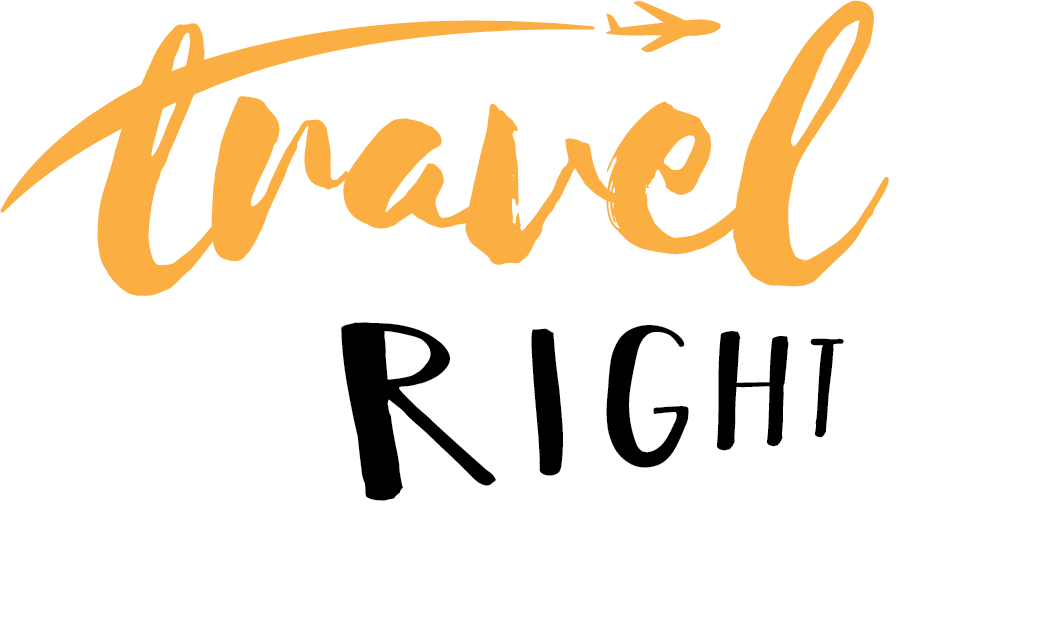
Colombia Travel Tips: 16 Things To Know Before You Go
Introduction.
Welcome to Colombia, a country ripe with vibrant culture, diverse landscapes, and warm-hearted people. From the bustling capital of Bogota to the stunning beaches of Cartagena, Colombia offers a treasure trove of experiences for travelers. Before embarking on your journey, it’s crucial to familiarize yourself with some key tips to ensure a smooth and memorable trip.
Colombia has come a long way in shedding its dangerous reputation and is now a popular destination for tourists worldwide. However, it’s important to exercise caution and be aware of your surroundings, especially in certain areas known for petty theft or drug-related activity. By taking simple safety precautions, you can minimize risks and enjoy your time in Colombia.
Before you pack your bags, make sure to check the visa and entry requirements for Colombia. Depending on your nationality, you may be eligible for a visa exemption for a certain period or require a visa in advance. It’s always best to check with the Colombian embassy or consulate in your country to ensure you have the necessary documents.
The best time to visit Colombia is during the dry season, which typically runs from December to March and July to August. However, Colombia’s diverse geography means that weather patterns can vary significantly from region to region. Be prepared for occasional rain showers, especially if you plan to explore the lush rainforests or trek through the Andes mountains.
Spanish is the official language of Colombia, so it’s beneficial to have some basic knowledge of the language. While some people in tourist areas may speak English, it’s always useful to learn a few common phrases to navigate your way around and communicate with locals. Colombians are generally friendly and appreciative of efforts to speak their language.
The currency used in Colombia is the Colombian peso (COP). It’s advisable to carry some local currency for small purchases and in case you encounter establishments that don’t accept cards. ATMs are widely available, but it’s wise to notify your bank of your travel plans to avoid any issues with card transactions.
Safety Precautions
While Colombia has made significant strides in improving its safety record, it’s still important to exercise caution and be mindful of your surroundings while traveling in the country. Here are some safety precautions to keep in mind:
- Stay informed: Before you travel, research the current safety situation in the specific areas you plan to visit. Stay updated on any travel advisories or warnings issued by your government.
- Blend in: Avoid wearing flashy jewelry or displaying expensive belongings, as it may attract unwanted attention. Dress modestly and try to blend in with the local crowd.
- Use reliable transportation: Stick to licensed taxis or transportation services recommended by your accommodation. Avoid hailing random taxis on the street, especially at night.
- Avoid isolated areas at night: Stick to well-populated and well-lit areas when walking around at night. It’s always advisable to travel in groups, especially in unfamiliar areas.
- Keep your belongings secure: Be mindful of pickpockets in crowded areas such as markets, public transportation, and tourist attractions. Keep your valuables close and use anti-theft bags or wallets.
- Be cautious with your drinks: Incidents of drink spiking have been reported in some nightlife areas. Keep an eye on your drink and avoid accepting drinks from strangers.
- Follow local customs and laws: Respect local customs, traditions, and laws. Familiarize yourself with any specific cultural etiquette or regulations, especially in sacred sites or indigenous communities.
- Trust your instincts: If you feel uncomfortable or sense something is amiss, trust your instincts and remove yourself from the situation. It’s always better to be safe than sorry.
Remember, Colombia is a beautiful country with welcoming people, but it’s important to exercise caution and take the necessary safety precautions. By staying informed, being aware of your surroundings, and using common sense, you can have a safe and enjoyable experience in Colombia.
Visa and Entry Requirements
Before traveling to Colombia, it’s essential to understand the visa and entry requirements based on your nationality. Here are some important points to consider:
- Visa Exemptions: Citizens of many countries, including the United States, Canada, and most European countries, can enter Colombia for tourism purposes without a visa for a specified period. This period is usually up to 90 days, but it’s important to check the specific requirements for your country.
- Tourist Card: Upon arrival, you will be issued a tourist card, also known as a “Tarjeta de Movilidad Fronteriza” (TMF), which allows you to stay in Colombia for the authorized period. Ensure that you keep this card safe as you will need to present it upon departure.
- Passport Validity: Make sure that your passport is valid for at least six months beyond your planned departure date from Colombia. This requirement is standard for most international travel destinations.
- Visa Extensions: If you wish to extend your stay beyond the initially granted period, you can apply for a visa extension at the Colombian immigration office. It’s important to start the extension process before your initial visa period expires.
- Work or Study Visas: If you plan to work, study, or engage in any activities beyond tourism, you will need to apply for the appropriate visa in advance. These visas have specific requirements and may require additional documentation.
- Entrance Fees: Some national parks or protected areas in Colombia may require an entrance fee for tourists. Make sure to check if any entrance fees apply to the places you plan to visit.
It is crucial to double-check the visa and entry requirements for Colombia well in advance of your trip. The requirements may vary based on your nationality, so consult with the Colombian embassy or consulate in your country for the most up-to-date information. Ensuring that you have the correct visas and documentation will prevent any potential issues and allow you to enjoy your time in Colombia hassle-free.
Best Time to Visit
Colombia’s diverse climate and geography offer a range of experiences throughout the year. The best time to visit Colombia depends on the specific region and activities you have in mind. Here are some general guidelines to help you plan your trip:
– Dry Season: The dry season is usually the most popular time to visit Colombia. It typically runs from December to March and July to August. During this time, you can enjoy sunny and pleasant weather, making it ideal for outdoor activities and exploring cities like Bogota, Medellin, and Cartagena.
– Rainy Season: Colombia experiences two periods of heavier rainfall known as the “wet seasons.” The first wet season occurs from April to June, and the second runs from September to November. While the rain can be intermittent and doesn’t usually hinder travel, certain regions, especially in the Amazon and Pacific coast, may experience heavier rainfall.
– High Season: The high season in Colombia coincides with the dry season when tourist numbers are at their peak. This can result in higher prices for accommodation and flights, as well as crowded tourist attractions. If you prefer fewer crowds and want to avoid peak season, consider traveling during shoulder seasons like April-May or September-October.
– Carnaval Season: If experiencing cultural celebrations is a priority, plan your trip around Colombia’s famous Carnaval season. The most notable Carnaval takes place in Barranquilla, typically in February or March. It’s a vibrant, lively event with colorful parades, music, and traditional dances that showcase the rich cultural heritage of the country.
– Pacific Whale Watching: If you’re interested in witnessing whale migrations, the Pacific coast of Colombia offers the opportunity to see humpback whales from July to October. The warm coastal waters become home to these magnificent creatures, and various whale-watching tours are available during this time.
Overall, Colombia can be visited year-round, depending on your preferences and the activities you want to engage in. It’s important to research the specific regions you plan to visit and understand their climate patterns to make the most of your trip. Whether you enjoy sun-soaked beaches, lush rainforests, or mountainous landscapes, Colombia has something to offer every traveler, no matter the time of year.
Spanish is the official language of Colombia. While English is spoken in tourist areas and by some locals, particularly in larger cities like Bogota and Cartagena, it is still beneficial to have some basic knowledge of Spanish to enhance your travel experience. Here are some key points about language in Colombia:
- Basic Spanish Phrases: Learning a few basic Spanish phrases can go a long way in Colombia. Locals appreciate when travelers make an effort to communicate in their language, even if it’s just greetings, pleasantries, and simple phrases like “hello,” “thank you,” and “goodbye.”
- Language Schools: If you want to deepen your understanding of the Spanish language and improve your conversational skills, consider enrolling in a language school or taking private lessons. Many schools offer immersive language programs in cities like Medellin, Bogota, and Cartagena.
- Translation Apps: Technology can be a valuable language tool while traveling. Use translation apps or language learning apps on your smartphone to help communicate with locals, read signs, and navigate your way around.
- Local Dialects: Just like any other country, Colombia has regional dialects and slang that may vary from one area to another. Be open to learning local variations and idioms, as it adds a cultural flair to your language skills.
- Patience and Gestures: In situations where there may be a language barrier, be patient and use non-verbal communication like gestures, pointing, and body language to convey your message. Most Colombians are friendly and helpful and will try their best to understand and assist you.
Learning some Spanish phrases and having a basic understanding of the language will not only facilitate your interactions with locals but also enrich your travel experience in Colombia. It opens doors to better understand the culture, engage in conversations, and navigate daily life with ease. Embrace the opportunity to learn and communicate in Spanish, and you’ll find that it enhances your connection with the people and the country during your visit to Colombia.
Currency and Money Matters
When traveling to Colombia, it’s important to familiarize yourself with the country’s currency and money matters to ensure a smooth financial experience. Here are some key points to keep in mind:
- Currency: The official currency of Colombia is the Colombian peso (COP). You can exchange your currency for pesos at the airport, banks, exchange offices (known as casas de cambio), or ATMs.
- Exchange Rates: The exchange rates may vary, so it’s advisable to compare rates before making a transaction. Banks and exchange offices in major cities offer competitive rates, and withdrawing cash from ATMs tends to give you a favorable exchange rate as well.
- ATMs: ATMs are widely available in Colombia, especially in major cities and tourist areas. You can use international debit or credit cards to withdraw cash in Colombian pesos. Remember to notify your bank in advance about your travel plans to avoid any card-related issues.
- Credit and Debit Cards: Credit and debit cards are widely accepted in most establishments in Colombia, including hotels, restaurants, and larger stores. Visa and Mastercard are the most commonly accepted cards, while American Express and Discover may have more limited acceptance.
- Small-Bills: It’s advisable to carry smaller bills when traveling in Colombia. Some local vendors and transportation services may not have the necessary change for larger denominations.
- Tipping: Tipping is customary in Colombia, particularly in restaurants, bars, and for certain services. 10% is a standard tip for dining out, unless a service charge is already included. You can also tip hotel staff, tour guides, and taxi drivers if you are satisfied with their service.
- Currency Restrictions: There are no restrictions on the amount of foreign currency that you can bring into Colombia. However, if you are carrying more than $10,000 USD in cash, you must declare it upon arrival.
It’s always a good idea to have a mix of payment options when traveling in Colombia. Carry some cash for small purchases and in case you encounter establishments that do not accept cards. Additionally, keep your cards and money safe by using a money belt or a secure pocket. By being prepared and familiar with the currency and money matters in Colombia, you can enjoy convenient and hassle-free financial transactions during your trip.
Vaccinations and Health
Prioritizing your health and well-being is crucial when planning a trip to Colombia. Here are some important considerations regarding vaccinations and general health tips:
- Vaccinations: Before traveling to Colombia, it is recommended to be up to date with routine vaccinations such as measles, mumps, rubella, diphtheria, tetanus, and pertussis. Additionally, certain vaccinations may be recommended based on the specific regions you plan to visit. Consult with your healthcare provider or visit a travel clinic to discuss vaccinations for diseases like hepatitis A and B, typhoid, yellow fever, and rabies.
- Malaria Prevention: Depending on the areas you plan to visit, malaria prevention may be necessary. Consider taking anti-malarial medication if you will be traveling to regions with a higher risk of malaria transmission. It’s important to consult with a healthcare professional for the appropriate medication and dosage.
- Food and Water Safety: To prevent gastrointestinal illnesses, it’s essential to be cautious with food and water. Stick to bottled or purified water, and avoid consuming uncooked food or food from street vendors unless it’s cooked thoroughly and served hot.
- Mosquito-borne Diseases: Colombia is home to mosquitoes that can transmit diseases like dengue fever, chikungunya, and Zika. Take precautions to prevent mosquito bites by using mosquito repellent, wearing long sleeves and pants, and staying in accommodations with screens or air conditioning.
- Altitude Sickness: If you plan to visit high-altitude destinations like Bogota, Medellin, or the Andes mountain range, be aware of the risk of altitude sickness. Allow yourself time to acclimatize, stay hydrated, and avoid strenuous physical activities during the first few days at high altitude.
- Medical Insurance: It is recommended to have travel medical insurance that covers medical expenses, emergency evacuation, and repatriation. Ensure that your insurance policy provides adequate coverage for the activities you plan to engage in and any pre-existing medical conditions.
- Medication and First Aid: If you take prescription medication, make sure to bring an adequate supply for the duration of your trip. Carry a basic first aid kit with essential items like bandages, antiseptic cream, pain relievers, and any personal medications you may need.
It’s always best to consult with your healthcare provider or a travel medicine specialist well in advance of your trip to Colombia. They can provide personalized recommendations based on your medical history, travel plans, and current health conditions. By taking necessary precautions and staying informed about health risks, you can have a safe and healthy journey in Colombia.
Transportation
Getting around in Colombia is relatively easy, thanks to the country’s well-developed transportation network. Here are the key transportation options to consider during your trip:
- Flights: Domestic flights are a convenient option for covering long distances in a short period. Colombia has several domestic airlines that operate frequent flights between major cities. It’s best to book flights in advance to secure the best prices.
- Buses: Buses are the most common mode of transportation for both short and long distances in Colombia. There are various types of buses available, ranging from standard buses to luxury coaches. Consider taking overnight buses for long journeys to save time and money on accommodation.
- Taxis: Taxis are readily available in urban areas and are a convenient way to navigate within cities. Make sure to use licensed taxis or ride-hailing services like Uber or Cabify for safety and reliability. It’s a good practice to have the address written down or use a navigation app to communicate your destination to the driver.
- Public Transportation: Larger cities in Colombia have well-established public transportation systems, including metro systems, buses, and trams. These are affordable options for getting around and exploring different neighborhoods and attractions.
- Rental Cars: Renting a car is a popular option for exploring Colombia’s scenic landscapes at your own pace. However, keep in mind that traffic in cities like Bogota and Medellin can be congested, and parking may be limited. It’s advisable to have an international driver’s license and comprehensive insurance coverage if you choose to rent a car.
- Motorcycles: Motorcycle taxis, known as “moto-taxis,” are available in some areas, particularly in smaller towns and rural regions. While they can be a convenient mode of transportation, it’s essential to prioritize safety by wearing a helmet and only using licensed operators.
- Boats: If you plan to visit coastal areas or the stunning islands of Colombia, boats and ferries provide transportation options. It’s advisable to check schedules in advance, as they may vary depending on the season and weather conditions.
When using any form of public transportation, it’s essential to remain vigilant and keep an eye on your belongings. Be cautious of scams or overly pushy drivers, and only use reputable transportation services to ensure your safety and peace of mind.
With various transportation options available, you can easily explore the diverse landscapes, vibrant cities, and charming towns of Colombia during your trip.
Accommodation
Colombia offers a wide range of accommodation options to suit all budgets and preferences. Whether you’re looking for luxury resorts, boutique hotels, budget hostels, or eco-lodges, here’s what you need to know about finding accommodation in Colombia:
- Hotels: Colombia has a variety of hotels ranging from international chains to locally-owned establishments. Major cities like Bogota, Medellin, and Cartagena offer a wide selection of accommodation options to choose from. Look for hotels that are centrally located, well-reviewed, and provide the amenities you desire.
- Hostels: Backpackers and budget-conscious travelers will find many hostels throughout Colombia. These are popular options for solo travelers or those looking to meet fellow travelers. Hostels often offer shared dormitories or private rooms, communal areas, and various amenities like communal kitchens or social activities.
- Eco-lodges: For those seeking a more sustainable and nature-oriented experience, Colombia boasts several eco-lodges in its beautiful landscapes. These accommodations are designed to minimize their environmental impact and provide unique experiences, such as staying in the heart of the Amazon rainforest or surrounded by the lush coffee plantations of the Coffee Triangle.
- Apartments and Vacation Rentals: If you prefer more space and independence, consider renting an apartment or vacation home. Platforms like Airbnb provide a range of options, allowing you to have a home-away-from-home experience and the flexibility to cook your meals and live like a local.
- Rural Lodging: In Colombia’s rural areas and small towns, you can find charming guesthouses or countryside accommodations. These often offer a glimpse of rural life, with comfortable rooms, homemade meals, and the opportunity to immerse yourself in local culture.
When choosing accommodation, consider factors such as location, facilities, and safety. Research online reviews and compare prices to ensure you find the best option that meets your needs and preferences. It’s also advisable to book in advance, especially during peak travel seasons and popular events.
Colombia’s tourism infrastructure has grown rapidly, offering a wide range of accommodation choices. Whether you’re seeking luxury, affordability, or a unique experience, you’ll find the perfect place to stay and make your trip to Colombia truly unforgettable.
Food and Drinks
Colombia’s culinary scene is as diverse as its landscapes, offering a mouthwatering array of flavors and dishes influenced by a rich mix of indigenous, Spanish, African, and Caribbean cultures. Here’s what you need to know about food and drinks in Colombia:
- Traditional Dishes: Don’t miss the chance to savor classic Colombian dishes like bandeja paisa (a hearty platter of beans, rice, plantains, meat, and more), arepas (corn cakes filled with cheese, meat, or other ingredients), and sancocho (a flavorful meat and vegetable soup).
- Street Food: Colombia is a haven for street food lovers. Explore bustling food markets and try delectable treats like empanadas (stuffed pastries), buñuelos (fried doughballs), and arepas con queso (cheese-filled corn cakes).
- Fruits and Juices: Colombia’s tropical climate yields an abundance of fresh fruits. Indulge in exotic flavors such as papaya, mango, lulo, and guanabana. Be sure to try jugos naturales (fresh fruit juices) for a refreshing and vitamin-packed treat.
- Coffee: Known for its high-quality coffee beans, Colombia is a coffee lover’s paradise. Visit coffee plantations in the Coffee Triangle to learn about the cultivation and production process, and savor a cup of freshly brewed Colombian coffee.
- Seafood: With coastlines along both the Caribbean Sea and the Pacific Ocean, Colombia offers an impressive variety of seafood. Enjoy dishes like ceviche (marinated raw fish or shrimp), fried whole fish, or hearty seafood soups.
- Cultural Specialty: Each region in Colombia has its own culinary specialties. For example, in the Caribbean coast, you’ll find dishes influenced by African and Indigenous heritage, while in the Andean region, potatoes and corn are staple ingredients.
- Vegetarian and Vegan Options: Vegetarian and vegan travelers will find an increasing number of options in Colombia. Many restaurants and cafes now offer plant-based dishes, and larger cities like Bogota and Medellin have vegetarian and vegan-specific eateries.
When dining out, it’s common to leave a tip of around 10% if the service charge is not already included. Keep in mind that Colombia’s dining culture often involves a leisurely pace, so be prepared for meals to take longer than you might be accustomed to.
Lastly, remember to stay hydrated by drinking bottled water and using it to brush your teeth, especially in rural areas. Avoid drinking tap water to prevent any potential stomach issues during your trip.
Exploring the culinary delights of Colombia is an essential part of immersing yourself in the local culture. From street food to fine dining, you’ll find a gastronomic journey awaiting you in this diverse and flavorful country.
Cultural Etiquette
Colombians are known for their warmth, friendliness, and strong sense of national pride. Immersing yourself in the local culture and observing cultural etiquette can enhance your interactions and experiences in Colombia. Here are some important cultural etiquette tips to keep in mind:
- Greetings: Colombians are generally warm and friendly. It’s common to greet others with a handshake and direct eye contact. Close friends and family may exchange hugs and kisses on the cheek.
- Punctuality: While being on time is appreciated, Colombians have a more relaxed attitude towards punctuality. Meetings and social gatherings may start a bit later than scheduled, so it’s best to be flexible and patient.
- Respect Personal Space: Colombians value personal space and generally stand at an arm’s length apart during conversations. Avoid standing too close or touching someone without their consent.
- Politeness: Politeness and using formal language are highly valued in Colombian culture. Use “usted” (the formal “you”) when addressing someone you don’t know well or in more formal settings, and switch to “tú” (the informal “you”) with close friends or family.
- Table Manners: When dining, it’s considered polite to wait until everyone is served before beginning to eat. Keep your hands visible on the table, and try a bit of everything offered as a sign of appreciation for the food.
- Respecting Elders: Elders hold a position of respect in Colombian society. Use “señor” (sir) or “señora” (ma’am) when addressing older individuals as a sign of respect.
- Dress Code: Colombians generally dress well and take pride in their appearance. When visiting religious sites or upscale establishments, it’s appropriate to dress more elegantly. In more casual settings, such as beach areas, dress comfortably but modestly.
- Be Mindful of Sensitive Topics: Be cautious when discussing sensitive topics such as politics or the country’s turbulent history. Colombians are friendly and welcoming, but it’s best to engage in respectful and open-minded conversations.
- Photography: Always ask for permission before taking someone’s photo, especially when photographing locals or in sacred sites. Some people may prefer not to have their photo taken, and it’s important to respect their wishes.
- Tipping: Tipping is customary in Colombia, especially in restaurants and for certain services. A tip of around 10% is appreciated if the service charge is not already included. You can also leave small tips for hotel staff, taxi drivers, and tour guides if you’re satisfied with their service.
By observing these cultural etiquette tips, you’ll show respect for the local customs and traditions, and foster positive relationships with the people you meet during your time in Colombia. Embrace the warmth and hospitality of the Colombian culture and cherish the connections you make along the way.
Electricity and Plug Types
Understanding the electricity standards and plug types in Colombia is essential for ensuring that your electronic devices can be used without any issues. Here is what you need to know:
- Electricity Standards: The standard voltage in Colombia is 110-120 volts, with a frequency of 60 Hz. If you are traveling from a country with a different voltage, you may need a voltage converter to ensure your devices work properly.
- Plug Types: The most common plug type in Colombia is Type A, which has two flat parallel pins. However, you may also find outlets that accept Type B plugs, which have two flat pins and a grounding pin. It is advisable to carry a universal adapter, which can accommodate a variety of plug types, to ensure compatibility with the different outlets you may encounter.
- Adapters: If your home country uses a different plug type, it is recommended to bring a suitable adapter for your electronic devices. Adapters can often be purchased at travel supply stores or online before your trip.
- Charging Your Devices: Before plugging in your devices, double-check the voltage rating on the charger or power adapter. Most modern electronic devices, such as smartphones and laptops, have universal chargers that can handle the voltage range found in Colombia. If in doubt, consult the device manufacturer’s specifications or use a voltage converter.
- Extra Considerations: It’s worth noting that power outages or fluctuations can occur in some regions or during severe weather conditions. It’s a good practice to carry a portable power bank to keep your devices charged in case of any unforeseen circumstances.
By being aware of the electricity standards and plug types in Colombia, you can ensure that your devices are compatible with the local outlets and avoid any potential damage or charging issues. It’s always better to be prepared to keep your electronic devices powered up and ready to use during your stay in Colombia.
Communication
Staying connected with your loved ones and navigating your way around Colombia is made easier with accessible communication options. Here’s what you need to know about staying connected during your trip:
- Mobile Network: Colombia has a well-developed mobile network, with several providers offering reliable coverage across the country. SIM cards can be easily purchased at convenience stores, kiosks, or official stores of mobile service providers. Make sure your phone is unlocked to use a local SIM card.
- Internet Access: Most hotels, hostels, and cafes in urban areas provide free Wi-Fi for their guests. You can also find internet cafés, known as “cafés internet,” where you can access the internet for a small fee.
- Messaging and Voice Calls: Apps like WhatsApp, Skype, and Facetime are widely used in Colombia for messaging and making voice and video calls over the internet. These apps can be used to connect with friends and family back home or communicate with local contacts.
- Language Translation Apps: If you’re not fluent in Spanish, language translation apps can be extremely helpful for overcoming language barriers. Apps like Google Translate or iTranslate can assist you in translating phrases and conversations in real-time.
- Emergency Numbers: It’s important to have the emergency contact numbers readily available in case of any unforeseen circumstances. The general emergency number in Colombia is 123 for police, ambulance, or fire services.
- Postal Services: If you need to send mail or postcards during your trip, you can find post offices in most towns and cities. The service may take some time, so plan accordingly if you need to send something time-sensitive.
It’s always a good idea to check the roaming rates and international calling plans with your mobile service provider before traveling to Colombia. This can help you determine the most cost-effective way to stay connected while abroad.
By utilizing available communication options, you can easily stay in touch with friends, family, and local contacts throughout your journey in Colombia. These tools will also assist you in navigating, translating, and accessing important information whenever needed.
Packing Essentials
Packing efficiently and thoughtfully is key to ensuring a comfortable and enjoyable trip to Colombia. Here are some essential items to consider packing for your journey:
- Valid Passport: Ensure that your passport is valid for at least six months beyond your planned departure date from Colombia. It’s a good idea to make a photocopy of your passport and keep it in a separate place as a backup.
- Weather-Appropriate Clothing: Colombia’s climate varies depending on the region and elevation. It’s advisable to pack lightweight and breathable clothing for warmer coastal areas, while layering clothing is necessary for cooler highland regions. Don’t forget to pack a swimsuit, hat, sunglasses, and a waterproof jacket or umbrella.
- Comfortable Walking Shoes: Colombia offers many opportunities for walking and exploring. Pack comfortable shoes that are suitable for various terrains and activities, such as walking tours, hikes, or visits to archaeological sites.
- Insect Repellent and Sunscreen: Protect yourself from mosquitoes and the possibility of insect-borne diseases by packing an effective insect repellent. Also, bring a broad-spectrum sunscreen with a high SPF to shield yourself from the sun’s rays, even on cloudy days.
- Travel Adapters and Chargers: Colombia uses Type A and Type B outlets, so bring the appropriate travel adapters to charge your electronic devices. Don’t forget to pack all the necessary chargers and power cables for your devices.
- Travel Insurance: It’s highly recommended to have comprehensive travel insurance that covers medical expenses, trip cancellation, lost luggage, and other unforeseen events. Carry a hard copy of your insurance policy and keep a digital copy saved in your email or cloud storage.
- Medications and First Aid Kit: If you require any prescription medications, ensure that you have an adequate supply for the duration of your trip. It’s also wise to carry a basic first aid kit that includes essentials such as band-aids, pain relievers, antidiarrheal medication, and any specific medications you may need.
- Money and Cards: Carry some cash in Colombian pesos for small purchases and emergencies. It’s also advisable to bring a debit or credit card that works internationally. Notify your bank about your travel plans to avoid any issues with card transactions.
- Daypack or Backpack: A small daypack or backpack will come in handy for carrying essentials during day trips, hikes, or exploring cities. Make sure it’s comfortable and has enough space for your belongings.
- Travel Documents and Copies: Carry a printed or digital copy of your travel itinerary, hotel reservations, and any other important travel documents. Additionally, keep copies of your passport, visa, and travel insurance saved separately.
Remember to pack light and consider the activities and destinations you’ll be visiting. Be mindful of luggage weight restrictions if you plan on taking internal flights or using public transportation.
By packing these essentials, you’ll be prepared for various situations and ensure a smooth and enjoyable trip to Colombia.
Popular Tourist Destinations
Colombia is a country rich in natural beauty, vibrant cities, and cultural heritage. Here are some of the popular tourist destinations that you should consider visiting during your trip:
- Bogota: As the capital city, Bogota offers a mix of history, culture, and modernity. Visit the historic La Candelaria neighborhood, explore world-class museums like the Gold Museum and Botero Museum, and take in the panoramic views from the top of Monserrate Hill.
- Cartagena: Known for its beautiful colonial architecture, Cartagena is a UNESCO World Heritage site. Stroll through the colorful streets of the walled city, visit its historical landmarks including the Castillo San Felipe de Barajas, and relax on the stunning nearby beaches.
- Medellin: Once infamous for its drug cartels, Medellin has transformed into a vibrant and innovative city. Explore the Botanical Garden, ride the unique Metrocable for panoramic views of the city, and learn about the city’s past at the Museo de Antioquia.
- Tayrona National Natural Park: This breathtaking national park on the Caribbean coast offers beautiful beaches, lush rainforests, and diverse ecosystems. Enjoy hiking trails, swim in crystal-clear waters, and immerse yourself in the natural beauty of the park.
- Coffee Triangle: If you’re a coffee lover, a visit to the Coffee Triangle is a must. This region, comprised of towns like Armenia, Manizales, and Pereira, offers lush coffee plantations, breathtaking landscapes, and the opportunity to learn about the coffee-making process.
- San Andres and Providencia: These Caribbean islands provide a tropical paradise with white sandy beaches, turquoise waters, and vibrant coral reefs. Enjoy snorkeling, diving, or simply basking in the sun on these beautiful islands.
- Salento: Located in the Coffee Triangle, Salento is a charming town known for its colorful colonial architecture and proximity to the stunning Cocora Valley. Explore the town, hike among giant wax palm trees, and sample locally-grown coffee.
- Guatape: Just a few hours from Medellin, Guatape is famous for its colorful buildings and the stunning rock formation known as El Peñol. Climb the 740 steps to the top of El Peñol for panoramic views of the surrounding lakes and landscapes.
These are just a few of the many incredible destinations Colombia has to offer. Each city, town, and natural site has its own unique charm and attractions, allowing you to tailor your itinerary to your interests and preferences.
While planning your trip, consider the diverse landscapes, cultural experiences, and historical significance that awaits in each of these popular tourist destinations in Colombia.
Outdoor Activities
Colombia’s diverse landscapes, from the soaring Andes mountains to the pristine Caribbean coast, offer endless opportunities for outdoor enthusiasts. Here are some exciting outdoor activities to consider during your trip:
- Hiking and Trekking: Lace up your hiking boots and explore Colombia’s stunning natural trails. Embark on multi-day treks in the Cocora Valley, trek to the Lost City (Ciudad Perdida) in the Sierra Nevada, or hike to the towering peaks of El Cocuy National Natural Park.
- Beach and Water Activities: With miles of coastline on both the Caribbean Sea and the Pacific Ocean, Colombia is a paradise for beach lovers. Enjoy swimming, snorkeling, and diving in the crystal-clear waters of Tayrona National Natural Park, San Andres, and Providencia.
- Wildlife and Nature Watching: Colombia is known for its remarkable biodiversity. Take a wildlife watching tour in the Amazon rainforest, spot exotic birds in the cloud forests of the Andes, or admire the unique fauna and flora in the Chiribiquete National Park, a UNESCO World Heritage Site.
- Water Sports: Indulge in thrilling water sports such as surfing, kitesurfing, and paddleboarding along Colombia’s coast. The Pacific coast is particularly renowned for its excellent surfing conditions.
- Paragliding and Skydiving: Experience the thrill of paragliding or skydiving while taking in the stunning views of Colombia’s landscapes. Medellin, with its favorable weather and beautiful surroundings, is a popular destination for these activities.
- Rock Climbing: For adrenaline seekers, Colombia offers various rock climbing destinations. Enjoy challenging climbs in Suesca, a renowned climbing region near Bogota, or conquer the iconic rock formation of El Peñol near Guatape.
- River Rafting: Experience the exciting rapids of Colombia’s rivers by going on a whitewater rafting adventure. The Suarez River in Santander and the Rio Verde in the Coffee Triangle are popular spots for rafting enthusiasts.
- Mountain Biking: Explore Colombia’s diverse landscapes on two wheels. From mountainous terrains to scenic countryside roads, there are cycling routes for all levels of experience. The Coffee Triangle and Boyaca region offer excellent opportunities for mountain biking.
- Hot Air Ballooning: Take to the skies in a hot air balloon and witness Colombia’s landscapes from a whole new perspective. Balloon rides are available in regions like the Coffee Triangle, providing breathtaking views of mountains, valleys, and coffee plantations.
- Zip-lining and Canopy Tours: Enjoy an exhilarating zip-lining adventure through Colombia’s lush rainforests. Zip-line tours are available in various locations, including Minca, Montenegro, and San Gil.
Colombia’s natural beauty sets the stage for unforgettable outdoor adventures. Whether you seek thrilling activities or a chance to immerse yourself in nature, there is something for everyone to enjoy during their time in Colombia.
Respect for Nature and Wildlife
Colombia is home to incredible biodiversity and stunning natural landscapes. It is essential to respect and preserve the environment and wildlife while enjoying your time in this beautiful country. Here are some guidelines to ensure responsible and sustainable tourism:
- Follow Park Regulations: When visiting national parks, follow the rules and regulations set by park authorities. These may include staying on designated trails, disposing of waste properly, and not disturbing or feeding wildlife.
- Observe Wildlife from a Distance: While it can be tempting to get close to wildlife for a better view or photo opportunity, it’s important to maintain a respectful distance. Avoid touching or feeding animals and refrain from using flash photography, as it can disturb or harm them.
- Do Not Purchase Illegal Wildlife Products: Do not contribute to the illegal wildlife trade by purchasing products made from endangered species, such as jewelry, souvenirs, or products made from animal parts. Be mindful of the origin of any products you purchase to ensure they are ethically sourced.
- Minimize Your Environmental Impact: Reduce your ecological footprint by practicing responsible tourism. Dispose of waste properly, use reusable water bottles and bags, and choose eco-friendly tours and accommodations that prioritize sustainability.
- Support Local Conservation Efforts: Learn about local conservation initiatives and consider supporting organizations or projects that work towards protecting Colombia’s natural resources and wildlife. This can be through donations, volunteering, or participating in educational programs.
- Respect Cultural Sites: When visiting cultural sites, respect the heritage, traditions, and rituals of local communities. Avoid touching or removing artifacts, follow any restrictions on photography, and be mindful of sacred or protected areas.
- Leave No Trace: Leave the places you visit as you found them. Avoid leaving behind any litter or waste, and if possible, pick up any trash you may come across. Leave nature pristine for future generations to enjoy.
- Support Responsible Tour Operators: Choose tour operators and guides who prioritize the wellbeing of nature and wildlife. Look for companies that adhere to sustainable practices and responsible tourism principles.
- Learn from Local Communities: Engage with local communities and learn from their knowledge and practices. Understand their connection to the land, their traditional beliefs, and the efforts they make to preserve their natural surroundings.
- Educate Others: Share your knowledge and experiences about responsible tourism and the importance of protecting nature and wildlife. Encourage others to adopt sustainable practices when traveling to Colombia and beyond.
By respecting and appreciating Colombia’s natural environment and wildlife, you can contribute to the preservation of its incredible biodiversity for generations to come. Responsible tourism ensures that both the environment and local communities benefit from the positive impacts of travel.
RELATED ARTICLES MORE FROM AUTHOR

Climbing Kilimanjaro Expert Advice
How To Save Money For Travel
Trekking The High Atlas Mountains With The Berber Tribe (Amazigh) In Morocco

12 BEST Topless Beach In U.S. For You To Be Wild...

The Ultimate Guide: First Time Nude Beach Dos And Don’ts

15 BEST Clothing Optional Resorts Around The World

10 Goblin KDrama Filming Locations You Should Visit
More stories.

- Privacy Policy
- Advertising
- Affiliate Disclosure
Colombia Travel Guide
Where skyscrapers sit next to quaint pueblos, and dense green rainforests merge with surreal red deserts.
Best time to visit Colombia
Best things to do in colombia, best places to visit in colombia, tayrona national park: best things to do (colombia), 10 best things to do in salento, colombia, best things to do in palomino, colombia, tatacoa desert: colombia’s best kept secret, map of colombia, weather in colombia.
Colombia's location on the Equator guarantees year-round warmth. The best and driest months run from December to March — perfect for sunny adventures. April to November brings more storms but lower prices and a great time to visit for crowd-averse travelers!
Best Cities
13 best things to do in medellin, colombia, 10 best things to do in cartagena, colombia, 15 things to do in bogota, colombia, into nature, cocora valley, colombia: hike along the world’s tallest palm trees, 8 best things to do in minca, colombia, unique places, guatapé: tips for the colorful village and el peñol rock (colombia), best travel insurances, how to travel safe, how to plan a trip.
- Find Hotels via Booking.com
- Find Hostels via Hostelworld
- Find a Rental Car via Sunny Cars
- Find Flights to Colombia via Skyscanner
- Get a Travel Insurance via Heymondo
- Book Tours & Attractions via GetYourGuide
- Book a Bus/Train/Transfer via 12Go
- Get a Visa via iVisa
- How to pack light for your trip
- How to plan your trip our tips
Why is Colombia worth visiting?
Colombia is a captivating destination that seamlessly blends its diverse landscapes, vibrant culture, and warm hospitality. From pristine Caribbean beaches to lush rainforests, rich history, thrilling adventures, and incredible coffee culture, Colombia offers a unique blend of landscapes and experiences perfect for exploring.
Is Colombia cheap to visit?
Colombia is one of the cheapest destinations to travel in South America. Hotels start from around $15 per night, while delicious meals at local eateries cost as little as $3, perfect for those seeking incredible travel experiences without breaking the bank.
Can I drink tap water in Colombia?
It’s a common misconception that tap water is unsafe to drink throughout Colombia, but in most major cities like Cartagena and Medellín, the water is suitable for drinking. However, tap water in rural areas, such as Minca and Tayrona National Park, should be avoided.
Do I need a visa for traveling in Colombia?
Visiting Colombia for less than 90 days? Most passport holders don’t need a visa; you can even fast-track immigration by preloading information about your stay online in advance. Just make sure to have a valid passport and proof of a return/onward ticket, and get ready for your adventure!
Tip: Some countries have stricter visa regulations, so check your entry requirements well ahead of time.
What language do they speak in Colombia?
Spanish is the primary language spoken in Colombia. While English is widely spoken in the tourist areas, it’s worth knowing some basic Spanish words to enhance your connections with Colombian locals.
Do I need travel insurance for Colombia?
Travel insurance is essential when visiting Colombia! It provides crucial protection against unforeseen circumstances, such as medical emergencies, flight disruption, and lost luggage, so that you can discover this incredible country with peace of mind.
Is Colombia safe?
Despite its turbulent history, Colombia is one of the most popular tourist destinations in South America; therefore, an emphasis has been put on traveler safety. Exercise caution by keeping your valuables out of sight and staying in well-traveled areas.
What power plug type does Colombia have?
Colombia primarily uses Type A and Type B plugs. You can use Type A plugs in Type B sockets, but not the other way around. An international plug adapter is a great option, ensuring you always have the correct plug type and keeping you charged during your trip.
Why do people love Colombia?
People love Colombia for its unique blend of diverse landscapes, experiences, and vibrant culture. Whether you’re going to be hiking through the palm-filled landscapes of the Cocora Valley, exploring the colorful streets of Medellín, or relaxing on the beaches of Palomino, there is something for everyone.
Travel to Colombia
Colombia is a country of two sides. Where pristine beaches meet rugged snow-capped mountains, and modern skyscrapers coexist harmoniously next to charming pueblos; a place of unexpected beauty. With a turbulent history of gang rivalry and drug cartels, you’ll now find united communities and smiling locals. This history, combined with its vibrant culture and stunning landscapes, makes traveling Colombia so special.
How to Plan Your Trip to Colombia
Explore our Colombia travel guides to plan your perfect trip! Whether you’re backpacking or looking for the best-kept secrets, we’re here to help. Dive into the best things to do in Colombia, or check our complete 3-week Colombia travel guide and discover this extraordinary country!
Short on time? 2 Weeks in Colombia is the perfect amount of time to tick off the country’s highlights and explore some of the most breathtaking landscapes in the world.
Best Time to Visit Colombia
Planning your backpacking adventure or dream vacation in Colombia? Find out about the weather in Colombia to choose the best month to visit.
Dry Season (December – March): Consider visiting between December and March, the driest months. With minimal rainfall, clear skies, and sunny days, it’s the ideal time to explore Colombia’s stunning landscapes and beaches. However, good weather typically brings larger crowds and higher prices. If you’re planning to visit Tayrona National Park, we’d recommend avoiding December, as locals travel here for the holidays, which can get extremely busy.
Wet Season (April – November): Expect occasional downpours outside these months (April-November), but don’t let that stop you. The off-season is a fantastic time to travel; the temperature is still pleasant, yet prices are typically lower, and there are fewer crowds, so it can be a great time to go on your Colombia holiday!
It’s also worth noting the climate in Colombia varies depending on where you are in the country. Central Colombia is always a little colder than North Colombia, so make sure to pack layers for the cooler temperatures.
Best time to visit Colombia for festivals: If you’re keen to experience the incredible culture, the best time to visit Colombia is during local festivals, such as Carnaval de Barranquilla in February and Medellín’s Feria de las Flores (the Festival of Flowers) in August, offering a unique insight into the traditions of the country.
Whatever time you choose, Colombia promises a rich and diverse experience for every traveler.
Coastlines and Beaches in Colombia
Some of Colombia’s best places to visit are along the Caribbean coast, where you’ll find pristine white sandy beaches and turquoise waters.
One of the best things to do in Colombia is spend the night in Tayrona National Park , home to beautiful beaches, an abundance of wildlife, and dense jungle. Spend your day sipping on freshly picked coconuts, hiking through lush forests, over wooden walkways and boulders, and enjoying the crystal clear waters and incredible marine life. Best of all, end the night sleeping in a hammock under the clear night sky – a true bucket-list experience!
If you’re looking to relax for a few days, Palomino is the perfect spot; a quaint beach town that welcomes the slower pace of life. For a bit more of a buzz, the Baru Islands off the coast of Cartagena is a local favorite, with a lively atmosphere that’s hard to beat.
For off-the-beaten-path adventures, the Pacific coast of Colombia is the ideal place. Home to dense rainforests, rugged beaches, and whale-watching opportunities, this area is a true hidden gem waiting to be explored.
Whether you’re looking for a relaxing vacation in Colombia or a backpacking adventure, the coastlines and beaches cater to all.
Food, Culture, and Religion in Colombia
Colombia is a country where food, art, and festivities hold a special place in the heart of its population, finding any excuse to gather and enjoy home-cooked arepas or take to the streets and salsa dance. But Colombia’s creative expression doesn’t stop there; art is everything, bringing people together and changing the lives of many. Suburbs like Communa 13 in Medellín, once rife with violence, have evolved thanks to the arrival of street art conveying powerful political messages. After seeing these murals, the colors will leave a lasting impression in your memory forever.
In addition to its cultural roots, religion plays a prominent role, with most of the population following the Catholic faith. This influence is evident in the breathtaking churches and cathedrals scattered across the country, like Las Lajas in Pasto, voted one of the world’s most beautiful churches. Additionally, religious events, like Semana Santa (Holy Week), span the country and create a deep connection among its people.
Colombia’s food and coffee scene reflects its vibrant culture, full of diverse flavors, aromas, and colors. From iconic dishes like arepas, bandeja paisa, and buñuelos to regional specialties such as hearty stews in the Andean region and ceviche on the Caribbean coast, Colombian cuisine is a sensory journey. Given its world-renowned coffee culture, it should also be no surprise that Colombia is one of the world’s largest coffee producers, recognized for its rich, full-bodied flavor, a must-try for all coffee lovers while in the country!
Why You Should Travel to Colombia
Some of the planet’s most extraordinary natural experiences can be found on vacation in Colombia. Whether you’re riding through the world’s tallest palm trees, hiking in the Andes, or snorkeling in the crystal clear waters of the Caribbean coast, this country offers endless opportunities for exploration and adventure.
Among these landscapes, discover lost cities, underground salt mines, and puzzling natural phenomena – each with an ancient story that forms the backbone of Colombia’s heritage.
What sets Colombia apart is the availability of travel for all types of budgets. Whether you’re looking to explore diverse landscapes, dive into the rich culture and history, drink endless amounts of coffee, or relax on one of the many tranquil beaches, Colombia is one of the most affordable destinations to experience in South America.
Safety and Travel Advice in Colombia
Colombia is a vibrant and unexpectedly stunning destination in South America with a history of conflict, violence, and political instability. While much of this is in the past, travelers planning a holiday in Colombia should follow precautions to get the most out of this beautiful country.
Natural Disasters: Colombia is susceptible to natural phenomena like earthquakes, hurricanes, and volcanoes. It’s advised to stay informed about local conditions, follow local authorities’ guidance, and consider travel insurance that covers unexpected events.
Crime and safety in Colombia : While violent crime is on the decline, and the country has made significant progress, it’s advised to stick to well-known tourist destinations and exercise caution. Petty theft is still a problem, so always keep valuables out of sight, particularly in busy areas and on public transport. We’d also recommend going out with other travelers at night and not on your own, sticking to well-lit streets.
Learn more about travel safety
Protests in Colombia: Sometimes protests can happen unexpectedly, causing disruption to the area. It’s advisable to steer clear of any of these demonstrations in case they escalate.
Cultural Sensitivity: While Colombians are very warm and welcoming, the country boasts a rich cultural heritage, so respecting local customs is important. Learning a few basic Spanish phrases is always really appreciated. Before taking photographs of local people or their property, always ask permission. And it’s suggested to avoid sensitive topics of conversation such as politics.
Travel Insurance: Before heading on your Colombia holiday, purchasing travel insurance is essential. Petty theft and unexpected accidents, such as lost baggage and injuries, can occur, so it’s always best to protect yourself. Check out these best travel insurances .
You are using an outdated browser. Upgrade your browser today or install Google Chrome Frame to better experience this site.
Colombia Traveler View
Travel health notices, vaccines and medicines, non-vaccine-preventable diseases, stay healthy and safe.
- Packing List
After Your Trip
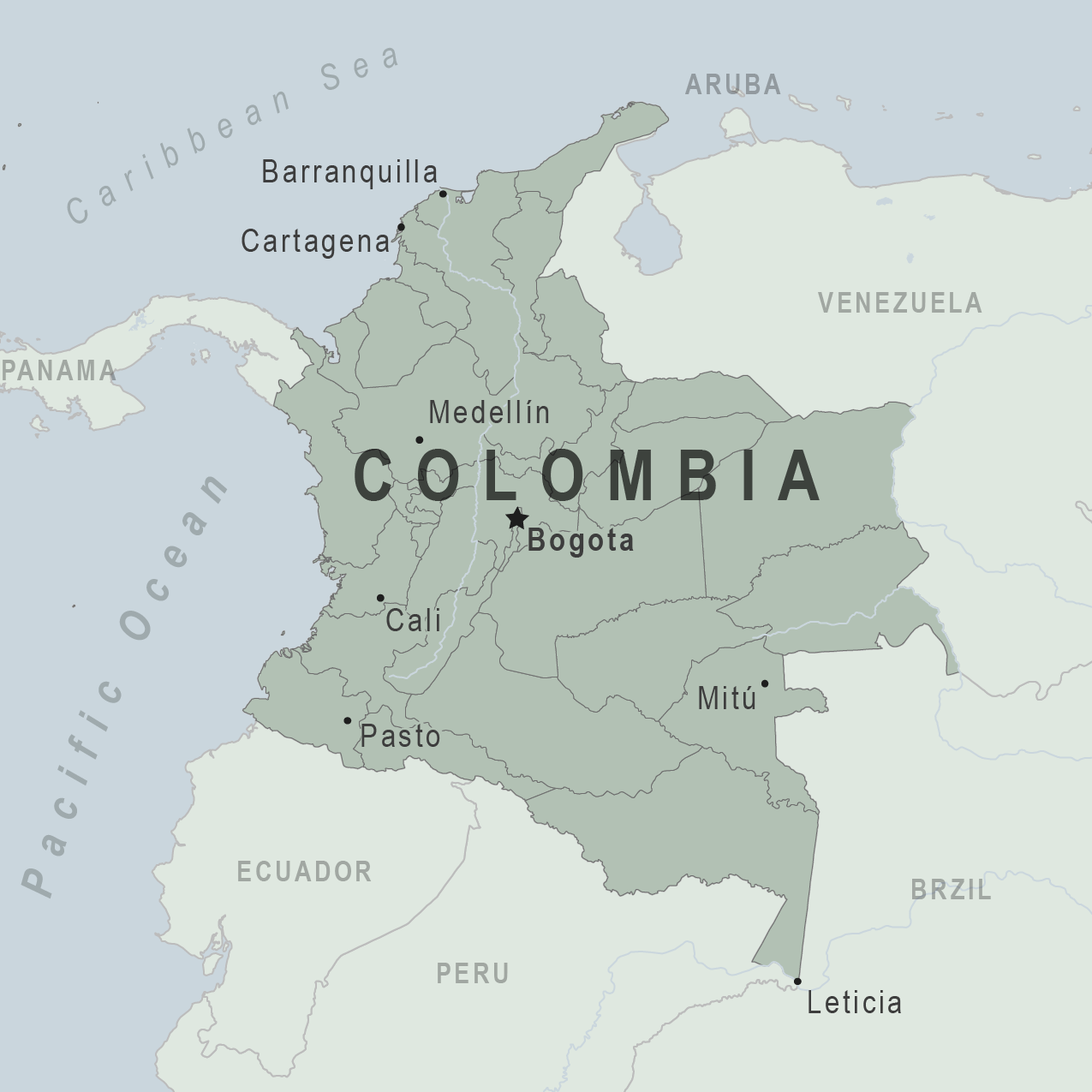
Be aware of current health issues in Colombia. Learn how to protect yourself.
Level 1 Practice Usual Precautions
- Dengue in the Americas February 28, 2024 Dengue is a risk in many parts of Central and South America, Mexico, and the Caribbean. Some countries are reporting increased numbers of cases of the disease. Travelers to the Americas can protect themselves by preventing mosquito bites. Destination List: Argentina, Brazil, Colombia, Costa Rica, French Guiana (France), Guadeloupe, Guatemala, Haiti, Jamaica, Martinique (France), Mexico, Nicaragua, Panama, Paraguay, Peru, Saint Barthelemy, Saint Martin, Turks and Caicos Islands (U.K.)
⇧ Top
Check the vaccines and medicines list and visit your doctor at least a month before your trip to get vaccines or medicines you may need. If you or your doctor need help finding a location that provides certain vaccines or medicines, visit the Find a Clinic page.
Routine vaccines
Recommendations.
Make sure you are up-to-date on all routine vaccines before every trip. Some of these vaccines include
- Chickenpox (Varicella)
- Diphtheria-Tetanus-Pertussis
- Flu (influenza)
- Measles-Mumps-Rubella (MMR)
Immunization schedules
All eligible travelers should be up to date with their COVID-19 vaccines. Please see Your COVID-19 Vaccination for more information.
COVID-19 vaccine
Hepatitis A
Recommended for unvaccinated travelers one year old or older going to Colombia.
Infants 6 to 11 months old should also be vaccinated against Hepatitis A. The dose does not count toward the routine 2-dose series.
Travelers allergic to a vaccine component or who are younger than 6 months should receive a single dose of immune globulin, which provides effective protection for up to 2 months depending on dosage given.
Unvaccinated travelers who are over 40 years old, immunocompromised, or have chronic medical conditions planning to depart to a risk area in less than 2 weeks should get the initial dose of vaccine and at the same appointment receive immune globulin.
Hepatitis A - CDC Yellow Book
Dosing info - Hep A
Hepatitis B
Recommended for unvaccinated travelers younger than 60 years old traveling to Colombia. Unvaccinated travelers 60 years and older may get vaccinated before traveling to Colombia.
Hepatitis B - CDC Yellow Book
Dosing info - Hep B
CDC recommends that travelers going to certain areas of Colombia take prescription medicine to prevent malaria. Depending on the medicine you take, you will need to start taking this medicine multiple days before your trip, as well as during and after your trip. Talk to your doctor about which malaria medication you should take.
Find country-specific information about malaria.
Malaria - CDC Yellow Book
Considerations when choosing a drug for malaria prophylaxis (CDC Yellow Book)
Malaria information for Colombia.
Cases of measles are on the rise worldwide. Travelers are at risk of measles if they have not been fully vaccinated at least two weeks prior to departure, or have not had measles in the past, and travel internationally to areas where measles is spreading.
All international travelers should be fully vaccinated against measles with the measles-mumps-rubella (MMR) vaccine, including an early dose for infants 6–11 months, according to CDC’s measles vaccination recommendations for international travel .
Measles (Rubeola) - CDC Yellow Book
Rabid dogs are commonly found in Colombia. If you are bitten or scratched by a dog or other mammal while in Colombia, there may be limited or no rabies treatment available.
Consider rabies vaccination before your trip if your activities mean you will be around dogs or wildlife.
Travelers more likely to encounter rabid animals include
- Campers, adventure travelers, or cave explorers (spelunkers)
- Veterinarians, animal handlers, field biologists, or laboratory workers handling animal specimens
- Visitors to rural areas
Since children are more likely to be bitten or scratched by a dog or other animals, consider rabies vaccination for children traveling to Colombia.
Rabies - CDC Yellow Book
Recommended for most travelers, especially those staying with friends or relatives or visiting smaller cities or rural areas.
Typhoid - CDC Yellow Book
Dosing info - Typhoid
Yellow Fever
Required for travelers ≥1 year old arriving from Angola, Brazil, Democratic Republic of the Congo, or Uganda; this includes >12-hour airport transits or layovers in any of these countries.
Recommended for all travelers ≥9 months old except as follows. Generally not recommended for travel limited to the cities of Barranquilla, Cali, Cartagena, or Medellín. Not recommended for travel limited to areas >2,300 m (≈7,550 ft) elevation, the archipelago department of San Andrés and Providencia, or the city of Bogotá (the capital).
Yellow Fever - CDC Yellow Book
Avoid contaminated water
Leptospirosis
How most people get sick (most common modes of transmission)
- Touching urine or other body fluids from an animal infected with leptospirosis
- Swimming or wading in urine-contaminated fresh water, or contact with urine-contaminated mud
- Drinking water or eating food contaminated with animal urine
- Avoid contaminated water and soil
Clinical Guidance
Avoid bug bites, chagas disease (american trypanosomiasis).
- Accidentally rub feces (poop) of the triatomine bug into the bug bite, other breaks in the skin, your eyes, or mouth
- From pregnant woman to her baby, contaminated blood products (transfusions), or contaminated food or drink.
- Avoid Bug Bites
Chagas disease
- Mosquito bite
Leishmaniasis
- Sand fly bite
- An infected pregnant woman can spread it to her unborn baby
Airborne & droplet
- Breathing in air or accidentally eating food contaminated with the urine, droppings, or saliva of infected rodents
- Bite from an infected rodent
- Less commonly, being around someone sick with hantavirus (only occurs with Andes virus)
- Avoid rodents and areas where they live
- Avoid sick people
Tuberculosis (TB)
- Breathe in TB bacteria that is in the air from an infected and contagious person coughing, speaking, or singing.
Learn actions you can take to stay healthy and safe on your trip. Vaccines cannot protect you from many diseases in Colombia, so your behaviors are important.
Eat and drink safely
Food and water standards around the world vary based on the destination. Standards may also differ within a country and risk may change depending on activity type (e.g., hiking versus business trip). You can learn more about safe food and drink choices when traveling by accessing the resources below.
- Choose Safe Food and Drinks When Traveling
- Water Treatment Options When Hiking, Camping or Traveling
- Global Water, Sanitation and Hygiene | Healthy Water
- Avoid Contaminated Water During Travel
You can also visit the Department of State Country Information Pages for additional information about food and water safety.
Prevent bug bites
Bugs (like mosquitoes, ticks, and fleas) can spread a number of diseases in Colombia. Many of these diseases cannot be prevented with a vaccine or medicine. You can reduce your risk by taking steps to prevent bug bites.
What can I do to prevent bug bites?
- Cover exposed skin by wearing long-sleeved shirts, long pants, and hats.
- Use an appropriate insect repellent (see below).
- Use permethrin-treated clothing and gear (such as boots, pants, socks, and tents). Do not use permethrin directly on skin.
- Stay and sleep in air-conditioned or screened rooms.
- Use a bed net if the area where you are sleeping is exposed to the outdoors.
What type of insect repellent should I use?
- FOR PROTECTION AGAINST TICKS AND MOSQUITOES: Use a repellent that contains 20% or more DEET for protection that lasts up to several hours.
- Picaridin (also known as KBR 3023, Bayrepel, and icaridin)
- Oil of lemon eucalyptus (OLE) or para-menthane-diol (PMD)
- 2-undecanone
- Always use insect repellent as directed.
What should I do if I am bitten by bugs?
- Avoid scratching bug bites, and apply hydrocortisone cream or calamine lotion to reduce the itching.
- Check your entire body for ticks after outdoor activity. Be sure to remove ticks properly.
What can I do to avoid bed bugs?
Although bed bugs do not carry disease, they are an annoyance. See our information page about avoiding bug bites for some easy tips to avoid them. For more information on bed bugs, see Bed Bugs .
For more detailed information on avoiding bug bites, see Avoid Bug Bites .
Stay safe outdoors
If your travel plans in Colombia include outdoor activities, take these steps to stay safe and healthy during your trip.
- Stay alert to changing weather conditions and adjust your plans if conditions become unsafe.
- Prepare for activities by wearing the right clothes and packing protective items, such as bug spray, sunscreen, and a basic first aid kit.
- Consider learning basic first aid and CPR before travel. Bring a travel health kit with items appropriate for your activities.
- If you are outside for many hours in heat, eat salty snacks and drink water to stay hydrated and replace salt lost through sweating.
- Protect yourself from UV radiation : use sunscreen with an SPF of at least 15, wear protective clothing, and seek shade during the hottest time of day (10 a.m.–4 p.m.).
- Be especially careful during summer months and at high elevation. Because sunlight reflects off snow, sand, and water, sun exposure may be increased during activities like skiing, swimming, and sailing.
- Very cold temperatures can be dangerous. Dress in layers and cover heads, hands, and feet properly if you are visiting a cold location.
Stay safe around water
- Swim only in designated swimming areas. Obey lifeguards and warning flags on beaches.
- Practice safe boating—follow all boating safety laws, do not drink alcohol if driving a boat, and always wear a life jacket.
- Do not dive into shallow water.
- Do not swim in freshwater in developing areas or where sanitation is poor.
- Avoid swallowing water when swimming. Untreated water can carry germs that make you sick.
- To prevent infections, wear shoes on beaches where there may be animal waste.
Leptospirosis, a bacterial infection that can be spread in fresh water, is found in Colombia. Avoid swimming in fresh, unchlorinated water, such as lakes, ponds, or rivers.
Keep away from animals
Most animals avoid people, but they may attack if they feel threatened, are protecting their young or territory, or if they are injured or ill. Animal bites and scratches can lead to serious diseases such as rabies.
Follow these tips to protect yourself:
- Do not touch or feed any animals you do not know.
- Do not allow animals to lick open wounds, and do not get animal saliva in your eyes or mouth.
- Avoid rodents and their urine and feces.
- Traveling pets should be supervised closely and not allowed to come in contact with local animals.
- If you wake in a room with a bat, seek medical care immediately. Bat bites may be hard to see.
All animals can pose a threat, but be extra careful around dogs, bats, monkeys, sea animals such as jellyfish, and snakes. If you are bitten or scratched by an animal, immediately:
- Wash the wound with soap and clean water.
- Go to a doctor right away.
- Tell your doctor about your injury when you get back to the United States.
Consider buying medical evacuation insurance. Rabies is a deadly disease that must be treated quickly, and treatment may not be available in some countries.
Reduce your exposure to germs
Follow these tips to avoid getting sick or spreading illness to others while traveling:
- Wash your hands often, especially before eating.
- If soap and water aren’t available, clean hands with hand sanitizer (containing at least 60% alcohol).
- Don’t touch your eyes, nose, or mouth. If you need to touch your face, make sure your hands are clean.
- Cover your mouth and nose with a tissue or your sleeve (not your hands) when coughing or sneezing.
- Try to avoid contact with people who are sick.
- If you are sick, stay home or in your hotel room, unless you need medical care.
Avoid sharing body fluids
Diseases can be spread through body fluids, such as saliva, blood, vomit, and semen.
Protect yourself:
- Use latex condoms correctly.
- Do not inject drugs.
- Limit alcohol consumption. People take more risks when intoxicated.
- Do not share needles or any devices that can break the skin. That includes needles for tattoos, piercings, and acupuncture.
- If you receive medical or dental care, make sure the equipment is disinfected or sanitized.
Know how to get medical care while traveling
Plan for how you will get health care during your trip, should the need arise:
- Carry a list of local doctors and hospitals at your destination.
- Review your health insurance plan to determine what medical services it would cover during your trip. Consider purchasing travel health and medical evacuation insurance.
- Carry a card that identifies, in the local language, your blood type, chronic conditions or serious allergies, and the generic names of any medications you take.
- Some prescription drugs may be illegal in other countries. Call Colombia’s embassy to verify that all of your prescription(s) are legal to bring with you.
- Bring all the medicines (including over-the-counter medicines) you think you might need during your trip, including extra in case of travel delays. Ask your doctor to help you get prescriptions filled early if you need to.
Many foreign hospitals and clinics are accredited by the Joint Commission International. A list of accredited facilities is available at their website ( www.jointcommissioninternational.org ).
In some countries, medicine (prescription and over-the-counter) may be substandard or counterfeit. Bring the medicines you will need from the United States to avoid having to buy them at your destination.
Malaria is a risk in some parts of Colombia. If you are going to a risk area, fill your malaria prescription before you leave, and take enough with you for the entire length of your trip. Follow your doctor’s instructions for taking the pills; some need to be started before you leave.
Select safe transportation
Motor vehicle crashes are the #1 killer of healthy US citizens in foreign countries.
In many places cars, buses, large trucks, rickshaws, bikes, people on foot, and even animals share the same lanes of traffic, increasing the risk for crashes.
Be smart when you are traveling on foot.
- Use sidewalks and marked crosswalks.
- Pay attention to the traffic around you, especially in crowded areas.
- Remember, people on foot do not always have the right of way in other countries.
Riding/Driving
Choose a safe vehicle.
- Choose official taxis or public transportation, such as trains and buses.
- Ride only in cars that have seatbelts.
- Avoid overcrowded, overloaded, top-heavy buses and minivans.
- Avoid riding on motorcycles or motorbikes, especially motorbike taxis. (Many crashes are caused by inexperienced motorbike drivers.)
- Choose newer vehicles—they may have more safety features, such as airbags, and be more reliable.
- Choose larger vehicles, which may provide more protection in crashes.
Think about the driver.
- Do not drive after drinking alcohol or ride with someone who has been drinking.
- Consider hiring a licensed, trained driver familiar with the area.
- Arrange payment before departing.
Follow basic safety tips.
- Wear a seatbelt at all times.
- Sit in the back seat of cars and taxis.
- When on motorbikes or bicycles, always wear a helmet. (Bring a helmet from home, if needed.)
- Avoid driving at night; street lighting in certain parts of Colombia may be poor.
- Do not use a cell phone or text while driving (illegal in many countries).
- Travel during daylight hours only, especially in rural areas.
- If you choose to drive a vehicle in Colombia, learn the local traffic laws and have the proper paperwork.
- Get any driving permits and insurance you may need. Get an International Driving Permit (IDP). Carry the IDP and a US-issued driver's license at all times.
- Check with your auto insurance policy's international coverage, and get more coverage if needed. Make sure you have liability insurance.
- Avoid using local, unscheduled aircraft.
- If possible, fly on larger planes (more than 30 seats); larger airplanes are more likely to have regular safety inspections.
- Try to schedule flights during daylight hours and in good weather.
Medical Evacuation Insurance
If you are seriously injured, emergency care may not be available or may not meet US standards. Trauma care centers are uncommon outside urban areas. Having medical evacuation insurance can be helpful for these reasons.
Helpful Resources
Road Safety Overseas (Information from the US Department of State): Includes tips on driving in other countries, International Driving Permits, auto insurance, and other resources.
The Association for International Road Travel has country-specific Road Travel Reports available for most countries for a minimal fee.
Maintain personal security
Use the same common sense traveling overseas that you would at home, and always stay alert and aware of your surroundings.
Before you leave
- Research your destination(s), including local laws, customs, and culture.
- Monitor travel advisories and alerts and read travel tips from the US Department of State.
- Enroll in the Smart Traveler Enrollment Program (STEP) .
- Leave a copy of your itinerary, contact information, credit cards, and passport with someone at home.
- Pack as light as possible, and leave at home any item you could not replace.
While at your destination(s)
- Carry contact information for the nearest US embassy or consulate .
- Carry a photocopy of your passport and entry stamp; leave the actual passport securely in your hotel.
- Follow all local laws and social customs.
- Do not wear expensive clothing or jewelry.
- Always keep hotel doors locked, and store valuables in secure areas.
- If possible, choose hotel rooms between the 2nd and 6th floors.
Healthy Travel Packing List
Use the Healthy Travel Packing List for Colombia for a list of health-related items to consider packing for your trip. Talk to your doctor about which items are most important for you.
Why does CDC recommend packing these health-related items?
It’s best to be prepared to prevent and treat common illnesses and injuries. Some supplies and medicines may be difficult to find at your destination, may have different names, or may have different ingredients than what you normally use.
If you are not feeling well after your trip, you may need to see a doctor. If you need help finding a travel medicine specialist, see Find a Clinic . Be sure to tell your doctor about your travel, including where you went and what you did on your trip. Also tell your doctor if you were bitten or scratched by an animal while traveling.
If your doctor prescribed antimalarial medicine for your trip, keep taking the rest of your pills after you return home. If you stop taking your medicine too soon, you could still get sick.
Malaria is always a serious disease and may be a deadly illness. If you become ill with a fever either while traveling in a malaria-risk area or after you return home (for up to 1 year), you should seek immediate medical attention and should tell the doctor about your travel history.
For more information on what to do if you are sick after your trip, see Getting Sick after Travel .
Map Disclaimer - The boundaries and names shown and the designations used on maps do not imply the expression of any opinion whatsoever on the part of the Centers for Disease Control and Prevention concerning the legal status of any country, territory, city or area or of its authorities, or concerning the delimitation of its frontiers or boundaries. Approximate border lines for which there may not yet be full agreement are generally marked.
Other Destinations
If you need help finding travel information:
Message & data rates may apply. CDC Privacy Policy
File Formats Help:
- Adobe PDF file
- Microsoft PowerPoint file
- Microsoft Word file
- Microsoft Excel file
- Audio/Video file
- Apple Quicktime file
- RealPlayer file
- Zip Archive file
Exit Notification / Disclaimer Policy
- The Centers for Disease Control and Prevention (CDC) cannot attest to the accuracy of a non-federal website.
- Linking to a non-federal website does not constitute an endorsement by CDC or any of its employees of the sponsors or the information and products presented on the website.
- You will be subject to the destination website's privacy policy when you follow the link.
- CDC is not responsible for Section 508 compliance (accessibility) on other federal or private website.

Colombia Travel Guide
Looking for an in-depth Colombia travel guide ?
Then you’re in the right place!
Forget what you’ve seen on the news or on Netflix: Colombia is a gorgeous, culturally-rich country that is absolutely worth visiting.
As crime rates have decreased in recent years, tourism to Colombia has steadily increased, with more and more travelers singing the praises of this exciting, diverse destination.
There’s a little something for every kind of traveler in Colombia, from outdoor adventurers to history buffs to coffee addicts.
Not sure where to start? We’ve got you covered.
Colombia is home to several world-class cities that blend historic charm with modern sophistication.
Bogota, the country’s capital, is home to several top museums, a vibrant culture, and delicious food — both on the street and in top restaurants.
Cartagena is a charming Old World city by the sea, featuring a walled colonial historic district that will transport you back in time.
And Medellin , once known for its role in the drug trade, is now home to a thriving art scene with tons of awesome shops and restaurants.
Each city also makes a great home base for day trips to top attractions like Tayrona National Park and Guatape. Read on to learn more.
Colombia’s natural wonders are also absolutely worth exploring. From beautiful beaches to the lush rainforests of the Amazon, there’s much to experience in this beautiful country.
Outside of the city of Leticia, you can embark on a cruise down the Amazon River for the adventure of a lifetime, interacting with some of the area’s unique wildlife (although ideally from a safe distance!).
The country’s Pacific Coast is home to some of the best whale watching in the world from July through November.
Head to Bahia Solano to see humpback whales migrate from the South Pole – it’s a truly incredible sight.
And of course, you can’t miss the beaches of Tayrona National Park , complete with white sand, clear blue waters, and aerial hammocks perfect for relaxing.
Keep reading to dive into resources that will help you with planning a trip to Colombia in South America.
Note: This ultimate guide to Colombia travel contains affiliate links to trusted partners!

Colombia Map
Use this Colombia travel map to begin planning your trip to this incredible country!
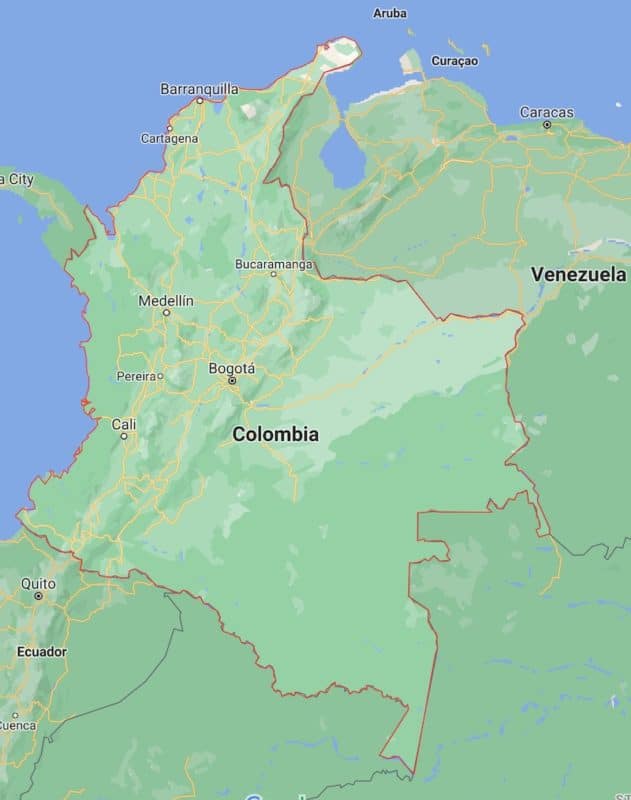
Click here for an interactive Google Map version of the above graphic.
Amazon Travel
Looking for visit the Amazon from Colombia? Don’t miss:
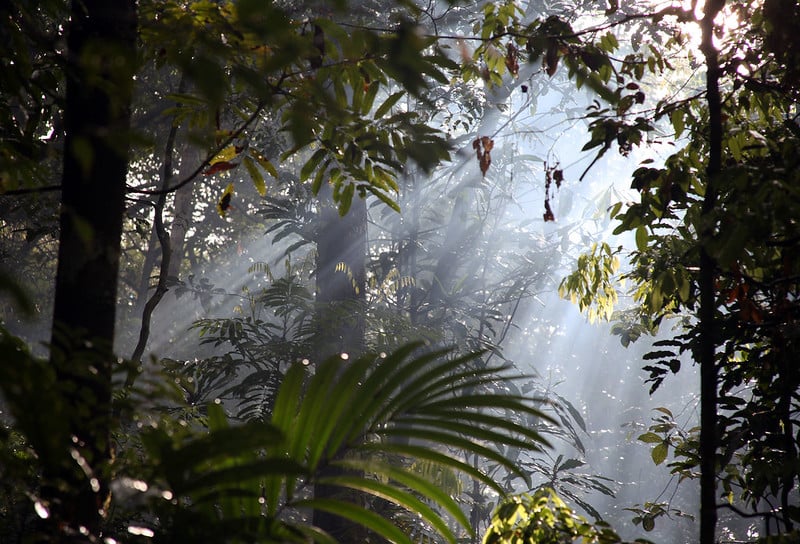
Anacondas, Piranhas And Pink Dolphins, Oh My!: Exploring The Amazon Jungle From Colombia
Bogota Travel Guide
The following Bogota tourist information can help you plan the perfect trip!

Colombia Travel: Exploring Bogota By Bike
Cartagena Travel Guide
If you’re looking for a Cartagena guide for your trip, check out:
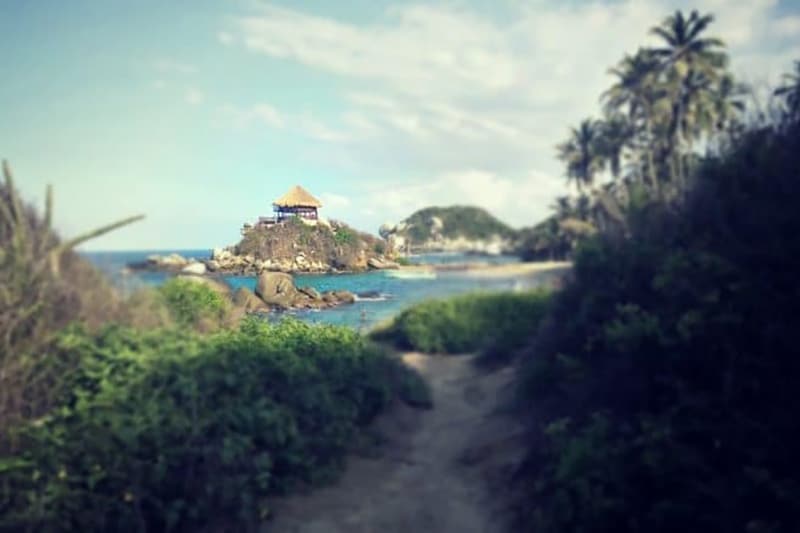
3 Amazing Day Trips From Cartagena, Colombia
Colombia Travel Tips
The following Colombia travel advice can help you plan the perfect trip!
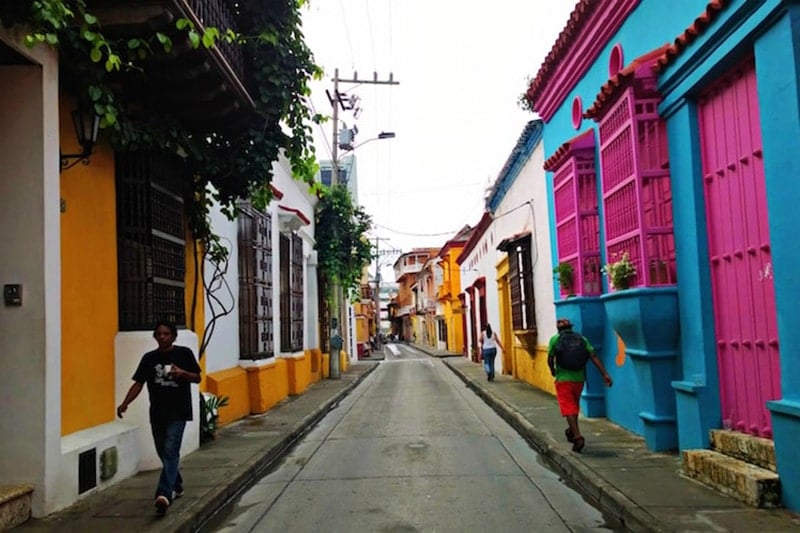
Is Colombia Safe? Everything You Need To Know!

10 Ways Colombia Stole My Heart

10 Things You Didn’t Know About Colombia
Medellin Travel Guide
Looking for a Medellin city guide ? These posts can help!
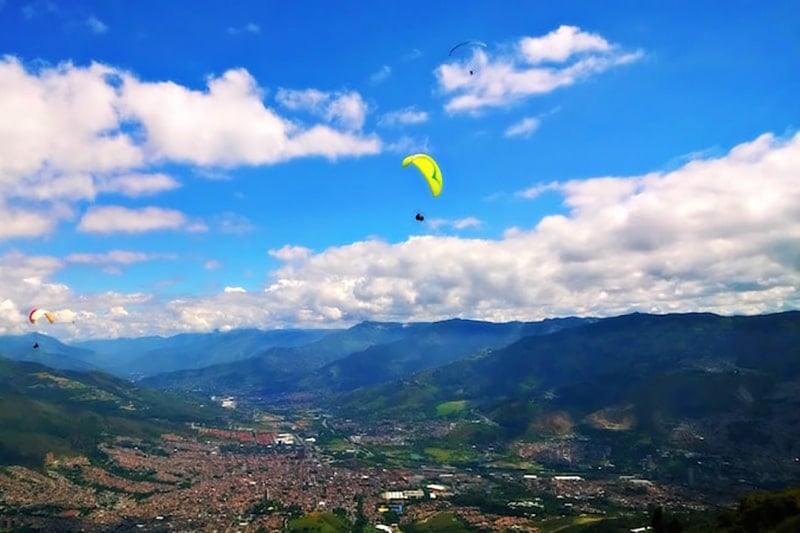
Colombia Adventure: Paragliding In Medellin (Epic!)
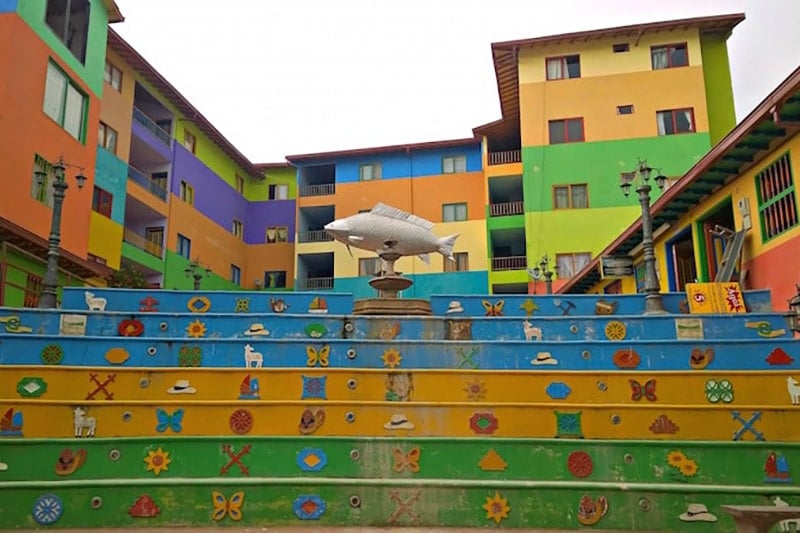
3 Amazing Day Trips From Medellin, Colombia
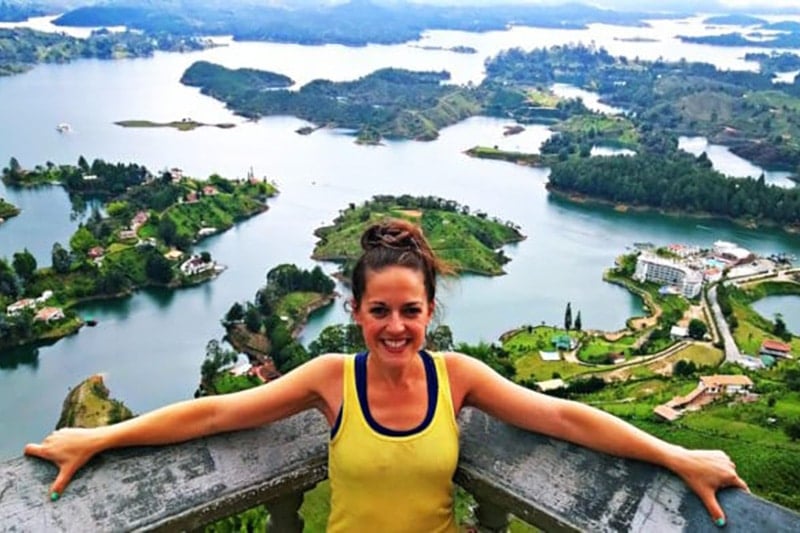
El Peñol & Guatape: The Perfect Day Trip From Medellin
Santa Marta Travel Guide
The following travel guides can help you plan an epic trip to Santa Marta in Colombia !
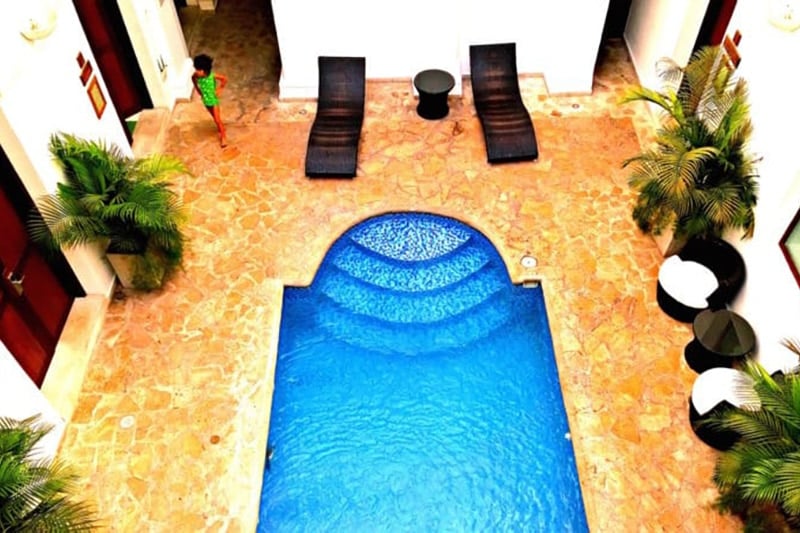
Experiencing The World’s Best Hostel In Santa Marta, Colombia
Tayrona National Park
Looking to experience Colombia travel and adventure ? Don’t miss Tayrona National Park!
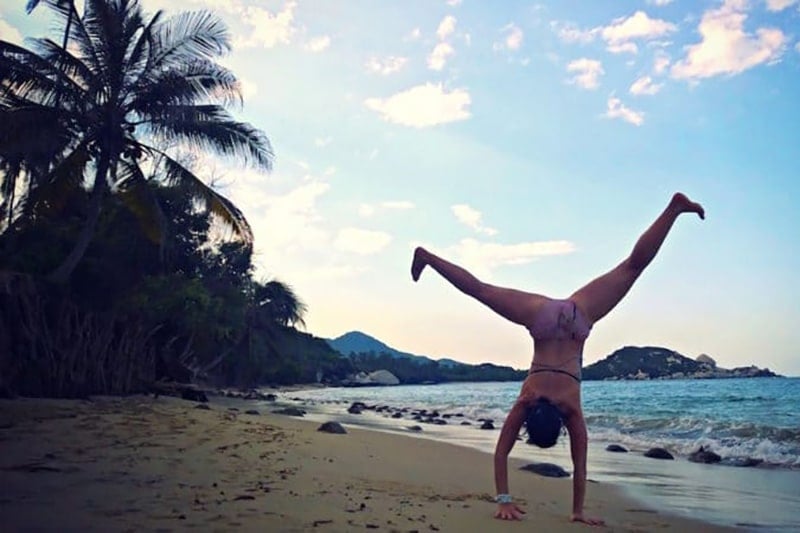
How To Visit Tayrona National Park (& Have An Amazing Time!)
Traveling In South America
These guides share Colombia travel advice as well as tips for exploring South America in general!
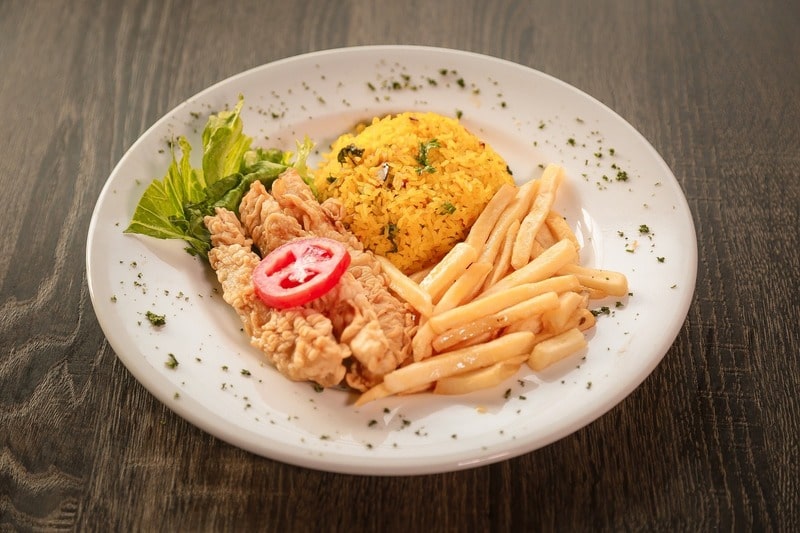
14 Essential Tips For Backpacking South America

My Most Ridiculous Bus Encounters Backpacking South America
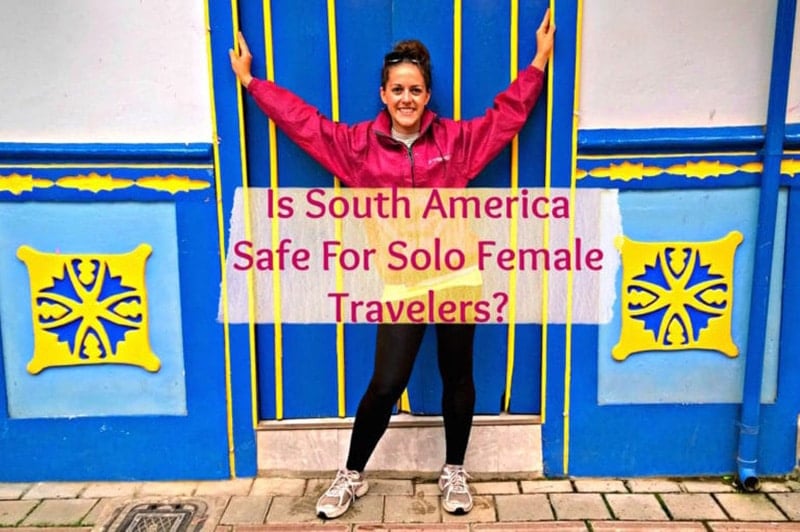
Is South America Safe For Solo Female Travelers?
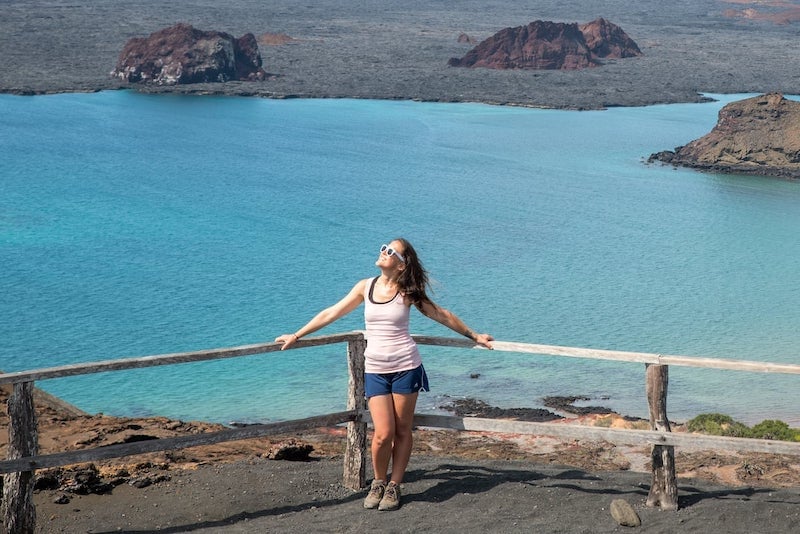
21 Best Places For Solo Travel In South America
Best Colombia Tours
Explore local culture with a Colombian tour guide through these unique excursions:
- Full-Day Rosario Islands Including Barú, Cholon and Playa Blanca from Cartagena
- Freedom Tour of Palenque in Cartagena
- Lodotherapy in the Totumo Volcano with Visit to Galerazamba from Cartagena
- Full-Day Guatavita and Salt Cathedral from Bogota
- Full-Day Guatapé (Pueblo de Zocalos) & Piedra del Peño lfrom Medellín
- The Dark Days: Pablo Escobar and The New Medellin Tour
- Medellin ATV Tour
Colombia Hotels
Click here to browse the best Colombia travel hotels!
Prefer self-contained stays?
Click here to check out unique local rentals !
You can also use this map to search for local stays:
Colombia Travel Insurance
It doesn’t matter if you’re traveling solo or with a group on a Colombia tour. When visiting Colombia — or any other country in the world — make sure to get travel insurance to protect your health and safety.
In my opinion, the best travel medical insurance for travelers is SafetyWing as they’ve got a large network and offer both short-term and long-term coverage — including coverage if you’re traveling for months as well as limited coverage in your home country).
Additionally, SafetyWing is budget-friendly and offers $250,000 worth of coverage with just one low overall deductible of $250.
With coverage, you’ll have peace of mind as you embark on your Colombia travel itinerary.
Click my referral link here to price out travel insurance for your trip in just a few clicks .
Colombia Travel Guide FAQ
Below, find answers to frequently asked questions about traveling in Colombia .
Q: What are the best places to visit in Colombia?
One of the most popular places to visit in Colombia is the country’s Caribbean coast. Aside from gorgeous beaches, this area has tons to offer travelers looking for some sun-soaked adventures.
Cartagena , one of the largest cities in the area, sits right on the coast and blends Old World charm with the exciting vibe of a modern, beachfront city. Here you can explore one of the best-preserved colonial cities in Latin America, full of gorgeous churches and bright-colored buildings that will make you feel like you’ve stepped back in time.
Not far from the city is Tayrona National Park , where you can lounge on the idyllic beaches or trek through the lush jungle.
You can also take a day trip to El Tutomo Volcano , located just an hour from Cartegena. Take a dip in the mud baths and emerge with incredibly soft skin and hair (as well as a few new friends!). For a little extra R&R, book a mud massage or mud wash!
Located in Central Colombia, the city of Medellin has quickly become a top spot for travelers. Featuring gorgeous colonial architecture, beautiful parks, and a trendy art scene, Medellin has much to offer every kind of traveler.
One of the city’s top attractions is the Plaza Botero , a park dedicated to artist Fernando Botero, featuring 23 of the artist’s sculptures in the open air. You can see more of his work, as well as three floors worth of Colombian art, at the Museum of Antioquia .
Want to see some of the best views of Medellin? Hop on the Medellin Metrocable , a cablecar line offering amazing panoramic views of the city.
You can also take a stroll through the trendy neighborhood of El Poblado and search for the best cup of coffee in the city.
For a great day trip , head to Guatape , a small town featuring a 740-step monolith that you can climb for incredible views of the surrounding area. The town is also a top spot for outdoor adventurers, with opportunities for kayaking, hiking, swimming, and more.
Not far from Medellin is Bogota , the capital of Colombia. Featuring colorful street art and colonial architecture, the city is the perfect spot for a bike tour . This is a great way to get to know the city and its culture, as you’ll wander through colorful markets, stop to play traditional games, and get to know a bit about the country’s tumultuous history.
In the city’s historic center, La Candelaria , you’ll find attractions like the Gold Museum , an entire museum dedicated to the history, art, and pursuit of one of the most sought-after metals in the world.
At the National Museum of Colombia , you’ll find over 20,000 objects and artifacts that tell the story of the country’s rich history.
And for some incredible views of the city, climb up to the church at Monserrate , Bogota’s tallest mountain.
Q: Is Colombia expensive for tourists?
Colombia is a fairly inexpensive destination. You can easily find inexpensive accommodation, food, and transportation options throughout the country, particularly if you avoid more tourist-heavy areas.
The average traveler spends about $36 USD per day in Colombia on accommodation, transportation, food, activities, and other travel expenses.
Q: What is the best way to travel around Colombia?
Air travel is considered the best way to get around Colombia. Colombia is a fairly large country so you can save a ton of time traveling between cities by plane.
Domestic flights are also pretty inexpensive, sometimes only a little more than a bus ticket on the same route. Check out low-cost carriers like Viva Air that often offer great deals on flights; if you’re traveling from the U.S., Viva even offers flights from Miami!
Buses are also a great way to get around, particularly if you’re traveling somewhere off the beaten path, as you’ll find routes servicing almost every town in the country.
While buses are ubiquitous in Colombia, they are not always the most relaxing way to travel. Bus drivers have been known to blast music throughout the bus or crank up the sound on whatever movie they’re showing.
You also may have to get off the bus mid-journey for at a military checkpoint and could be subject to a security inspection. If you opt for the bus, don’t expect to sleep through the trip.
Q: Is Colombia safe for travel?
Colombia can get a bad rap when it comes to safety but it has come a long way in recent years. Violent crimes like muggings and kidnappings have decreased significantly and while petty theft does happen, it’s no reason to avoid the country altogether.
It’s a good idea to stay somewhere with 24-hour security so that you have someone to turn to if something goes wrong. You’ll also want to heed the usual advice for avoiding petty theft abroad — don’t show any signs of obvious wealth, keep your phone and any other valuables out of sight and in a safe place to avoid pickpockets , and always be aware of your surroundings.
This is also a place where you don’t want to go out alone at night, particularly if you’re a solo female traveler . If you’re out late, get an Uber back to your accommodation or walk back in a group.
Q: What do I need to know before going to Colombia?
One thing to know before going to Colombia is that only about 4% of the country’s population speaks English. It’s definitely a good idea to learn the language or at least a few Spanish phrases before your trip so that you can communicate with the locals.
At the very least, make sure you have a good translator app on your phone so that you’re not stuck at shops and restaurants. Learning a few phrases in the native language also shows a level of respect for the culture of the country you’re visiting. Time to get that Duoling streak back up!
Once you get to Colombia, you’ll quickly learn that cash is king in this country. Some higher-end shops and hotels will take credit cards but in most cases, you’ll need cash.
The flip side of this is that it’s not exactly safe to carry a lot of cash with you in Colombia. If there’s a lockbox or safe at your accommodation, keep some cash there and just carry as much as you need for the day.
Note, too, that more remote destinations like Tayrona National Park do not have any ATMs, so you’ll want to make sure you have enough cash for the duration of your stay before you head out.
It’s also important to look where you’re going in Colombia. This probably seems pretty obvious but it’s a particularly important tip here.
The sidewalks and roads in Colombia are known to have large cracks and holes that can make it easy to trip and fall. Move carefully (particularly at night!) and watch out for any loose bricks, uneven pavement, or cracks that could send you to the doctor.
Q: How many days should you spend in Colombia?
Most experts suggest spending about 10 days in Colombia to really maximize your time in the country.
There’s a lot to see in Colombia and a 10-day trip will allow you to spend a little time in most of the country’s top destinations while giving you ample time to travel from place to place.
Q: What is the best month to visit Colombia?
While the weather in Colombia varies from place to place, the country is widely considered a year-round destination.
December through March is considered Colombia’s high season, with much of the country experiencing pleasant, sunny weather.
December and January are the country’s busiest months for tourism, so if you’re planning on visiting during these months be sure to book your travel and accommodations far in advance.
September through November is technically Colombia’s low season, but the weather is generally pretty dry. These months are definitely worth considering if you want to avoid the crowds and save a little money on travel expenses.
Q: Do I need a Colombia travel visa?
Travelers from the United States, United Kingdom, Canada, European Union, and Australia do not need a visa to enter Colombia. Travelers from most South American nations including Argentina, Bolivia, Brazil, Chile, Ecuador, Paraguay, Peru, Uruguay, and Venezuela simply need a national ID to enter the country and can leave their passports at home.
It’s recommended to view your country’s Colombia International Travel Information page for the most up-to-date information on entry and exit rules and Colombia Travel Requirements. You can also contact the Consulate General of Colombia.
Q: Where is Colombia?
Colombia is located in northwestern South America. It shares borders with Panama (northwest), Venezuela and Brazil (east), and Peru and Ecuador (south).
Q: Are credit cards accepted in Colombia?
Credit cards — particularly Visa and Mastercard — are typically accepted in big cities and tourist areas. That being said, Colombia is a country where many places are cash-only, so make sure to always have some on you.
Q: Can you drink the tap water in Colombia?
The tap water is generally safe to drink in most places in Colombia as long as your destination isn’t too remote. That being said, it’s recommended to check with your hotel to be sure.
Q: What is the local currency in Colombia?
The local currency in Colombia is the Colombian Peso.
What would you add to this Colombia travel guide?

Enjoyed this ultimate Colombia travel guide? Pin it for later!
Colombia Travel Tips: 16 Things to Know Before You Travel to Colombia
Colombia was once known for violence, cartels, kidnappings, and drugs. Nowadays it’s the new hotspot in South America! These Colombia travel tips will help you plan your trip.
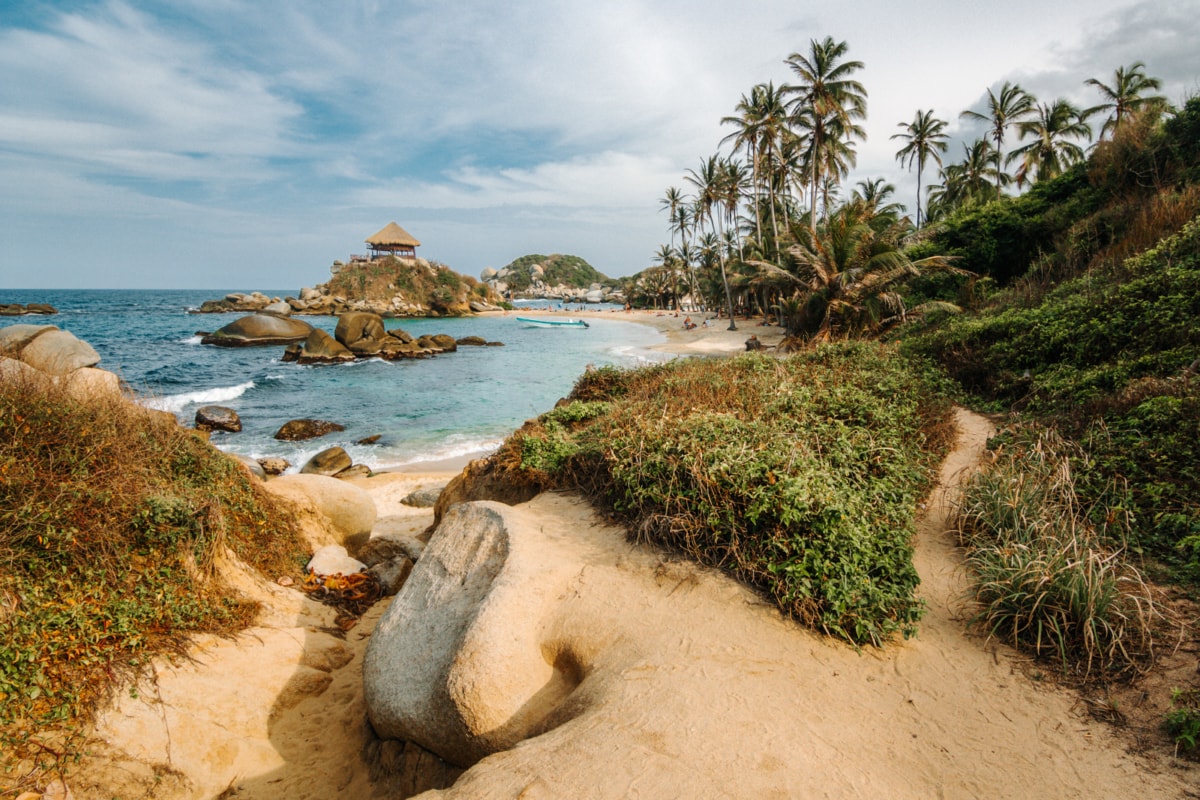
There was a time when Colombia was the place in South America that people skipped over, avoided, and detoured around. Known for violence, cartels, kidnappings, and drugs, it was a destination on very few people’s bucket lists. Today it’s a different story.
A decade ago most people couldn’t point out Colombia on a map—now it has become the new star of South America. Having thrown off its troubled past, the country is now a welcoming place to travelers of all types.
From nature to adventure sports, from incredible coffee to world-class nightlife, Colombia really does have something for everyone.
That being said, it’s still a rather new destination—it can be helpful to have a bit of guidance and a few tips when planning your first trip to Colombia. This travel guide is a compilation of our top Colombia tips to make sure you enjoy everything this incredible country has to offer.
You Probably Don’t Need a Visa and Can Stay Up to 180 Days
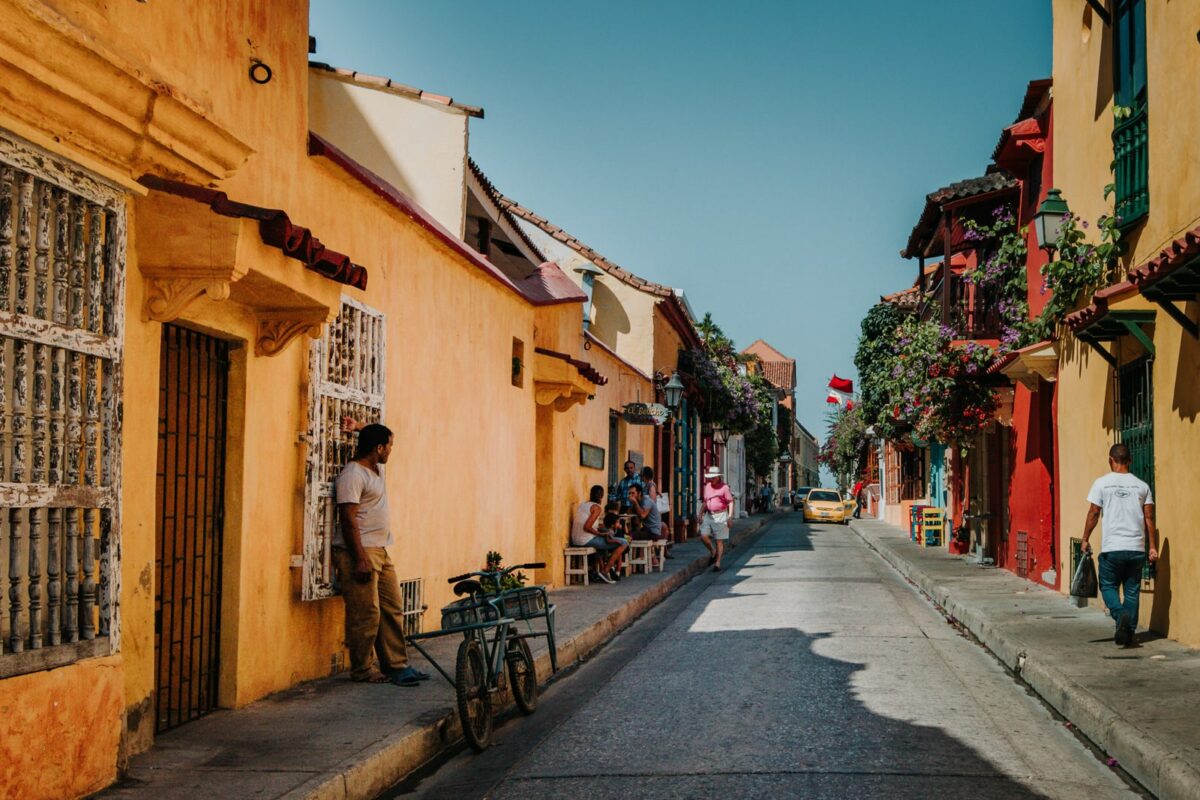
Most people who visit Colombia get to enjoy visa-free travel. This is available for citizens of 90+ countries including Canada, the US, Australia, and all of Europe (you can search other countries here ). On entry, an automatic 90-day tourist permit will be given to most visitors.
While the 90-day entry stamp is standard, the exact number of days is up to the discretion of the immigration officer. Make sure you double-check how many days the officer wrote in your passport, just in case.
Either way, if you come from one of the visa-free countries, you are entitled to both the initial 90-day entry permit as well as an additional 90-day extension. This means you could potentially spend up to 180 days out of the year in Colombia without needing a visa. The 180 days rule applies to both the calendar year and consecutive days in the country.
Extending the initial tourist permit is a very simple process without much planning. One option is to leave the country and return, allowing you to get a new stamp. The other option is to extend your permit while in Colombia. As of 2020, this can now be done completely online via the Migracion Colombia website.
For most people visiting Colombia, the 90-day tourist permit is more than enough. On the other hand, Colombia’s tourism slogan was, “The only risk is wanting to stay.” If you find yourself wanting a bit more time to explore all that Colombia has to offer, those 180 days/year of visa-free travel might come in handy.
You’ll Want To Brush Up On Your High School Spanish
Knowing even a bit of Spanish can come in incredibly handy here. Colombia travel hasn’t been as prolific as travel elsewhere on the continent, so you’ll find that fewer people speak English than in many other places in South America .
Overall, Colombia is considered a country with low English proficiency . You can definitely get by without much Spanish, especially in the larger cities like Cartagena or Medellin. Getting further off the beaten track, though? You’ll find some Spanish much more necessary. At the very least, you should learn how to read a bit of Spanish.
Unless you stick to a very guided tour, you’ll also find most of your day-to-day interactions with locals require basic Spanish. From taxi drivers to waiters, you’ll need either some level of Spanish or a really good translation app.
Colombians, as a whole, are also incredibly friendly. Knowing a bit of the local language can help make your trip a lot more fun and give you a chance to meet more locals. Consider brushing up on your skills, even if just a bit, before you leave for Colombia.
Or If You Want to Learn, Colombia is a Great Place to Study Spanish
If your level of Spanish doesn’t extend much past basic greetings, don’t worry! You don’t need to cancel your trip. Colombia is actually one of the best places in Latin America to learn Spanish.
The standard Colombian accent is often said to be a bit easier for new learners to pick up. While there is a lot of slang, the accent (especially in Bogota) is considered very neutral and clear for non-native speakers.
As mentioned above, Colombia also doesn’t have as many English speakers as some other Latin American countries. This means you will have even more opportunities to practice what you’re learning in your day-to-day activities with locals.
You’ll find language schools throughout Colombia. Most offer day, week, or even month-long programs. There are also options to combine your studies with a traditional home-stay or volunteer program. Some schools even offer a combination of Spanish and salsa dance courses to get a full feel for the Colombian experience. Make sure you read up on your options and check for reviews before committing.
It’s One of the Most Diverse Places on Earth
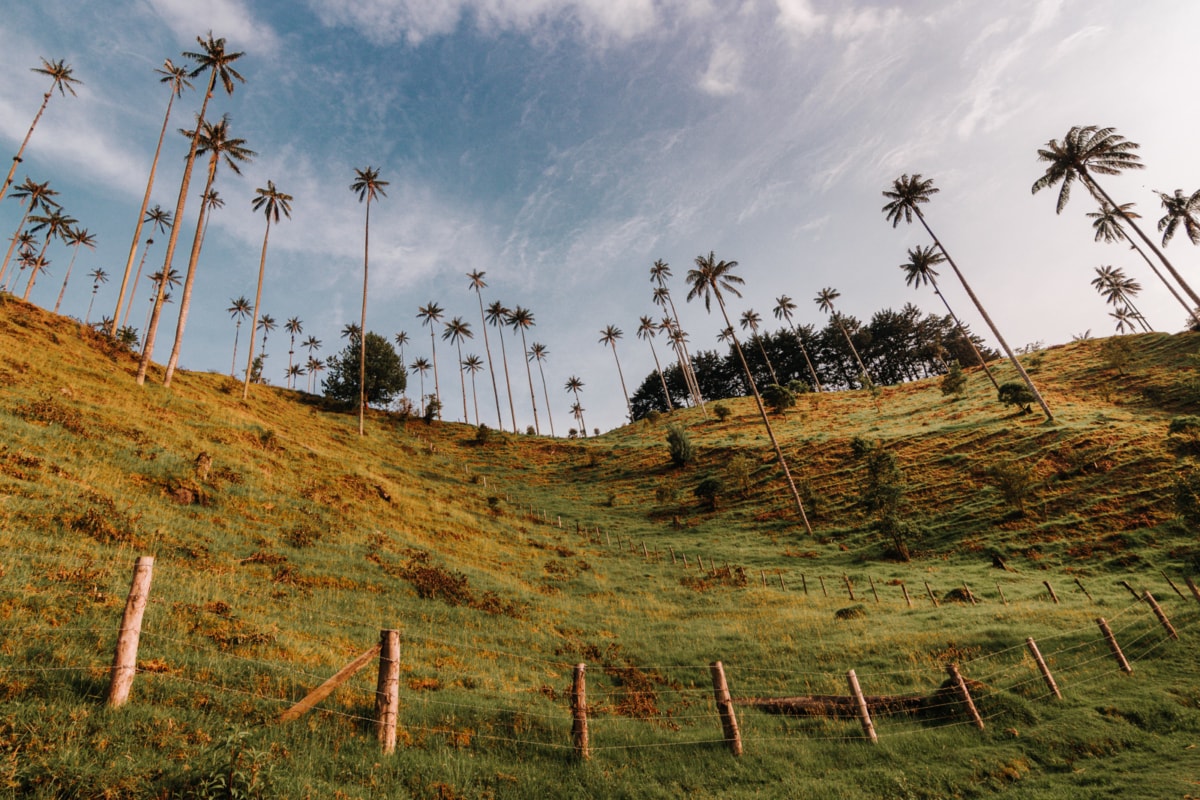
Did you know Colombia is actually the second most diverse place in the world, after Brazil? When you take into account size though, it actually comes out on top as the most diverse country in the world by area.
If Earth’s biodiversity were a country, it could be called Colombia.
National Geographic
This isn’t hard to believe once you start exploring a bit of Colombia yourself. From the Pacific to the Caribbean, from the Amazon Jungle to the high, snow-capped Andes, Colombia has a bit of everything.
In fact, the country has over 8,000 labeled ecosystems , protected by 59 different nationally designated protected areas, including national parks and reserves. There are over 50,000 known species of animals and/or plants in Colombia, with 9,000+ being found nowhere else in the world.
It’s not just the biodiversity that makes Colombia special, though. The people of Colombia are also very diverse with a mix of indigenous, afro-descendants, Spaniards, and other international ethnicities.
Colombia has 80+ indigenous ethnic groups with 64 different Amerindian languages spoken in the country. It was also home to the first “freetown” in the Americas, Palenque, which was established by escaped slaves on Colombia’s Caribbean coast. You’ll also find smaller communities of Arab, Romani, Jewish, Korean, and other immigrant groups spread throughout Colombia.
This ethnic diversity makes Colombia a beautiful place to experience. The music and cultural traditions of Palenque are considered a time capsule into the past, with many African traditions (like drum song and dance) still practiced in the community. You also won’t have to search far for intricately designed traditional handicrafts from the various indigenous groups of the Sierra Nevada de Santa Marta.
Even the food of Colombia celebrates the country’s ethnic diversity, from almojábanas (a type of bread) to indigenous herbs like guasca which is used in the iconic Colombia ajiaco soup.
Even If You Stay 180 Days, You Won’t Be Able to See Everything
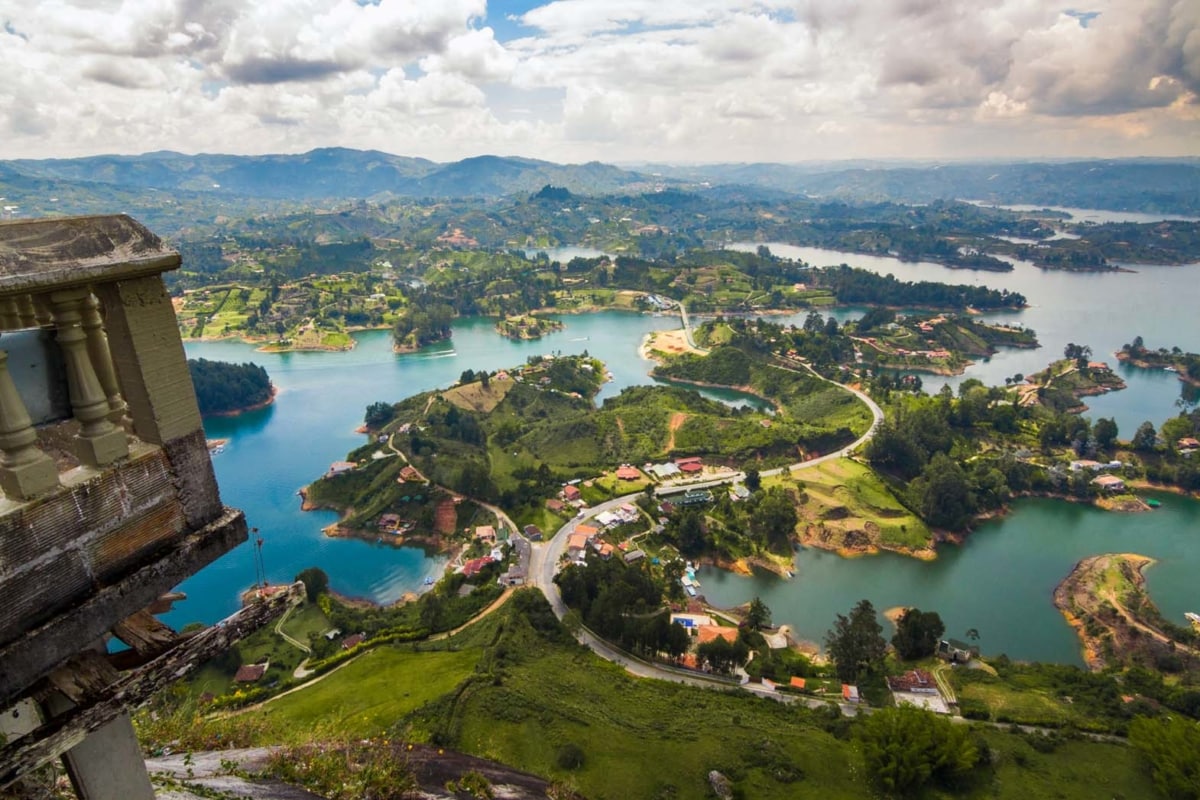
When I first mentioned that you could visit Colombia up to 180 days per year, you probably thought that was more than enough. Let me tell you from first-hand experience that even with 180 days to visit, you wouldn’t be able to see even a fraction of what this incredible country has to offer.
As I mentioned, Colombia is diverse with so much to see, do, and experience.
It is the only South American country to have both a Pacific and Caribbean coastline. It has high Andes mountain passes, small pueblos, modern cities, desert landscapes, rolling hills, and vast plains. People come to visit Colombia for the food, the culture, the nightlife, for whale watching and scuba diving, and for jungle treks and adventure sports.
Whether you have six months or six days, you’re going to have to narrow down your choices. Thankfully, we have a whole itinerary with plenty of highlights to see on your visit. Let this serve as your travel guide to making the most of your time.
If you only have one or two weeks in Colombia , your best bet is to visit just 2 or 3 regions. You could check out one of the major cities (Bogota, Cartagena, or Medellin) and then spend a few nights in the coffee region before heading to the Caribbean coast.
I would recommend swapping out the Caribbean for the Amazon or Pacific regions for a bit more adventure. You could also tack on a few days in Cali if you are planning to check out some salsa classes.
You Need to Think About How You’ll Get Around
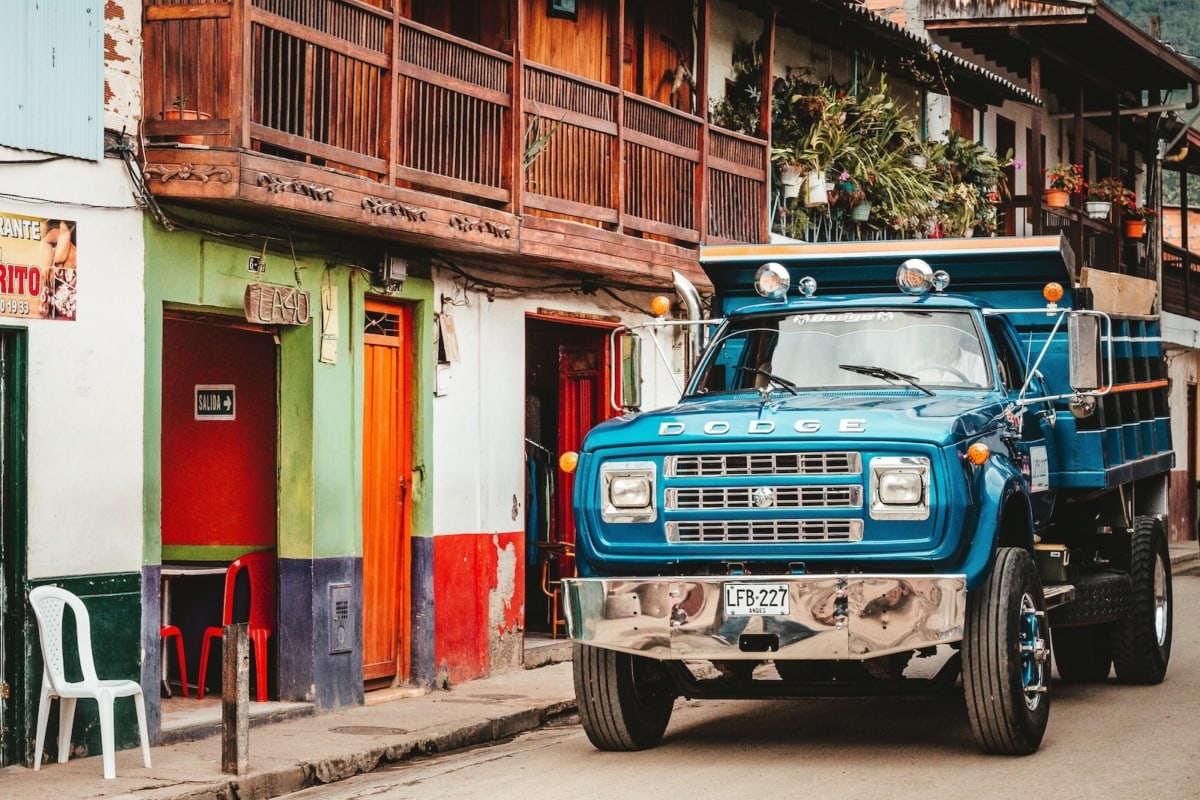
Once you realize how big Colombia is (it’s a little over twice as large as France), you start to realize how it might be hard to see everything you want to see. Add in the fact that the Andes Mountains run right down the center of the country and you’ll quickly understand why planning how you’ll get around is important.
Whether you’re taking taxis, buses, or planes between destinations, you’ll need to take time restrictions and budget into consideration.
Around Colombia, You’ll Have to Navigate Mountains
When it comes to Columbia travel, the public bus system is the cheapest mode of transportation and rarely needs to be booked ahead of time. That being said, buses are not the fastest mode of transportation. Winding mountain passes and narrow two-lane highways mean even traveling between two relatively close places can take a full day.
Flying is a much quicker and more convenient option, especially if you are traveling between distant regions. Thankfully, Colombia has a number of budget airlines. You’ve got your fair number of options to search for. On the downside, this does limit the spontaneity of your plans a bit.
In the past, another consideration when booking travel was safety. Traveling by public buses to visit certain regions of Colombia was not recommended even just a few years ago. However, since the Peace Agreement with the rebel FARC, you can leave those safety concerns behind. Opting to take buses vs flying is now much more a personal decision based on budget and travel style.
Getting Around is Easy in Most of Colombia’s Cities and Towns
In the cities, you will find many ride-share and taxi apps. Uber is popular (though it may or may not be permanently kicked out of Colombia in Jan 2020) as well as DiDi and Beat. You can usually flag down taxis off the street, but I recommend ordering one through a taxi app or by calling instead.
Remember: taxis flagged in the street may not always be metered. Negotiate your fare beforehand.
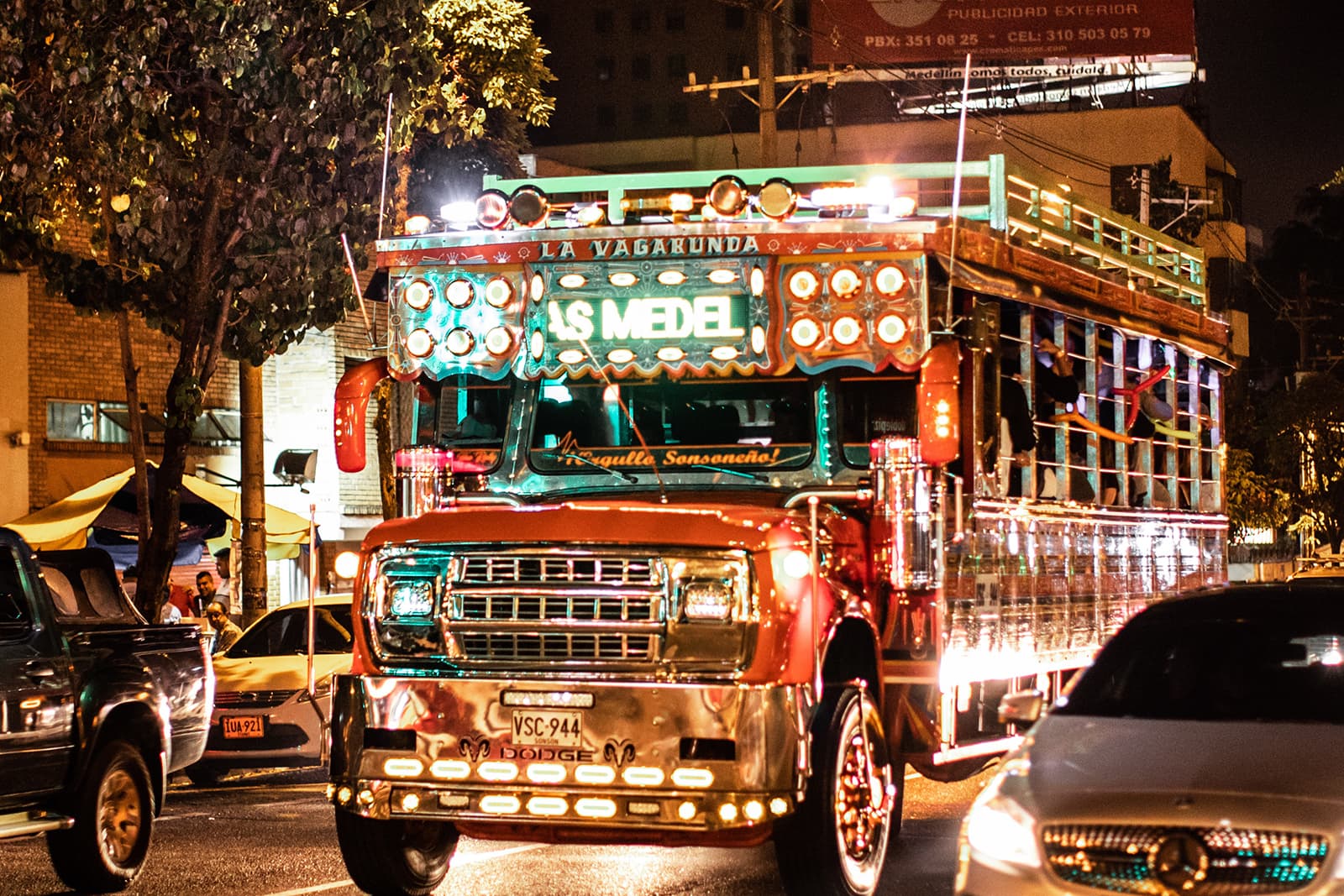
The public transportation options in Colombian cities are often overcrowded but overall decent. In Medellin, the metro system is a point of pride in the city. On the other hand, the TransMilenio system in Bogota is despised almost universally by locals and travelers alike. (I could take it or leave it.)
As a plus, Colombians are very friendly and usually happy to help lost travelers who are using public transportation systems.
It Has a Dark Past But a Bright Future
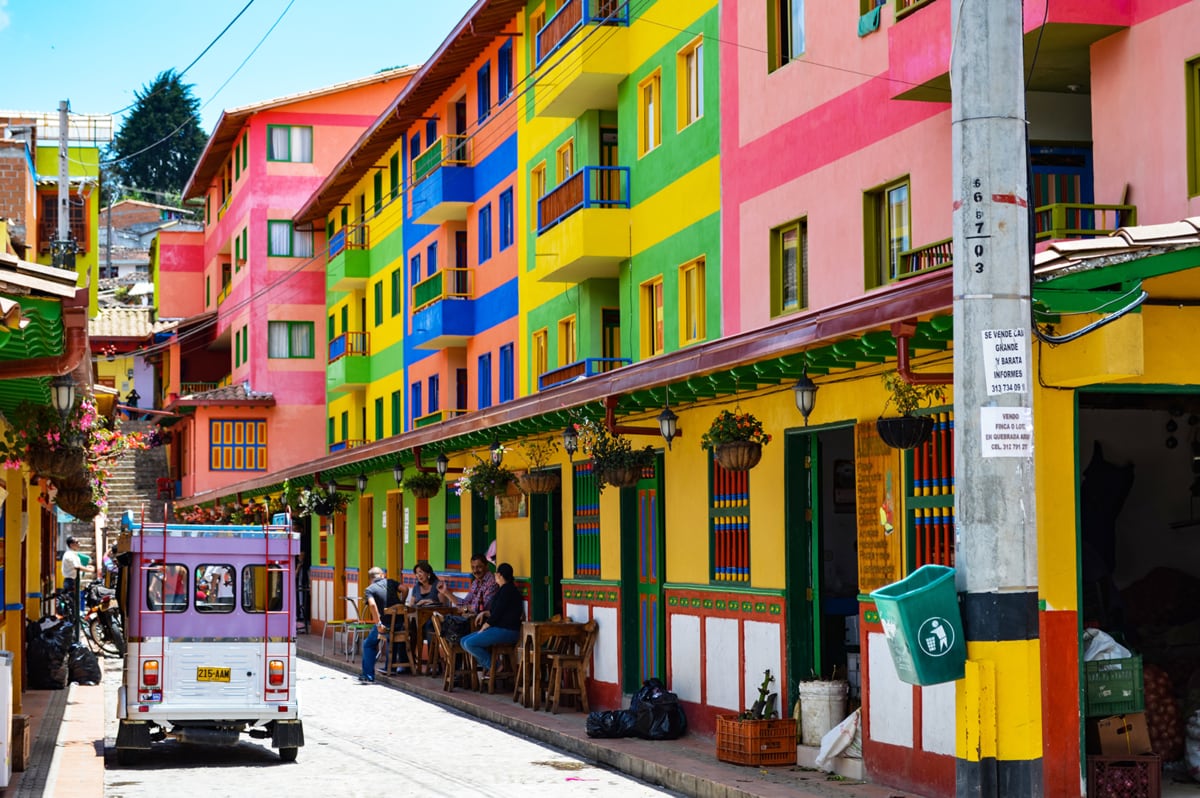
It’s fair to say the popularity of a certain Netflix show has boosted interest and travel to Colombia. As someone who has fallen in love with Colombia—the people, the culture, the food—it can be frustrating that so many people still have that Narco image of Colombia in their mind. But it’s also part of the country’s past, and it can’t be ignored in these Colombia travel tips.
Colombia was once one of the most dangerous places in the world. From the streets to the highest levels of government, drug cartels ruled with an iron fist. Kidnapping and murder happened each day and no corner of the country was truly untouched by violence.
Even after the fall of Pablo Escobar and the major cartels, Colombia still struggled with ongoing internal conflict between government forces, paramilitary, and rebel groups like the FARC.
But there’s good news! In the last few decades, Colombia has turned a corner to start moving into a much brighter future.
Today Colombia is seen as a gem of South America with growing economic opportunity and a strong tourism industry. Its biggest export is no longer drugs, but flowers. And people nowadays visit to enjoy a different type of stimulant—delicious Colombian coffee.
While we can’t ignore Colombia’s dark past, it’s future is bright. Your visit gives Colombia a much-needed tourism boost.
Visiting Colombia is Safe
If it wasn’t clear from the section above, Colombia is a much safer place than it once was . All the popular depictions of narcos and cartels that you read about or see on TV are straight out of the ‘80s. Colombia is safer today than many places in the world, especially for travelers.
Violent crime rates have plummeted. The cartels have lost their hold on the country and cocaine production has dropped drastically. The 2016 Peace Agreement between the Colombian government and the FARC rebels even earned then-President Juan Manuel Santos the Nobel Peace Prize.
The most common crime that visitors face is simple pickpocketing. While you definitely don’t want to go wandering alone at night with lots of money, with a little common sense, most travelers will be fine. Bad luck and bad timing can happen to anyone, but overall, Colombia is considered safe for travelers.
That being said, there are certain areas you’ll want to avoid, especially around the borders, as they have a higher safety risk. It’s always best to check your government travel advisory listing before you visit, as situations do change.
It Might Be Safe But You Still Need Travel Insurance
Even in the safest places in the world, sometimes you just run into a bit of bad luck. Having travel insurance in Colombia is a great way to give yourself peace-of-mind no matter where in the world you visit.
Colombia does have its fair share of theft and pickpocketing. Travel insurance can help you avoid a ruined trip if something does go missing.
Colombia also offers some great adventure sports options. Travel insurance that covers these types of activities is smart in case of any accidents.
Overall, finding the best travel insurance before your trip to Colombia is just a smart move. This is one of the most important tips I can offer! My favorite insurance is World Nomads.
And as Colombians Say “Don’t Give Papaya”
Colombians have a saying: “dar papaya.” It literally means “to give papaya.” The actual translation though is more of a warning to not set yourself up to be taken advantage of or robbed.
Like I mentioned above, the most common scam travelers in Colombia face is pickpocketing. Phones and money are by far the most common items to be stolen. And most of the time travelers get their pockets picked because they were “giving papaya.”
Pulling out your phone in the middle of the street, flashing your money at the bar, grabbing sketchy taxis off the street, or casually tossing your phone on the table while eating dinner are perfect examples of this.
“Giving papaya” doesn’t just apply to your phone or wallet. It’s doing anything to attract attention to yourself and potentially your valuables. Want to avoid being robbed in Colombia? Don’t flash money or wear expensive jewelry, don’t get drunk and walk home alone, etc.
Don’t give papaya, consider your safety when you’re out and about, and you are sure to have a much smoother trip.
It Has Some Incredible Cities
Now that we have safety out of the way, let’s dive into what makes a visit to Colombia great! We’ll start with its incredible cities.
The capital of Colombia, Bogota is a modern, bustling city perched high in the Andes Mountains. Sitting at 8,660ft (or 2,640m), it’s a place that can quite literally take your breath away.
Most visitors to Bogota give it a day or two at most. It’s a huge city but the highlights can be seen in just a few days if you don’t have a lot of time. Some of those highlights include the Botero Museum, the Gold Museum, and the sweeping views from Monserrate.
Bogota also has some of the country’s best nightlife and restaurants. If you are considering taking Spanish classes, Bogota also has a wider selection of schools and programs than other cities.
Capital of the coffee region, Medellin is by far most traveler’s favorite Colombian city. Nicknamed the “City of Eternal Spring,” Medellin has near-perfect weather year-round. It’s also home to arguably some of the friendliest people in Colombia.
Medellin sits in a narrow valley with a number of barrios/neighborhoods that are popular with tourists, including El Poblado, Envigado, and Laureles. These neighborhoods are packed with busy restaurants, bars, coworking spaces, parks, and coffee shops.
If you do spend some time in Medellin, it’s also worth checking out a few of the more local neighborhoods. A visit to the Comuna 13 neighborhood is a great way to see a bit of the scarred past of the city but also how it has been reborn through art, culture, and community.
Sitting on Colombia’s Caribbean coastline, Cartagena is a city for lovers of architecture and history. Surrounded by the old city wall, you’ll find many of Cartagena’s colonial homes restored to their original beauty.
Here you can explore quiet plazas, take a ride in a horse-drawn carriage, or step inside a colorful church. At night, Cartagena comes alive with the sounds of salsa and cumbia, especially in the neighborhood of Getsemani.
For a more modern take on Cartagena, head out to the Bocagrande and Castillogrande neighborhoods. These neighborhoods both have decent beaches, lots of restaurant options, and a nice stretch where you can shop for local souvenirs.
Barranquilla
Barranquilla is the urban core of the Caribbean coast. Known mostly as a port city, it’s often overlooked by travelers (other than international shipping businessmen). That being said, Barranquilla has a lot to offer all kinds of travelers, from museums to great art and music festivals year-round.
The highlight of Barranquilla though, hands down, is Carnival. The city is home to the second-largest carnival in the world and if you happen to be in Colombia just before Ash Wednesday, it shouldn’t be missed! The Carnaval de Barranquilla was even honored as a “masterpiece of the oral and intangible heritage of humanity” by UNESCO in 2003.
Santa Marta
Santa Marta, further down the coast, is the gateway to some of Colombia’s most beautiful natural parks. The city itself is another colonial gem—smaller than Cartagena, but equally as charming. It is also home to some of the best urban beaches in Colombia.
The beach in the center of town is quite crowded and not the best. But just outside the city center, you will find two suburbs with great beaches: El Rodadero and Taganga. El Rodadero attracts a largely Colombian crowd and is mainly filled with fancy hotels and resorts. Taganga, on the other hand, is very popular with backpackers and travelers, with many hostel options.
Although Cali is the capital of sala, it’s another place that is often overlooked by travelers. If you have any interest at all in learning to dance, this is where you come.
The city is unsurprisingly filled with incredible salsa schools and clubs. If you show up at a club, a local is 100% likely to pull you into a dance. It’s also a great place to check out a longer salsa course (if you have time) as it is a bit more affordable to live here than Colombia’s other major cities.
Even if you’re not a dance lover, you’ll appreciate the salsa vibes all over the city. Check out Tin Tin Deo—they sometimes offer free lessons!
Colombia is Relatively Welcoming and Progressive When it Comes to LGBTQ+ Travelers
Latin America has a pretty bad reputation overall for LGBTQ+ safety, and a lot of it stems from the region’s traditional Catholic culture. Colombia, however, is very progressive when it comes to LGBTQ+ rights and welcoming LGBTQ+ travelers.
On the Spartacus Gay Travel Index , Colombia was ranked 21 out of 197 countries for most welcoming LGBTQ+ travel destinations. That makes the country second in Latin America, after Uruguay.
While views on LGBTQ+ rights and relationships vary across the country, you’ll find Bogota to be the most open. The city actually elected a new mayor in 2019 who is the first openly gay woman to be elected mayor of any capital in the Americas. Bogota is also home to Theatron, the largest gay nightclub in Latin America.
Colombian Food is Delicious!
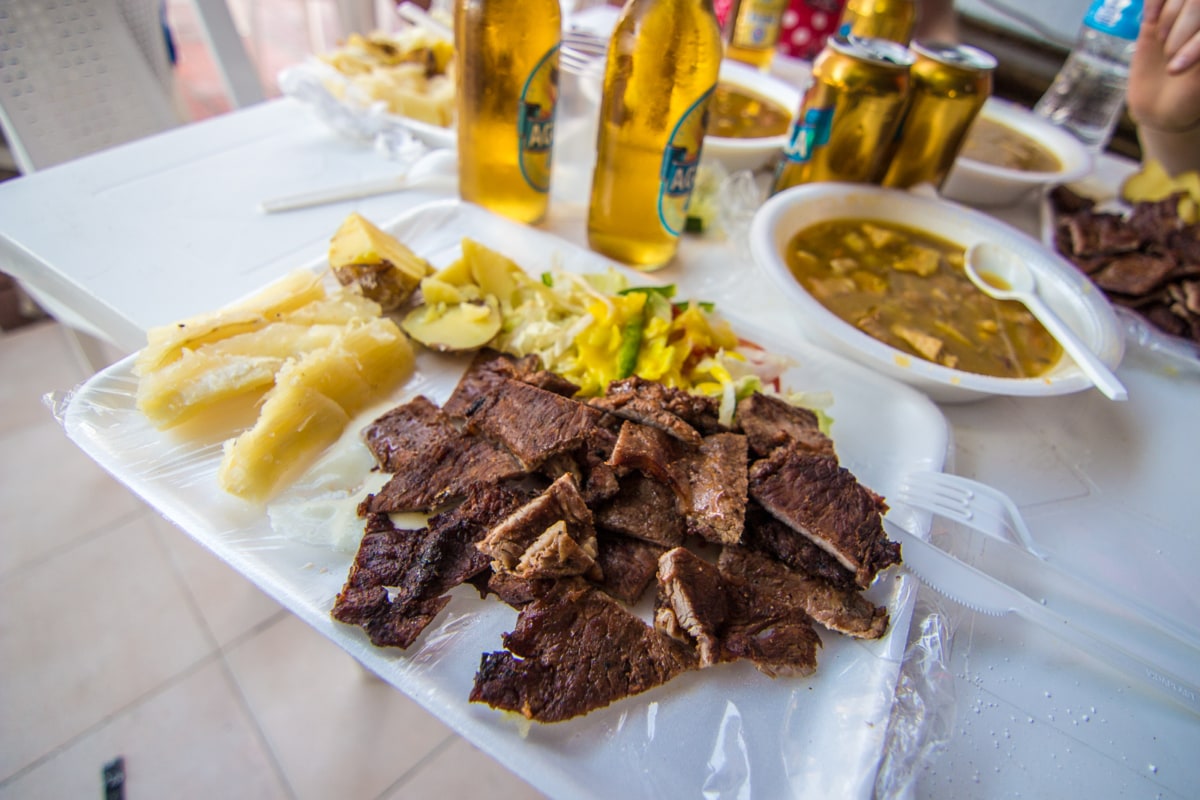
What’s the point of traveling anywhere in the world if you don’t check out a bit of the local food? Thankfully Colombia has some incredible local cuisine, from street food to high-end dining to everything in between.
A lot of travelers might think of Colombian food as bland, overly fried, and salty. The reality? They couldn’t be more wrong.
Bogota is known for having some of the best restaurants in the world, including Restaurante Misia, and Leo (these are both splurges, though). Pick any Colombian city or town and you’ll find great street food options from lechona to obleas. You won’t have to search long to find it.
If you’re traveling all the way to Colombia, don’t miss the chance to try bandeja paisa, ajiaco soup, buñuelos, changua, or any of other unique Colombia specialties. Each region is known for something special, from exotic Amazonian fruit to the coconut rice of the coasts.
Don’t be afraid to ask a local to recommend a street vendor, restaurant, or menu item. Locals have the best insider tips!
And You’ll Definitely Want to Try the Fruit
You can’t talk about Colombian food without mentioning the fruit. Colombia, as one of the most diverse places on the planet, is filled with rare and exotic fruits you’ve probably never even heard of. In fact, one of the best things you can schedule into your Colombia travel itinerary is a tour of the local fruit market in Bogota, Paloquemao.
Fruit options vary depending on where in Colombia you are, but major markets usually cover a wide range of options. There is arazá, caimito, cherimoya, chontaduro, ciruela, corozo, curuba, feijoa, granadilla, guanabana, lulo, and so much more.
My suggestion? Grab a few pesos, head out to the local market, and just see what you can discover.
It’s a Great Place for Adventure Sports Lovers
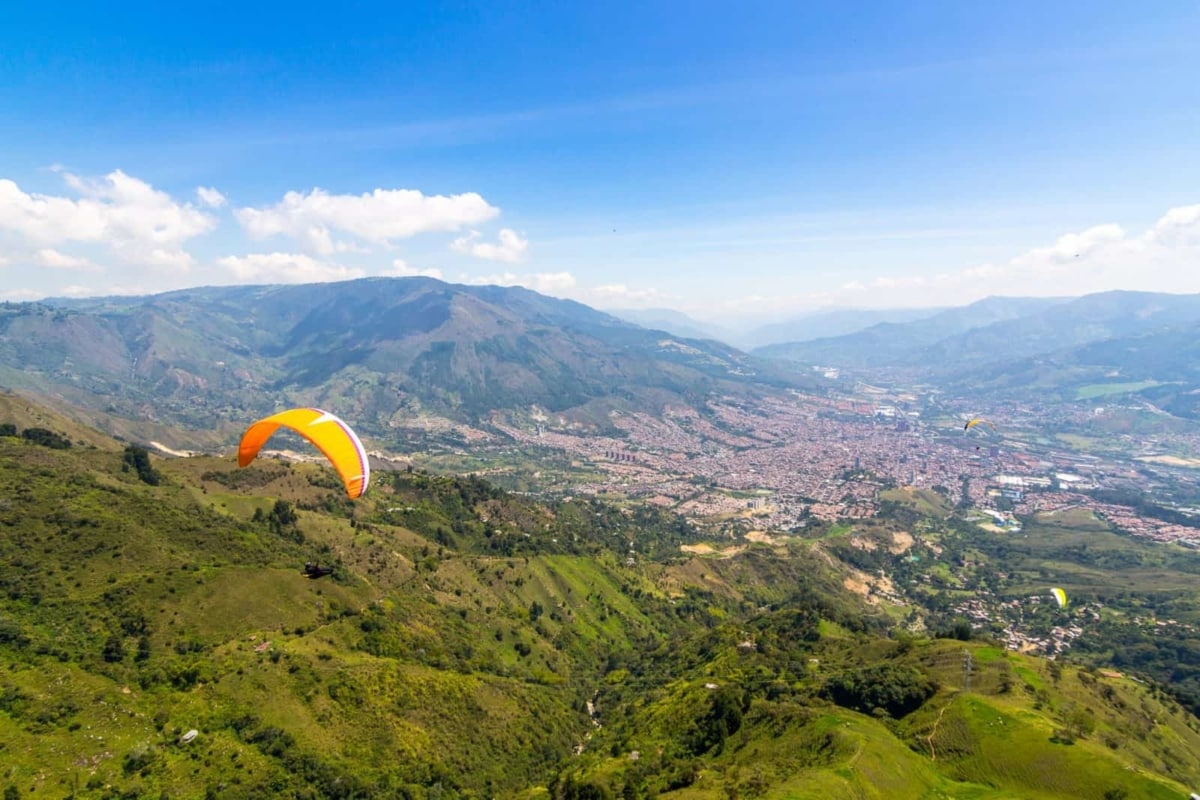
If adrenaline is more your thing, Colombia also has you covered. From paragliding to white water rafting, you can get your thrill in a dozen or more ways.
The capital of adventure sports in Colombia is definitely San Gil. Located in Colombia’s Santander region, the small city is surrounded by dramatic mountains, rivers, and forests. This makes for the perfect adventure sports arena.
Paragliding in Colombia is probably the most popular adventure sport option with companies offering paragliding in Bogota, Medellin, San Gil, and other major regions. There are also a few places to bungee jump in the country.
White water rafting and caving are popular in the San Gil area. The most popular cave option is La Cueva de la Vaca outside Curiti. Rafting trips on the Suarez River can range from mild, beginner rapids to level four rapids.
Colombia is Filled with History
Travelers come to Colombia for many reasons: the natural landscapes, the great nightlife, the world-famous cultural events, etc. If you are a history fan though, Colombia has even more to offer.
Pre-colonial history in Colombia is fascinating with many important archaeological sites spread throughout the country. The two most famous are probably the Lost City and San Agustin.
The Lost City, Ciudad Perdida, is thought to be 650 years older than Machu Picchu. Located in the mountains outside Santa Marta, the hidden ruins of the city are only accessible by a multi-day hike.
The San Agustín Archaeological Park, in southern Colombia, is considered the world’s largest necropolis. It is also the largest collection of religious monuments and megalithic sculptures in all of Latin America.
Moving to more modern history, Colombia’s colonial past has left behind many colorful buildings and towns. Cartagena is by far the best example, with gorgeous old colonial mansions. Similarly, the colonial center of Bogota ( La Candelaria) shouldn’t be missed. For a small-town example, head to the colonial town of Villa de Leyva, known for its whitewashed buildings and cobblestone streets.
But the People Are The Real Reason You Will Fall in Love With Colombia
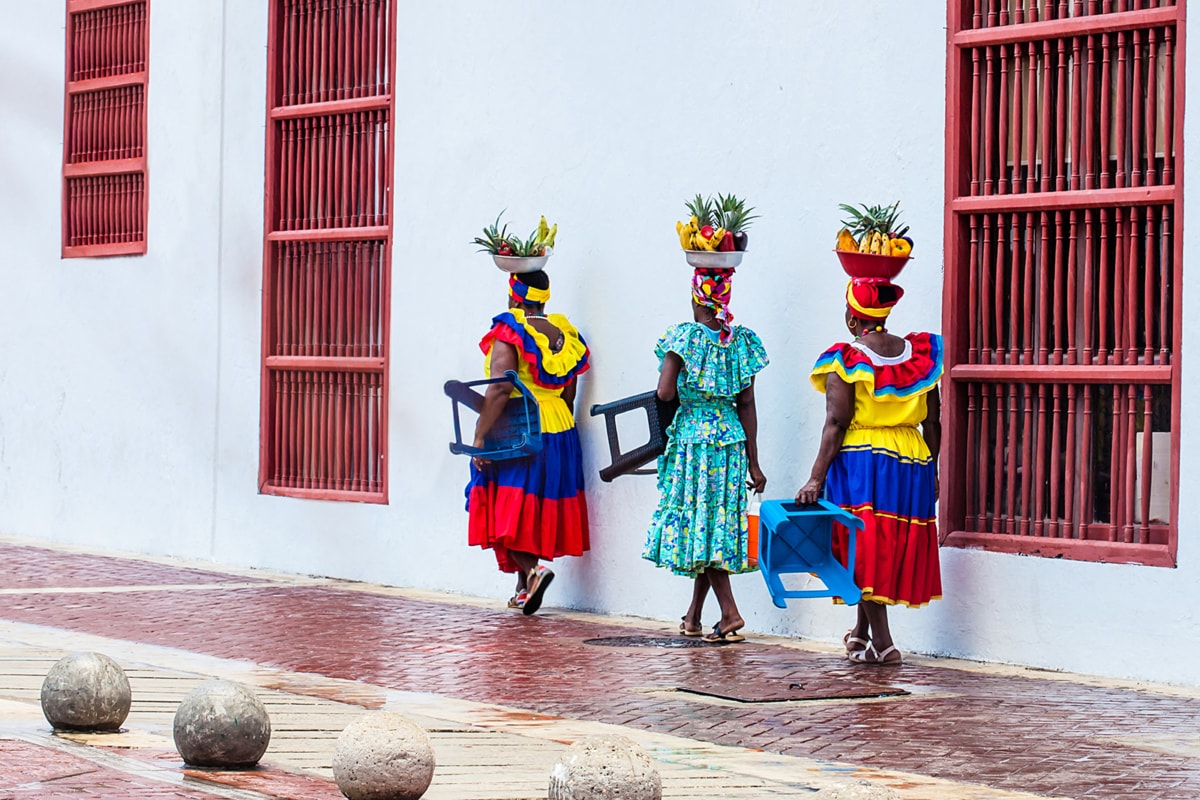
Colombia has so much to see and do. It’s one of those places you visit once and fall in love with forever. There is a reason it has gone from an overlooked piece of Latin America to one of the top travel destinations in the world in only a few short years.
It’s not just the vibrant cities or picturesque towns, or its mountainous landscapes, pristine beaches, or high-quality coffee. What truly makes Colombia special is the people.
For years, Colombia was a no-go zone where few travelers ventured. Despite this, Colombians are overall quite proud of their country and what it has to offer. Rather than being annoyed or fazed by the sudden influx of tourists, Colombians are excited for the opportunity to show the world their homeland.
Colombians are welcoming, open, and some of the friendliest people you will ever meet. It’s no wonder traveler after traveler finds themselves falling in love with this beautiful country and its amazing people.
If you’ve read this far, I already know you’re excited to set out on this journey. In our great search for underappreciated destinations around the world, you’re not going to regret this trip to Colombia.
I hope these tips serve as a useful travel guide for you to navigate one of my favorite places on the planet!
Colombia Travel Tips FAQs
What you need to know before travelling to colombia.
Things to know before travelling to Colombia: you probably don’t need a visa and transportation can be tricky.
Is it safe to travel to Colombia right now?
Colombia is generally safe to travel, but the US State Department has issued a Level 3 travel warning and recommends people reconsider travel.
How do you prepare a trip to Colombia?
The best way to prepare for a trip to Colombia is to research the local culture and customs and brush up on your Spanish.
Is Bogotá safe for white tourists?
Yes, Bogotá is safe for tourists.
Do I need malaria pills for Colombia?
Yes, it is a good idea to bring malaria pills if you’re going to a high-risk area in Colombia.

Jeremy Scott Foster
Nice write up (though you forgot to talk about social life and possibility of finding spouse there). That said, this was useful and helped me plan my trip – specifically, going to a different region via PLANE instead of bus. So thanks for the article!
Your email address will not be published. Required fields are marked *
Search our latest articles, reviews and gear guides
- TravelFreak on Instagram
- TravelFreak on Facebook
- TravelFreak on Twitter
- TravelFreak on Pinterest
Sign up now and get the best gear, travel tips, deals and destinations, straight to your inbox.
Thank you for signing up!
Colombia Travel Guide: Everything You Need To Know

Ready to embark on a journey to Colombia, a land of lush greenery, rich history, and aromatic coffee? Well, pack your bags (and don't forget that sense of adventure), because we've prepared a go-to guide with all you need to know about traveling to this South American gem. From the best times to visit to those bucket list experiences that make a trip truly unforgettable, we've got you covered.
In this guide:
- The best time to visit
- Top attractions
- Hidden gems to explore
- Bucket list experiences
- Travel tips
- Stay connected with a Colombia eSIM
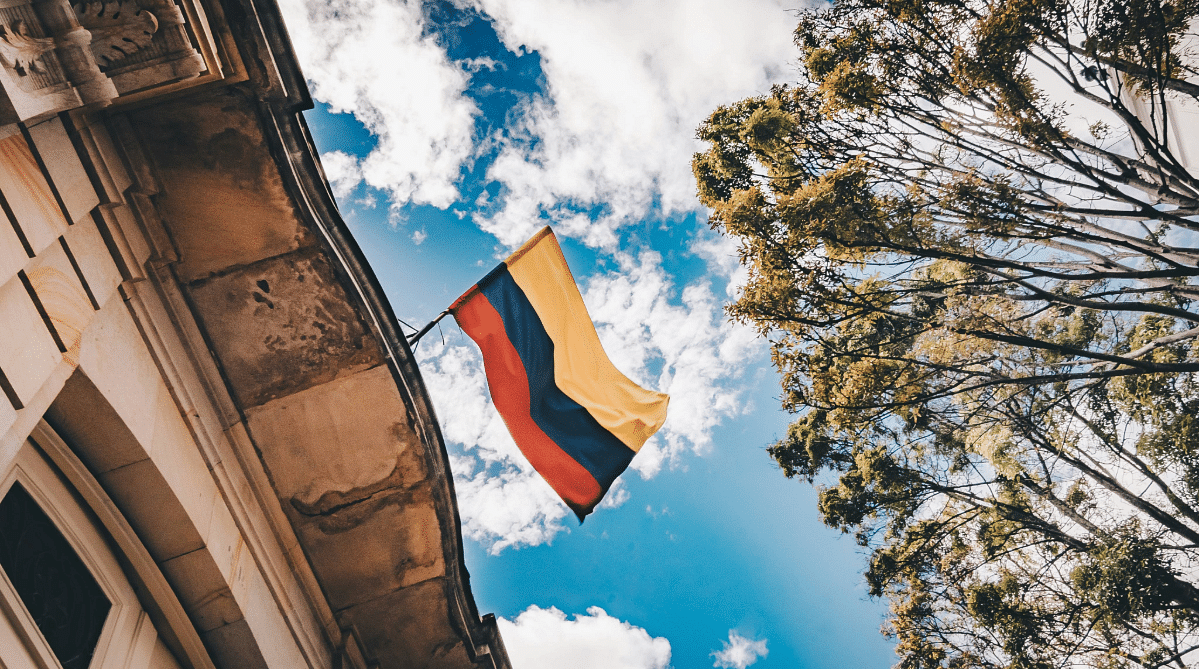
Best Time to Visit Colombia
Colombia boasts a range of climates due to its topography, with coasts, jungles, and mountains, but the temperature remains fairly consistent year-round in each region. However, the drier periods of December to February and July to August are generally accepted as the best times to visit. Be prepared for varying conditions, though, and remember — rain in Colombia can mean more vibrant landscapes!
Top Attractions in Colombia
Colombia's top attractions are rich in history, culture, and breathtaking nature. Explore these five must-see sights for an unforgettable Colombian experience.
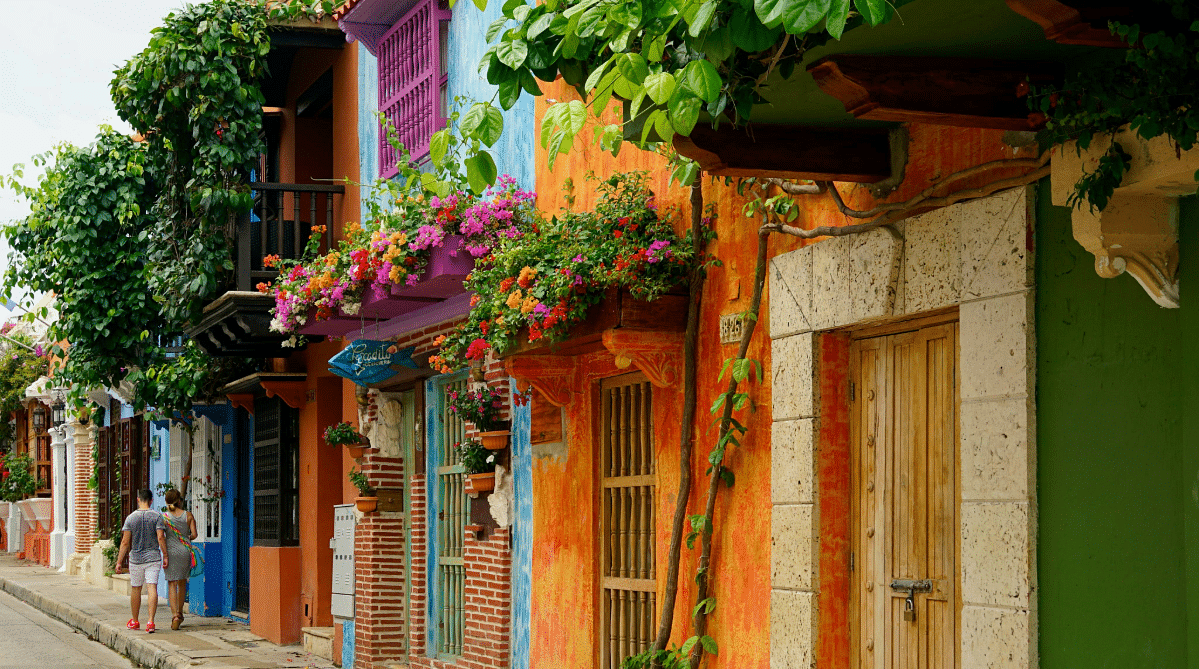
Cartagena is an enchanting blend of colonial charm and Caribbean flair. From the picturesque plazas of its UNESCO-listed Old Town to the serene beaches of Islas del Rosario, Cartagena has plenty to offer.
The best things to do in Cartagena:
- Explore the Old Town: Dive into the history of Cartagena by wandering through the Old Town. This area, also known as the Historic Center, is renowned for its colonial architecture, colorful buildings, and vibrant street life. It's a must-see for any visitor.
- Visit the Castillo San Felipe de Barajas: This historic fortress offers a glimpse into Cartagena's colonial past and strategic importance. The castle stands as a landmark of the city and provides panoramic views of the surrounding area.
- Relax on the beaches of Islas del Rosario: Just a short boat trip from Cartagena, these beautiful Caribbean islands offer white sandy beaches and crystal-clear waters, perfect for snorkeling, diving, or simply soaking up the sun.
- Walk the city walls: The walls that once defended Cartagena from pirates and invaders now offer a scenic walk with coastal views. Strolling along these fortifications at sunset is a fantastic way to experience the city's charm and history.
- Discover the Mercado de Bazurto: For those looking to experience authentic Cartagena, the bustling Mercado de Bazurto is a cacophony of sights, sounds, and smells. This local market offers a range of produce, seafood, and local specialties like arepas and empanadas .

Medellín
Once notorious for being one of the most dangerous cities globally, Medellín has transformed into a hotspot of innovation, culture, and tourism. Visit the Comuna 13 neighborhood, explore the abundant public spaces and parks, and ride the city’s impressive metro and cable cars.
The best things to do in Medellín:
- Explore Museo de Antioquia: Dive into Colombia's rich art history at the Museo de Antioquia, home to an extensive collection of works by Fernando Botero, one of Colombia's most famous artists. The museum, located in a former city hall, showcases not only Botero's iconic chubby figures but also offers a broad spectrum of other artworks capturing Colombia's vibrant culture.
- Ride the Metrocable: Gain a new perspective on Medellín by taking a ride on the Metrocable. This unique mode of transportation offers stunning aerial views of the city’s comunas (districts) and the Medellín River. It's not only a way to navigate the city but also an attraction in its own right, highlighting the city's commitment to innovative urban solutions.
- Visit Plaza Botero: Another nod to the celebrated artist Fernando Botero, Plaza Botero is an outdoor park filled with numerous bronze sculptures donated by Botero himself. It's a vibrant space where art and public life intersect, offering a unique chance to experience the scale and texture of Botero's work first-hand.
- Enjoy the Greenery at Parque Arví: A haven for nature lovers, Parque Arví is a vast park that invites visitors to enjoy a range of outdoor activities amidst lush surroundings. Hike along its trails, engage in bird watching, or browse through the small market of food and crafts. The journey to and from the park over the hills of Medellín is itself an experience, thanks to the spectacular views it offers.
- Visit the Comuna 13 Neighborhood: Nestled in the heart of Medellin, Colombia, Comuna 13 is a colorful testament to the resilience and artistry of its community. Once an area challenged by urban strife, it has incredibly transformed into a hub of creativity, culture, and connection.
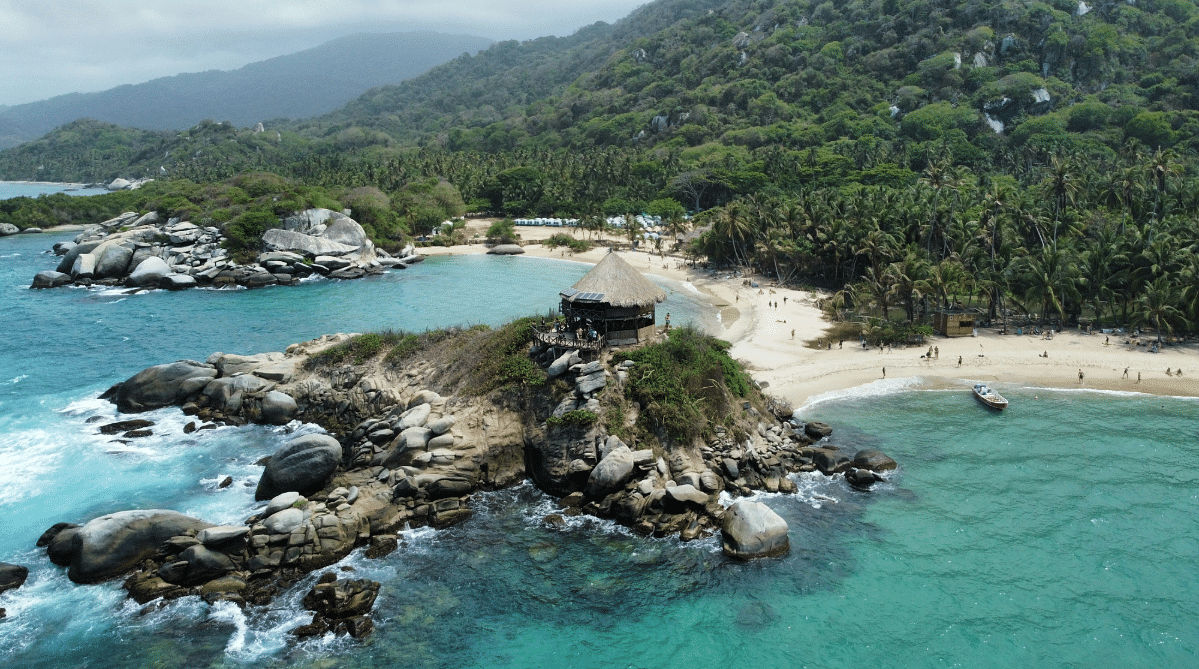
Tayrona National Park
This stunning slice of paradise lies on the Caribbean coast, where the jungle meets the ocean. Offering golden sandy beaches and lush rainforest, the Tayrona National Park is perfect for nature lovers and hiking enthusiasts alike.
The best things to do in Tayrona National Park:
- Hike the Pueblito Chairama Trail: This challenging yet rewarding hike takes you to the ancient ruins of Pueblito, a pre-Hispanic village that was home to the Tayrona tribe. This trail not only offers you a peek into the region's fascinating history, but also serves up some of the most incredible views of the park.
- Relax at Arrecifes Beach: Known for its striking beauty, Arrecifes Beach is the perfect spot to unwind after a day of hiking. Though the currents here are too strong for swimming, the serene atmosphere and picturesque surroundings are sure to captivate you.
- Swim at La Piscina: Just a short hike from Arrecifes, La Piscina offers a safe haven for swimmers. This natural pool, enclosed by a coral reef, provides calm waters perfect for a relaxing dip.
- Spot diverse wildlife: Tayrona National Park is a paradise for nature enthusiasts. Keep your eyes peeled as you explore, and you might spot monkeys, iguanas, and more than 300 species of birds. Remember, always respect their space and admire from a distance.
- Watch the sunsest at Cabo San Juan : End the day at Cabo San Juan by witnessing a mesmerizing sunset over the Caribbean Sea. This spectacular sight, coupled with the location's striking natural beauty, makes it a must-add to your travel itinerary.
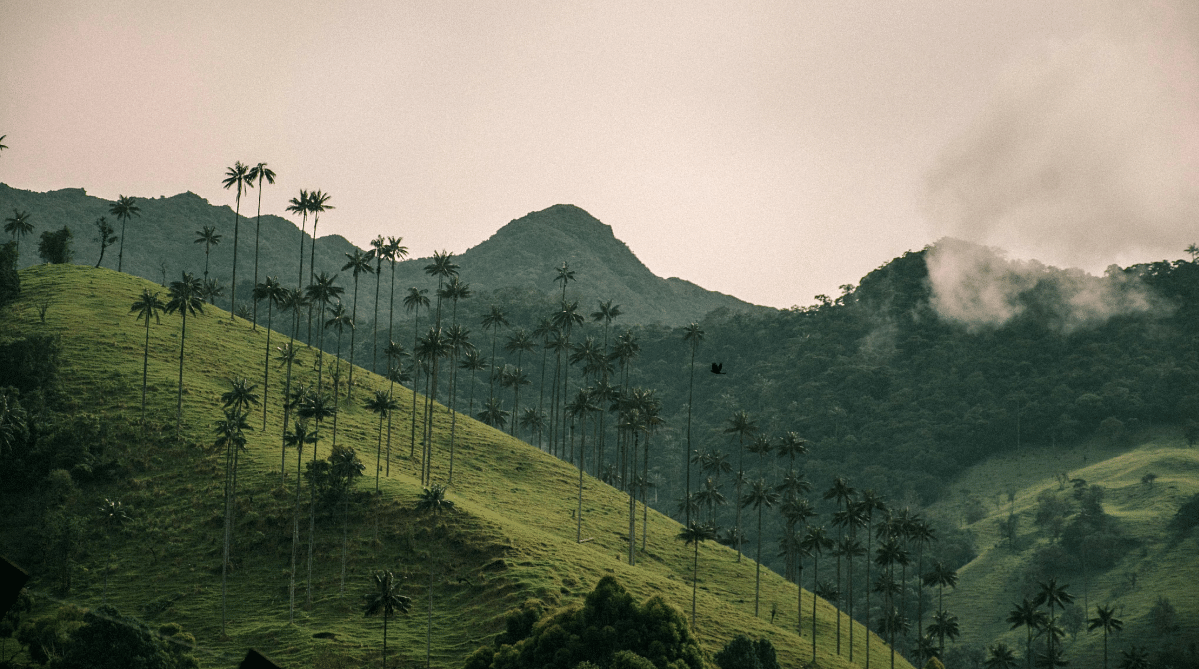
The Coffee Region (Eje Cafetero)
Experience Colombia's coffee culture in its heartland. Visit charming towns like Salento, hike through the Cocora Valley with its towering wax palms, and tour coffee plantations to learn how your morning brew is produced.
The best things to do in Eje Cafetero:
- Go on a coffee farm tour: No trip to the Coffee Region is complete without visiting a coffee farm, where you can see the journey from bean to cup. You'll get to roll up your sleeves, learn the picking process, and, of course, taste some of the freshest coffee on the planet.
- Wander through the Cocora Valley: Stretch those legs in the stunning Cocora Valley, home to the towering wax palm (Colombia's national tree). If you're in for a hike, this place is a jackpot of panoramic views.
- Relax in Santa Rosa Thermal Baths: After all the hiking and coffee excitement, it's time to unwind in the soothing Santa Rosa Thermal Baths. The hot springs are the spa treatment that Mother Nature intended for you. Trust us, the backdrop of waterfalls and lush forest is the cherry on top!
- Ride the Coffee Train (or La "brujita" as the locals call it): Hop aboard La “brujita,” a quirky rail vehicle that takes you on a scenic adventure through the coffee countryside. It’s far from your average commute, with open-sided cars allowing the cool breeze to complement the view.
- Discover the Quindio Botanical Garden and Butterfly House: Prepare to be dazzled by the colors and diversity at the Quindio Botanical Garden. With a butterfly house featuring over 1,500 butterflies, it's an enchanting experience.
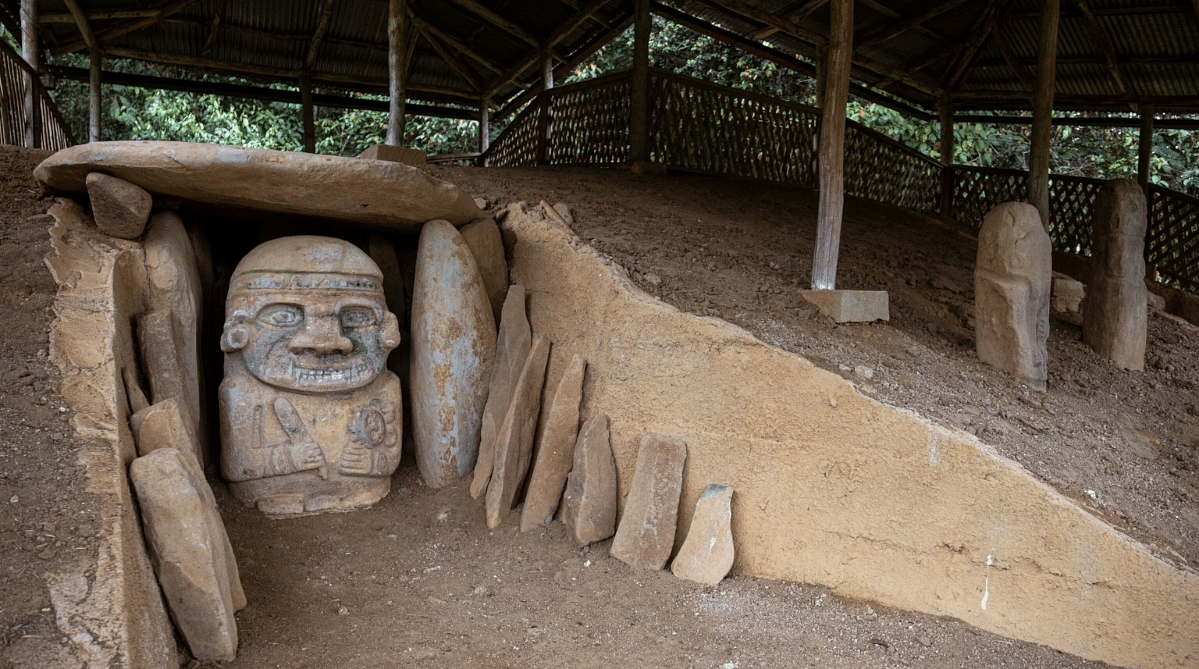
San Agustín
This archaeological site is home to the largest collection of religious monuments and megalithic sculptures in South America — a mysterious and haunting landscape that will captivate history buffs.
The best things to do in San Agustín:
- Explore the San Agustin Archaeological Park:
- Step back in time at the San Agustin Archaeological Park, a UNESCO World Heritage Site that boasts the largest collection of pre-Columbian megalithic sculptures in South America. These mysterious statues, some standing over 7 meters tall, are scattered around the park and offer a glimpse into the region's ancient cultures.
- Take a walk or horse ride to El Tablon, La Chaquira, La Pelota, and El Purutal: For an adventure that combines natural beauty with archaeological wonders, a hike or horse ride to these sites is a must. The journey not only provides breathtaking views but also leads you to fascinating statues and relics outside the main park. La Chaquira, in particular, offers beautiful vistas, and the ride there isn't too strenuous, making it accessible for most travelers.
- Visit the Magdalena Strait: This natural wonder, where the Magdalena River narrows to a mere 2 meters wide, is truly a sight to behold. The powerful currents carving through the rock showcase the raw power of nature. It's a perfect spot for photography or simply to contemplate the natural beauty of San Agustin's landscape.

Hidden Gems
Beyond Colombia’s famous landmarks lie hidden treasures waiting to be discovered. These five lesser-known spots offer unique adventures off the typical tourist paths.
The Tatacoa Desert
Even many Colombians miss this fascinating desert that offers a unique landscape of towering red and grey formations. It's also Colombia's second-largest arid zone and one of the best places for stargazing.
Often overlooked by international tourists, Barichara is one of Colombia’s prettiest villages. Its cobblestone streets, white-washed buildings, and terracotta roofs play perfect hosts to a lazy afternoon stroll.
Las Lajas Sanctuary
This stunning Gothic church built into the side of a cliff is a sight to behold. It's off the beaten track, but worth the trip for the architectural beauty and the surrounding canyon views.

Pacific Coast
The predominantly Afro-Colombian Pacific Coast is as rich culturally as it is in biodiversity — home to rugged beaches, dense jungle, and some of the best whale watching in the world.
La Candelaria, Bogotá
Roam around the historic neighborhood of La Candelaria, with its charming streets, colorful buildings, and lesser-known museums like Botero’s Museum, packed full of famed Colombian artist Fernando Botero’s distinctive artwork.
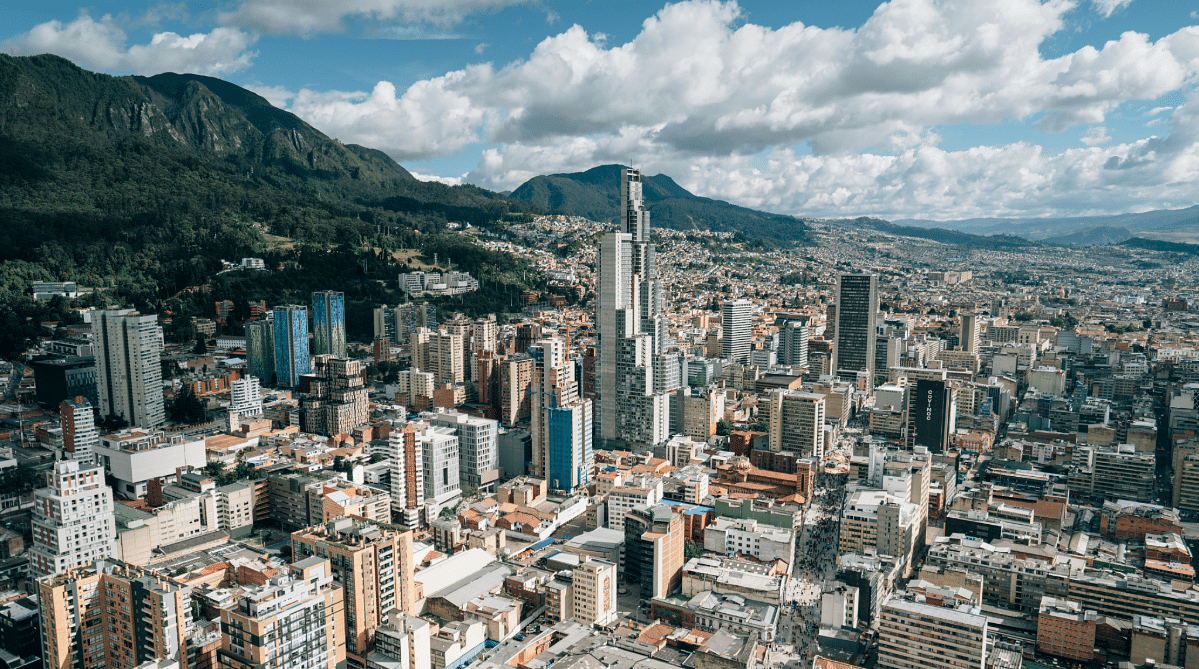
Bucket List Experiences
With so much on offer, it can be hard to narrow down the must-do experiences. Here are our top ten, in no particular order:
- Rough it up on a multi-day trek to the Lost City (Ciudad Perdida).
- Enjoy the nightlife and learn to dance salsa in Cali, the world's salsa capital.
- Walk through Bogotá's La Candelaria district with a cup of world-famous Colombian coffee.
- Explore Cartagena’s historic Old Town and San Felipe Castle.
- Go colonial in Villa de Leyva, a town where time seems to stand still.
- Experience Afro-Colombian culture and music in the Pacific port city of Buenaventura.
- Marvel at the River of Five Colors (Caño Cristales).
- Hike to the top of El Penol Rock near Medellín for breathtaking views.
- Visit the Caribbean Island of San Andrés for its crystal-clear waters.
- Feast on bandeja paisa , a typical mouthwatering Colombian dish.
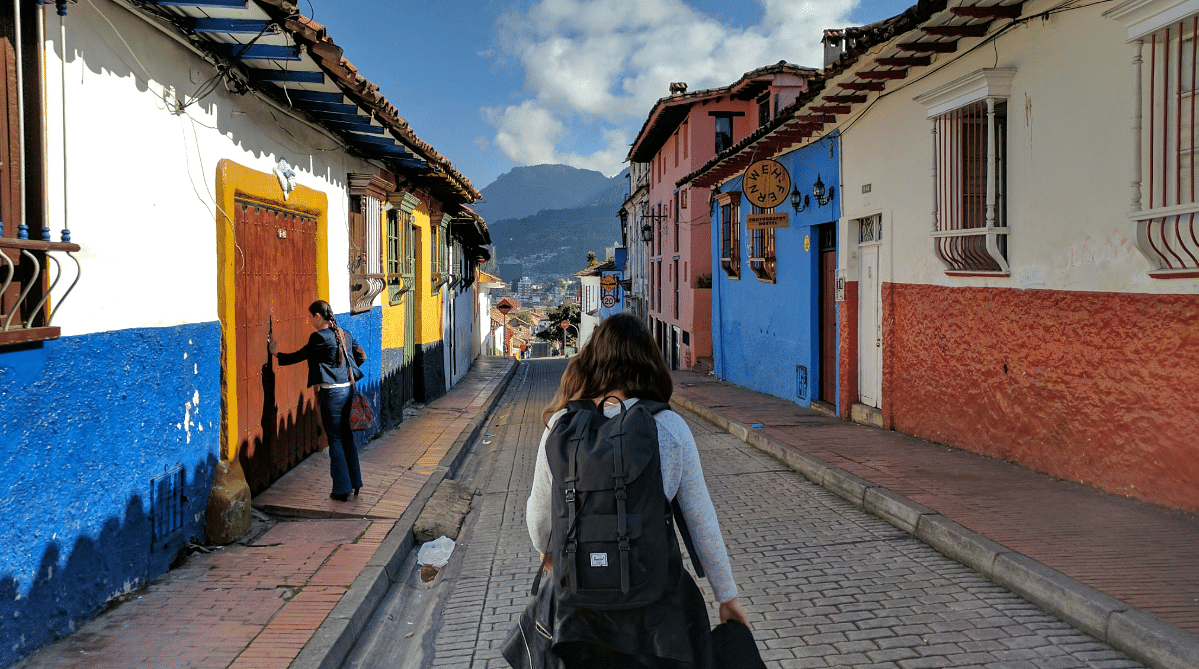
Colombia Travel Tips
Finally, let’s go over some critical travel tips:
- Entry and exit requirements: Passport validity for six months is essential for travelers. Most visitors do not need a visa for stays up to 90 days, but double-check before you fly.
- Language: Spanish is spoken across Colombia. "Hola," "por favor," and "gracias" will go a long way!
- Currency: The Colombian Peso (COP) is the currency. Cards are widely accepted, but always keep a small amount of cash.
- Getting around: Major cities have bus and taxi services, and smaller towns are often walkable. Domestic flights can save significant travel time.
- Plugs and adapters: Colombia uses types A and B sockets. The standard voltage is 110V, and frequency is 60Hz.
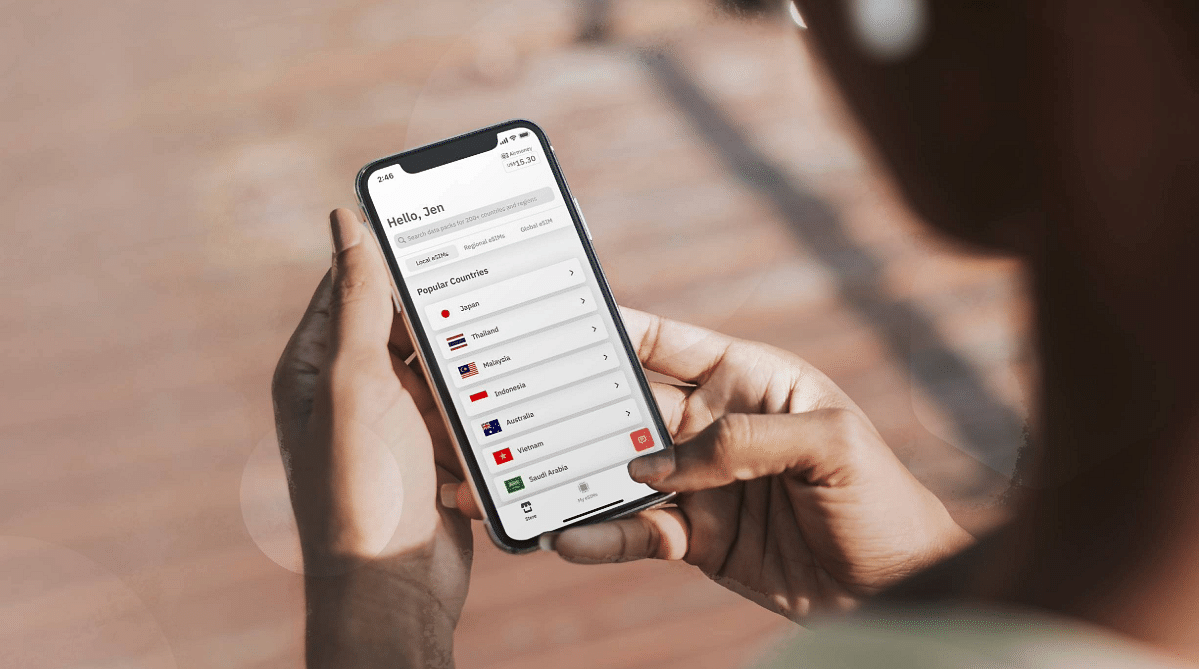
Colombia eSIM: Stay Connected With Airalo
Stay connected during your trip to Colombia with an eSIM from Airalo . An eSIM is a tiny SIM that's embedded in your device and works 100% digitally. You can download an eSIM plan for your destination and instantly connect to a mobile network. There's no need to find a SIM card vendor, manage multiple SIMs, or worry about roaming fees.
Here are just some of the benefits of using an Airalo eSIM:
- Connect to a mobile network within minutes.
- Choose from flexible local, regional, and global data plans .
- Say goodbye to expensive roaming charges.
- Store multiple eSIM data plans on your device.
- Need more data? Top up in the Airalo app.
You're all set to plan a trip to Colombia! Head to the Airalo store to browse eSIMs for Colombia and 200+ countries and regions worldwide.
Alisha is a Canadian expat based in Portugal. She’s an avid traveler and writes about all things travel and tech for Airalo.
Ready to try eSIMs and change the way you stay connected?
Download the Airalo app to purchase, manage, and top up your eSIMs anytime, anywhere!
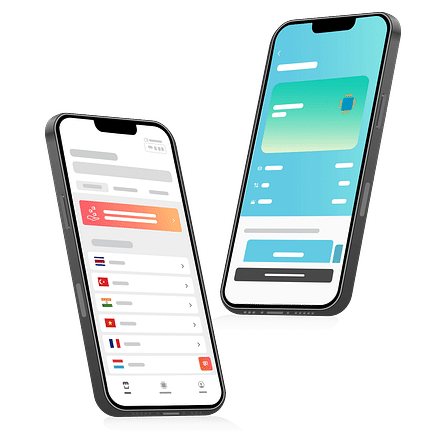
Use Your Free Credit.
You can earn US$3 Airmoney credits by sharing your referral code with friends.

Colombia travel tips for 2024
- Sofía Pozuelo
- UPDATED: 22/11/2023
When I think of Colombia, smiles, vibrant colors, and positive vibes come to mind. My journey to Colombia exceeded my expectations in every way. From the moment I set foot in Cartagena de Indias, I was infected with the happiness that fills the air in every corner of the country. A joy and cheerfulness that lingered until my final days in this destination.
If you've chosen this beautiful country for your next adventure, I can confirm that you've made an excellent choice. Get ready to witness the most vibrant places you've ever seen, discover new fruits that will become your favorites, indulge in delicious arepas, and be amazed by the beaches of Tayrona or the wax palms of the Cocora Valley…
In this article, I will provide you with all the Colombia travel tips that you need to know when organizing a trip to this part of the world.
Table of contents
Colombia travel tips.
Below you can find all my Colombia travel tips for travelers planning their own trip.
1. Best time to travel to Colombia

The temperature in Colombia varies more depending on the region and altitude than on the time of year. Below 1,000 meters, you’ll find a warm climate (24°C or higher). Between 1,000 and 2,000 meters, there’s a temperate climate (17°C-24°C). Lastly, between 2,000 and 3,000 meters, you’ll encounter a cold climate (11°C-17°C).
The high season in Colombia is from December to February, as the weather is excellent throughout the country. However, there will be more people, and prices will be higher.
The shoulder season is from March to September, with increased rainfall in various parts of the country, but it’s still easy to find clear skies.
Finally, the low season is during October and November, as they are the two months with the most rain. On the other hand, prices will be lower.
In general, the best time to travel to Colombia would be from December to March and July or August.
2. How many days should you spend in Colombia

If you’re coming to Colombia from the other side of the pond, I recommend staying for at least two weeks. However, I also say that if you have more days, even better. You can visit the country for a month and still crave more, as there are many places to explore.
We traveled independently in Colombia for three and a half weeks, visiting Cartagena de Indias, Santa Marta, Tayrona, La Guajira, Medellín, Guatapé, and the Coffee Triangle.
If you have less than two weeks in Colombia (one week or ten days), don’t worry. Choose the region that excites you the most and enjoy your days in this beautiful country.
Further down, I suggest several routes in Colombia based on the time you plan to spend.
3. Flights to Colombia
Once you know when you’re going to travel to Colombia and how many days you’ll be staying, it’s time to book your flights. I always use and recommend Skyscanner to find cheap flights since you can easily see which day and with which airline flights are more affordable.
There are direct flights between Madrid and Medellín or Bogotá with Avianca, Iberia, and Air Europa. It’s also possible to find some direct flights between Barcelona and Bogotá with Avianca. I flew from Madrid to Cartagena de Indias with a layover in Bogotá with Avianca, and the flight was very good.
4. Travel requirements for Colombia
US, Canadian, UK, and Australian citizens do not need a visa to travel to Colombia. You can enter the country with a valid passport, provided it will not expire in the next 6 months. A visit can last up to 90 days without a visa. If the stay is longer than 90 days, a visa is required. You will also need to show an outbound ticket.
There are no vaccination requirements to enter Colombia.
Other vaccines for Colombia
Visit the TravelHealthPro website to find out if you require a yellow fever certificate. Travelers who are 1 or older and are arriving from Angola, Brazil, the Democratic Republic of the Congo, or Uganda, as well as those who have transited through an airport of a country where there is a risk of yellow fever transmission for more than 12 hours, must have a yellow fever vaccination certificate.
Visiting San Andreas Island?
You must get a tourist card on the day of the flight from the airport you are departing from, usually at the boarding gate, if you are going to the Islands of San Andres, Providencia, or Santa Catalina. Children under seven years old and visitors who stay on the islands for less than 24 hours are excluded. Confirm your travel plans prior to boarding with your airline.
5. Is it safe to travel to Colombia?

Safety in Colombia is one of the main concerns for some people considering a visit to this country. The truth is that Colombia has a very bad reputation regarding safety due to its past, and because nowadays only negative news seems to make headlines…
Let’s not deceive ourselves; Colombia is not one of the safest countries in the world. One must be cautious, but as I always say, caution is necessary everywhere.
A key travel recommendation in Colombia is, as Colombians say, “no des papaya” (don’t give a chance). This means not walking around displaying your valuables. It also depends on where you are since there are very safe places where you can be more relaxed, such as the historic center of Cartagena de Indias. However, in areas of Bogotá or Medellín, you need to be more cautious.
Another useful piece of advice that I always follow is, upon arriving at the hotel, ask if there are any areas I should avoid. I especially inquire about this in large cities, as there might be more risk. This way, I make sure not to venture into an unsafe area. There are other obvious tips, like avoiding lonely streets at night or being cautious with your belongings, which are worth remembering.
In conclusion, I can confirm that visiting Colombia independently is not dangerous; just be smart and take necessary precautions. However, bad luck can happen anywhere, and there’s little advice I can offer on that front.
If you want to know more about security in Colombia, I recommend reading the advice from the U.S Travel Advisory .
6. Travel insurance for Colombia
Another of the most important steps when organizing a trip is to purchase international medical insurance if you don’t already have medical coverage in the country you’re traveling to. In this case, you will need to get good travel insurance for Colombia.
We use Mondo, an insurance that I always use and recommend. We were fortunate not to need to use it, but that’s not always the case. Sometimes during a trip, we may experience flight delays, lost luggage, accidents, illnesses, etc. That’s why traveling insured is so important.
If you still don’t have travel insurance, you can get a 5% discount on HeyMondo through the following button:
7. Things to do in Colombia
As I mentioned before, there are many things to do in Colombia: beaches, charming villages, valleys, big cities, deserts… Below, you can find a list of the must-visit highlights of the country.
Cartagena de Indias

It was impossible not to start this list of things to do in Colombia with Cartagena de Indias. The historic center of Cartagena is probably one of the most charming places I’ve had the fortune to stroll through. Joy, color, and beauty are palpable in every corner. It was the first stop of my journey and is the most touristy place in the entire country. When you arrive, you’ll understand why.
Organize your visit to Cartagena with the following articles:
- Things to do in Cartagena, Colombia .
- Where to stay in Cartagena .
Santa Marta

At 235 km from Cartagena, you’ll find the coastal city called Santa Marta. It is the oldest city in the country, founded on July 29, 1525, by Rodrigo de Bastidas. In the center, you can find charming streets and squares during the day and a lively atmosphere at night. What I liked the most about this city, though, were the incredible sunsets from the bay.
It’s usually the starting point for people visiting Tayrona Park, Minca, Ciudad Perdida (Lost City), Cabo de la Vela, Palomino , etc.
Plan your visit to Santa Marta with the following articles:
- Things to do in Santa Marta .
- Where to stay in Santa Marta .
Tayrona Park

It is one of the Colombians’ greatest pride. In this natural national park, you can stroll through the jungle, swim on some beaches, and enjoy incredible places like Cabo San Juan, one of the most beautiful spots I saw during my self-guided trip to Colombia.
The park can only be visited on foot (also on horseback, but it’s much more ethical to use our own legs), and once you enter, you can stay as long as you want. You can take day trips or spend the night inside the park (there are several campgrounds or more luxurious cabins).

It’s a small town located in the Sierra Nevada where you can disconnect and enjoy all the surrounding nature. In the vicinity, you can visit waterfalls, engage in adventure sports, witness breathtaking sunrises and sunsets, or take the coffee route. It can be reached from Santa Marta.
Plan your visit to Minca with the following article:
- Things to do in Minca .
Rosario Islands, Barú, San Bernardo Islands or San Andrés
If you’re looking for turquoise waters, paradise beaches, and some relaxation, I recommend any of these destinations. If you don’t have much time, you can go to Playa Blanca from Cartagena, although it might be quite crowded.
Ciudad Perdida (Lost City)

One of the most intriguing places to visit in this destination is the Lost City. This city was built in the 8th century by Tayrona indigenous communities. To reach it, you have to embark on a four or five-day trek. I did it on my second trip to Colombia, and it was a wonderful experience.
You can book the hike to the Lost City in advance or once you arrive in Santa Marta.
Cabo de la Vela and Punta Gallinas
Going to La Guajira wasn’t initially in our plans in Colombia, but we eventually decided to go based on several recommendations. La Guajira is located in the extreme northwest of the country and is pure desert. The two most popular places in this department are Cabo de la Vela and Punta Gallinas.
You can also get to know the customs of the Wayuu people, an indigenous group in the area. To reach Cabo de la Vela, go to Riohacha and from there take private transportation. You can also join an organized tour.

The second-largest city in Colombia and the capital of Antioquia. It is completely surrounded by mountains, which gives it a unique beauty and atmosphere. There are many interesting places to visit in this city, from viewpoints with breathtaking views to neighborhoods that have undergone significant transformation in recent years, such as Comuna 13 (don’t miss this place).

It was one of the places I liked the most on my trip to Colombia. This town looks like it’s straight out of a fairy tale. Its streets are the most colorful I’ve ever seen. Additionally, very close by, you can find the Peñol Rock, a huge rock that you can climb (get ready for a lot of stairs!) and enjoy a landscape filled with greenery and lakes.
The Coffee Triangle
In this area of Colombia, you can visit one of the many coffee farms and learn about the entire coffee process, from planting to your cup. Additionally, there are many charming towns like Salento or Filandia. Although the most incredible place is the Cocora Valley, where you can see the famous wax palms.
Tatacoa Desert
This desert is located in the department of Huila and features very curious geological formations. It is divided into 2 zones: Cuzco, with a reddish ocher color, and Los Hoyos, with a gray color.
Bogotá is the largest city in Colombia and its capital. Don’t miss places like La Candelaria neighborhood, the Primatial Cathedral, or the viewpoint of Monserrate Hill.
Other interesting things to do in Colombia are San Agustín, Las Lajas Sanctuary, Caño Cristales, Quebrada las Gachas, Cali, Barranquilla, or El Cocuy National Natural Park.
8. How to get around Colombia

There are several options for getting around the country: buses, flights, and rental cars.
TRAVELING BY BUS IN COLOMBIA
We did almost all the journeys of our trip in Colombia by bus. Some journeys can be a bit challenging due to many curves or because some roads are in poor condition or under construction. We used to buy tickets at the station or a few days before online.
In Colombia, there are two types of buses: those that make multiple stops and those that are direct. The first type includes buses with a defined route but where people can board or alight wherever they want. I saw them more in the northern part of the country. They can be convenient as they allow you to flag down buses on the road. We used them several times.
Also, on these buses, many street vendors usually board. It comes in handy if you get hungry. The roads in the north weren’t bad, and if it weren’t for so many stops, the journey would be quick. Anyway, I found it to be a very authentic way to travel around Colombia.
Direct buses only make stops for rest and driver changes. It’s the best option for a long journey. I recommend the Brasilia company.
TRAVELING BY PLANE IN COLOMBIA
For many journeys, flying is the best option as it saves a lot of time. Additionally, if you plan your trip in advance and have a fixed itinerary, flights can be reasonably priced. If the flight prices are too high for your budget, you can opt for the bus.
In Colombia, you can find the following airlines: Avianca, EasyFly, Latam, Satena, Viva Air, and Wingo. The most budget-friendly airline is usually Viva Air. As always, I recommend using Skyscanner to find the best-priced flights.
RENTING A CAR IN COLOMBIA
In some areas, it can be very convenient to rent a car to explore the place more freely. One of those places is the Coffee Triangle, where many tourists choose to rent a car. We didn’t do it, and I regret it. Next time, I’m sure I’ll do it this way.
I recommend comparing prices and renting your car in Discover Cars.
9. Currency and prices
In Colombia, the Colombian peso is used. 1 US Dollar (USD) is approximately 4,000 COP.
Colombia is a relatively affordable country. However, I always say that a country can be as cheap or as expensive as you want it to be, depending on where you go, where you eat, where you stay, etc. If your budget for traveling to Colombia independently is low, don’t worry. You can visit it economically.
A meal at a local restaurant in Colombia will cost you around 8,000 pesos. A dish at an economical tourist restaurant will cost you between 14,000 and 20,000 pesos. And finally, a dish at a more expensive restaurant will start from 20,000 pesos.
Regarding accommodations, it depends on the location and the season, as everything tends to be more expensive during high season. You can find a bed in shared rooms starting from approximately $10. For private rooms, decent options start from around $25 per night in touristy places and from $18 in less touristy areas.
Most banks in Colombia charge a commission of 13,000 – 14,000 COP for withdrawing money. One of the banks that does not charge a commission is Davivienda. Therefore, if you have a card that either doesn’t charge a commission or charges very little, you can withdraw money almost for free. I use Revolut and N26 cards.
- Request an N26 card .
10. My 3.5-week itinerary through Colombia

Once you know which places you want to visit during your trip to Colombia and how much time you have, it’s time to create the itinerary.
We spent three and a half weeks in Colombia. Our itinerary was as follows:
Cartagena de Indias (4 nights) → Santa Marta (3 nights) → Tayrona (4 nights) → Camarones (1 night) → Cabo de la Vela (2 nights) → Santa Marta (1 night) → Overnight bus to Medellín (1 night) → Medellín (2 nights) → Guatapé (2 nights) → Salento (4 nights) → Overnight bus to Bogotá (1 night).
With all this time, we could have visited more places, but we always prefer to take it easy even if it means visiting fewer locations.
COLOMBIA ITINERARY IDEAS
Here are several Colombia itinerary ideas based on different time frames in the country. These itineraries are indicative, as you may need to subtract a night for an overnight bus or perhaps prefer to spend fewer nights in one place and more in another…
- One week: Cartagena (2 nights), Rosario Islands/Barú (2 nights), Santa Marta and Tayrona (2 nights).
- Ten days: Medellín and Guatapé (3 nights), Cartagena (2 nights), Rosario Islands/Barú (2 nights), Santa Marta and Tayrona (2 nights).
- Two weeks: Cartagena (3 nights), Rosario Islands/Barú (3 nights), Santa Marta and Tayrona (2 nights), Medellín and Guatapé (3 nights), Coffee Triangle (2 nights).
- Three weeks: Cartagena (3 nights), Rosario Islands/Barú (3 nights), Santa Marta, Minca, and Tayrona (4 nights), La Guajira (2 nights), Medellín and Guatapé (3 nights), Coffee Triangle(2 nights), Tataoca Desert (1 night), Bogotá (2 nights).
- Four weeks: Cartagena (4 nights), Rosario Islands/Barú (3 nights), Santa Marta, Minca, and Tayrona (4 nights), La Guajira (2 nights), Medellín and Guatapé (4 nights), Coffee Triangle (4 nights), Tataoca Desert (2 nights), San Agustín (2 nights), Bogotá (2 nights).
11. Where to stay in Colombia

Time to book accommodations! Below, I provide various recommendations in different tourist destinations across the country, sorted by budget.
Hotels in Cartagena de Indias:
– $: El Barrio Hostal , Hostal Casa de las Americas . – $$: Hotel Boutique Las Carretas . – $$$: La Passion by Masaya , Casa La Cartujita . – $$$$: Ananda Hotel Boutique , Sophia Hotel .
Hotels in Santa Marta:
– $: Masaya Hostel ( my hotel ). – $$: Hotel Boutique Casa Carolina . – $$$: Hotel Boutique Don Pepe .
Hotels in Tayrona:
– $: Recuerdos del Tayrona , Gaira Tayrona . – $$: Villa Tayrona . – $$$: Senda Koguiwa . – $$$$: Villa Maria Tayrona ( my hotel ).
Hotels in Medellín:
– $: Rango Hostel Boutique . – $$: Terra Biohotel ( my hotel ). – $$$: Hotel Poblado Plaza . – $$$$: Medellin Marriott Hotel .
Hotels in Salento:
– $: Vista Hermosa Salento . – $$: Casa Salento . – $$$: Reserva Guadalajara .
More Colombia travel tips for travelers

Here are some final tips for your trip:
- Try to carry only hand luggage. Most airlines charge an extra fee for checked baggage. If you travel with only hand luggage, you’ll save money on all your flights and travel much lighter. On the other hand, boats departing from Cartagena to the Rosario Islands and the San Bernardo Islands have a weight limit for your luggage.
- Don’t leave Colombia without trying arepas, bandeja paisa, empanadas, patacones, etc. Also, indulge in plenty of fresh fruit juices – they’re delicious! Additionally, you’ll discover many new fruits like lulo, passion fruit, tamarillo, soursop, etc. Colombian cuisine is a delight.
- If you want to have internet on your phone, I recommend buying a SIM card at your destination. The best company is Claro. I didn’t research this and bought a card with the Tigo company, but in many places, there wasn’t good coverage. Another very important thing is to go to an official store, instead of buying the card anywhere. If you prefer to have internet from home, take a look at Holafly’s eSIMs.
- Uber is prohibited in Colombia, but it can still be used. I always recommend downloading this app because it makes your life easier when moving around cities. If you prefer not to use it, taxis are also a good option.
- If you want to book any airport transfer to the city center in advance for added security, you can do so on Civitatis. On that website, you can also book guided tours and excursions.
- Bogotá is one of the highest capitals in the world, so it’s possible to experience a bit of altitude sickness. Remember to stay well-hydrated and avoid heavy meals.
Map for visiting Colombia
In the following map, I’ve highlighted the major airports and the best things to do in Colombia. I hope it proves extremely useful as you finalize your travel plans.
Don’t miss my Colombia travel guide for all the information about the country.
I hope my recommendations for planning a trip to Colombia have been very helpful. If you have any questions, feel free to leave a comment or write to me via email. Until next time!
- PLAN A TRIP STEP BY STEP
↠ Free tours and guided tours. ↠ Bank card with no commission. ↠ -5% on your travel insurance. ↠ Rent a car at the best price. ↠ Find the best hotel offers. ↠ Find the best flight prices.
RELATED POSTS

Leave a Reply Cancel reply
Your email address will not be published. Required fields are marked *
Save my name, email, and website in this browser for the next time I comment.
Nomadic Matt's Travel Site
Travel Better, Cheaper, Longer
Colombia Travel Guide
Last Updated: March 12, 2024
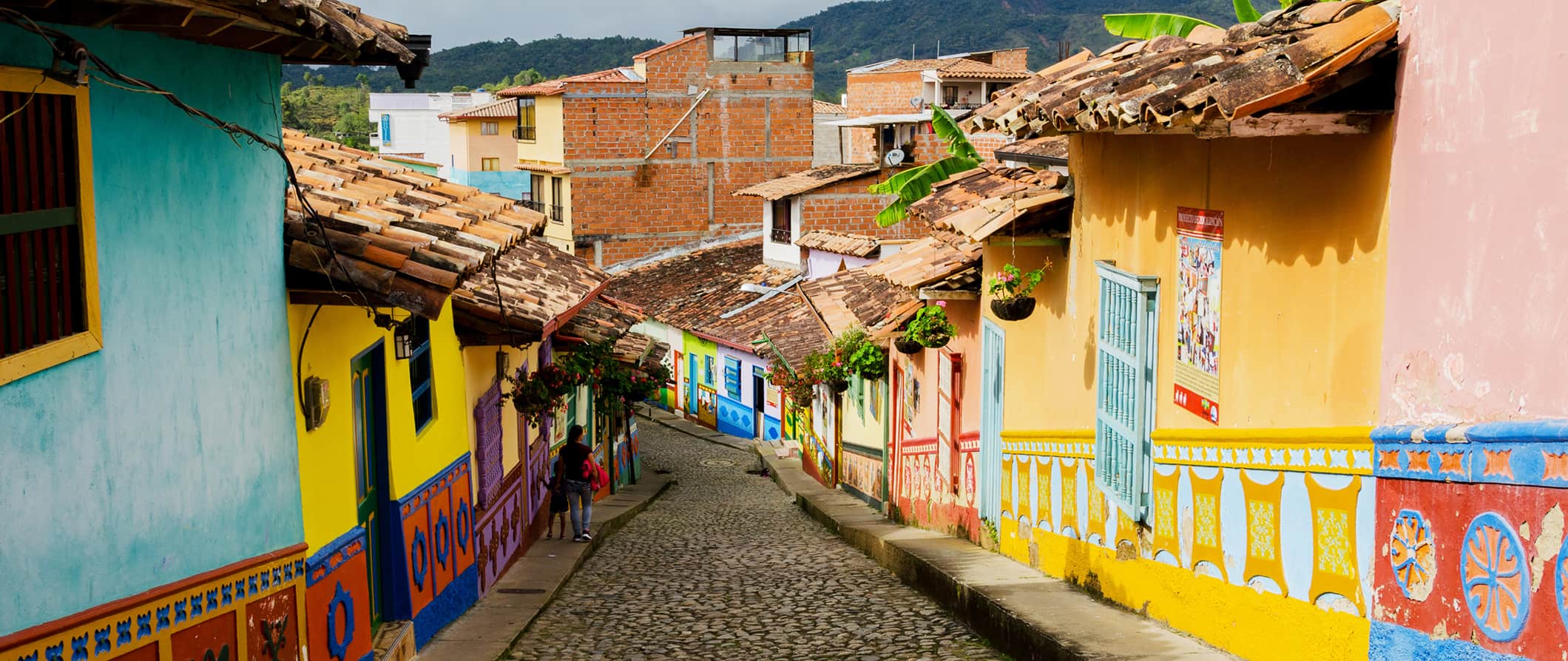
Colombia is fast becoming the travel highlight of South America. After decades of struggling with crime and cartels, Colombia has become a hub for digital nomads and budget backpackers. More and more people are visiting to soak up the sun and enjoy the country’s low cost of living.
I loved my time in the country. I had falsely assumed that six weeks would be enough to get a good sense of Colombia. After all, six weeks is a fair amount of time to spend anywhere.
But I was wrong. Given its size and the sheer number of activities, it was barely enough to scratch the surface. (Though I did manage to see a lot more than I thought I would!)
From unbelievable scenery and lush jungles (Colombia is home to 10% of the world’s biodiversity), beautiful beaches, incredible street are, stunning architecture, salsa dancing, delicious food and cutting edge culinary trends, the ancient sites of Tierradentro and San Agustín, hip cities like Medellín and Bogotá, Colombia is a travel paradise
I had such high expectations based on what I heard from other travelers, but the country lived up to all the hype. I wish I had more time there, but I’ll just have to go back!
This comprehensive Colombia travel guide gives you all the tips and tricks you need to plan your dream trip!
Table of Contents
- Things to See and Do
- Typical Costs
- Suggested Budget
- Money-Saving Tips
- Where to Stay
- How to Get Around
- How to Stay Safe
- Best Places to Book Your Trip
- Related Blogs on Colombia
Top 5 Things to See and Do in Colombia
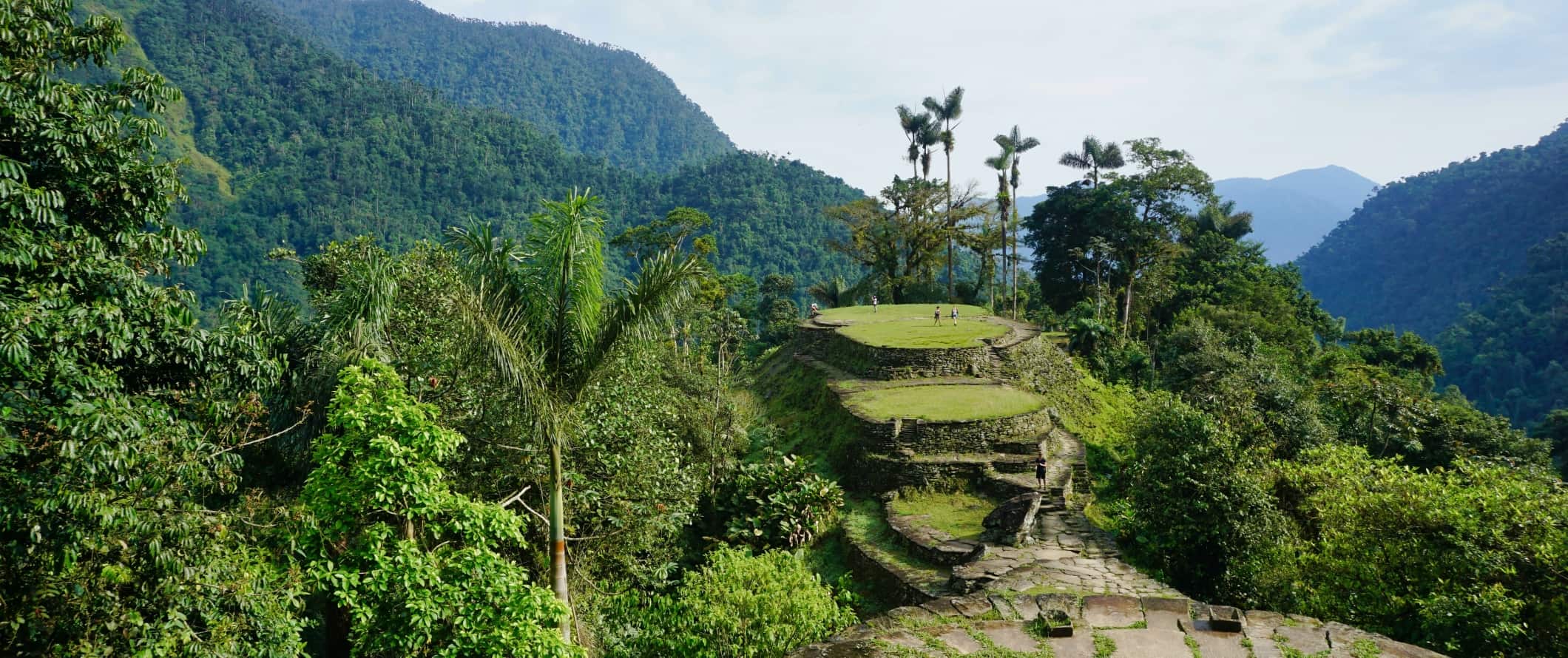
1. Get lost in Bogotá
Bogotá is Colombia’s vibrant capital. The historic downtown, La Candelaria, is filled with bright colonial buildings, museums, restaurants, bars, churches, and centuries-old houses. The foodie scene in the city is incredible, with a lot of international options and cutting-edge gastronomy.
2. Explore Tierradentro National Park
Located in southwestern Colombia, Tierradentro is one of the most important archaeological sites in South America. It contains over 100 underground tombs dating from the 10th century BCE that are the only examples of their kind in the Americas. It takes a day or two to hike all the paths around the tombs.
3. Walk the Cocora Valley
The Cocora Valley is home to Colombia’s national tree, the wax palm, which grows nearly 200 feet tall. This area also has one of the most popular day hikes in the country. You’ll cross jungle rivers, visit a bird sanctuary, and enjoy some stellar views and forest scenery. The route takes about five hours to hike.
4. Fall in love with Medellín
Medellín is one of the fastest-growing cities in Colombia. It has enough activities and things to do to fill weeks on end: microbreweries, museums, walking tours, spacious parks, street art, food tours and markets, incredible nightlife, and more. I loved it so much I spent a few weeks here.
5. Trek to the Lost City
The Lost City was built around 800 CE and contains 169 terraces carved into the mountains. It’s one of the most beautiful treks in the country, and the site is older than Machu Picchu! To visit, you need to hire a tour operator (you can’t do it by yourself). Treks last 4-6 days and cost 1,150,000 COP.
Other Things to See and Do in Colombia
1. journey to isla gorgona.
Once a prison island, Isla Gorgona is now part of a national park that lies 48 kilometers (30 miles) off the Pacific coast just southwest of Cali . You’ll see snakes, bats, monkeys, and sloths and the boat journey over also offers some chances to see humpback whales, sharks, and giant sea turtles. The remains of the prison can be seen too. Admission to the park is 51,000 COP per person.
2. Visit San Agustín
A UNESCO World Heritage Site, San Agustín is a small mountain town in the southwest that’s home to hundreds of pre-Columbian statues and burial mounds. Its collection of religious monuments and megalithic sculptures is the largest in Latin America. You need at least one full day (two to see it all in-depth). Admission to the park is 25,000 COP per person.
3. Journey into the Amazon
The Amazon basin covers almost one-third of Colombia and is the perfect place to experience the jungle. Leticia is a town bordering Peru and Brazil and is considered the jumping-off point for jungle excursions and visiting the indigenous villages on the Amazon River. The regions of Guaviare, Putumayo, and Caqueta are also popular for birding, waterfall hikes, and white-water rafting trips. For trekking, most tours involve taking a boat up the river from Leticia and a stop off with an indigenous tribe before arriving at Amacayacu National Park to begin your trek. Prices vary depending on the duration of your trip but expect to pay at least 150,000 COP.
4. Go diving
Colombia is home to some excellent dive sites. The tropical waters around San Andrés and Providencia (both of which are just off the coast of Nicaragua) are home to all kinds of fish and coral species. Tayrona National Park is an ideal place to go if you’re interested in getting up close to some sunken ships, while Gorgona Island is another hotspot for marine life. Humpback whales are common around Gorgona Island between August and October, and it’s also the only place in Colombia to see whale sharks. Expect to pay around 200,000-300,000 COP for a two-tank dive.
5. Learn about coffee
Colombia is home to some of the world’s best coffee, and a tour of a plantation is the best way to find out how your morning brew gets from farm to cup. Salento is the best base for doing coffee tours as it’s one of the oldest towns in the coffee-growing region. The Finca El Ocaso Salento plantation offers one of the most in-depth visits for learning about how the entire process works. Even if you’re not a coffee drinker (I’m not) it’s worth taking a tour to learn about this important industry. Tours start from 25,000 COP.
6. Take in the chaos of Cali
As Colombia’s third-largest city, Cali is the center of the sugar and coffee industry for the country, as well as being host to a terrific nightlife. The city is also the salsa capital of the world and there are tons of places to learn how to salsa dance here. Be sure to also relax in the famous Plaza de los Poetas (Square of the Poets), a park filled with life-like statues of local poets and visit the Iglesia de la Ermita (Ermita Church), one of the city’s most striking pieces of architecture thanks to its 20th-century Gothic design. Eat at the restaurants on Ave 9N in Granada, and try some chuleta valluna (a delicious Colombian dish of breaded and marinated fried pork cutlets).
7. Day trip to Popayán
Popayán rivals Cartagena as Colombia’s most impressive colonial town. It’s known as La Ciudad Blanca (The White City) because all the buildings are painted white. Popayán is also a college town (there are three universities here), and it has produced 17 presidents too. I really loved the slow pace of life and the surprisingly robust food scene here (eat at La Cosecha Parrillada, Restaurante Italiano y Pizzeria, La Fresa, and Mora de Castilla). While you don’t need a lot of time here (take the walking tour, climb the hill, see the churches, and you’re done), I do suggest staying longer to enjoy the slow pace of life. So much of Colombia is go-go-go; it’s nice to find a place that’s more “stay and relax awhile.”
8. Dance and party through Carnival
It may not be Rio de Janeiro, but Colombia has a great Carnival season. Although the Carnival in Barranquilla (which is the largest) takes place in February, Pasto and Manizales offer carnivals in the first week of January. The Carnaval de Blanco y Negro in Manizales is a wild few days of revelry (make sure you bring old black and white clothes if you attend as you’re certain to get doused in flour, paint, and foam!).
9. Do some extreme sports in San Gil
San Gil, located 300 kilometers (186 miles) north of Bogotá, is considered the outdoors capital of the country. Extreme sports fans love it here. You can go white-water rafting, paragliding, caving, rappelling, jungle trekking, and more here. Prices vary but expect to pay around 80,000 COP for paragliding and closer to 200,000 COP for a white-water rafting trip.
10. Relax in Tayrona National Park
Located on Colombia’s Caribbean coast, Tayrona boasts long stretches of golden beaches lined with coconut palms and a dense rainforest with lots of easy day hikes. I highly suggest you start early at the big entrance at El Zaino and exit the park through Calabazo. This underused route takes a whole day, and once you pass the Cabo San Juan campground, you get the last half of the trail to yourself. Tayrona is also home to over 20 dive sites, including shipwrecks and coral reefs, and two-tank dives are as little as 300,000 COP. For some beach time, head to picturesque Cabo San Juan. At the end of the sandy stretch of beach is a lookout point, topped with a hut of hammocks.
11. Head to the Providencia and San Andrés Islands
These islands, which are actually closer to Nicaragua than Colombia, are considered some of the most unspoiled places in the Caribbean. They have white-sand beaches, stunningly clear blue water, and few crowds (though, thanks to some recent press, Providencia is becoming a lot busier). Try to make it when tens of thousands of black crabs migrate to the sea, which happens twice a year for 1-2-weeks between April and July. It’s not always easy to nail the timing but the sight is truly something to see! As mentioned, the region is also perfect for diving.
12. Visit Guatapé
This pueblo is one of the most picturesque towns in Colombia and one of the most colorful in the world as most of the traditional homes have murals painted on the bottom half of their façades that depict animals, people, and shapes. Most people come to climb the steep (and difficult) staircase to the top of the monolithic Rock of Guatapé (La Piedra) for some of the best views in the country. Guatapé is a long day trip from Medellín (hostels in the city organize them throughout the week), so I recommend trying to spend at least a night here so you aren’t as rushed and can enjoy the area a little more.
13. Hike in Chingaza National Park
This is one of the biggest nature reserves in Colombia, home to more than 1,000 plant species and 187 bird species. Here you can learn about the Páramo ecosystem (an alpine tundra ecosystem) and how it affects the global water system. (Fun fact: Nearly 80% of Bogotá’s water supply comes from Chingaza.) If you’re going to hike, one of the best routes is the challenging hike to the summit of Lagunas de Siecha.
14. Hike in Minca
Minca is located in the foothills of the Sierra de Santa Marta Mountains. Once a sleepy backpacker town, it’s now a hot spot for tourists escaping the oppressive heat on the Caribbean coast who want to do some quiet hikes. One of the best hikes here is to Los Pinos, but it isn’t easy and takes 6-8 hours (though it’s worth the effort). Just make sure you bring lots of water and start early so you don’t get stuck in the dark.
15. Visit Cartagena
Cartagena is one of the most visited destinations in Colombia, thanks to a lot of direct flights and cruise ship visits. The city was founded by the Spanish in 1533 (though there were indigenous settlements in the area as far back as 4,000 BCE) It’s famed for its Old Town, a maze of cobbled alleys, flower-covered balconies, and large churches on spacious plazas. Despite the crowds (and there are a lot of crowds), I really enjoyed Cartagena. While there aren’t a lot of tourist activities (you can do most of them in a single day), what makes it a wonderful place to visit is just that: it’s somewhere you can slow down, relax, and gorge on the phenomenal food!
16. Take a free walking tour
One of the first things I do when I arrive in a new city is to take a free walking tour. It’s the best way to see the highlights and connect with a local guide who can answer all your questions. All the major cities have free walking tours in English that provide a solid introduction to the country. Just make sure to tip your guide at the end!
For information on specific destinations in Colombia, check out these guides:
- Bogotá Travel Guide
- Cali Travel Guide
- Cartagena Travel Guide
- Medellín Travel Guide
- Santa Marta Travel Guide
Colombia Travel Costs
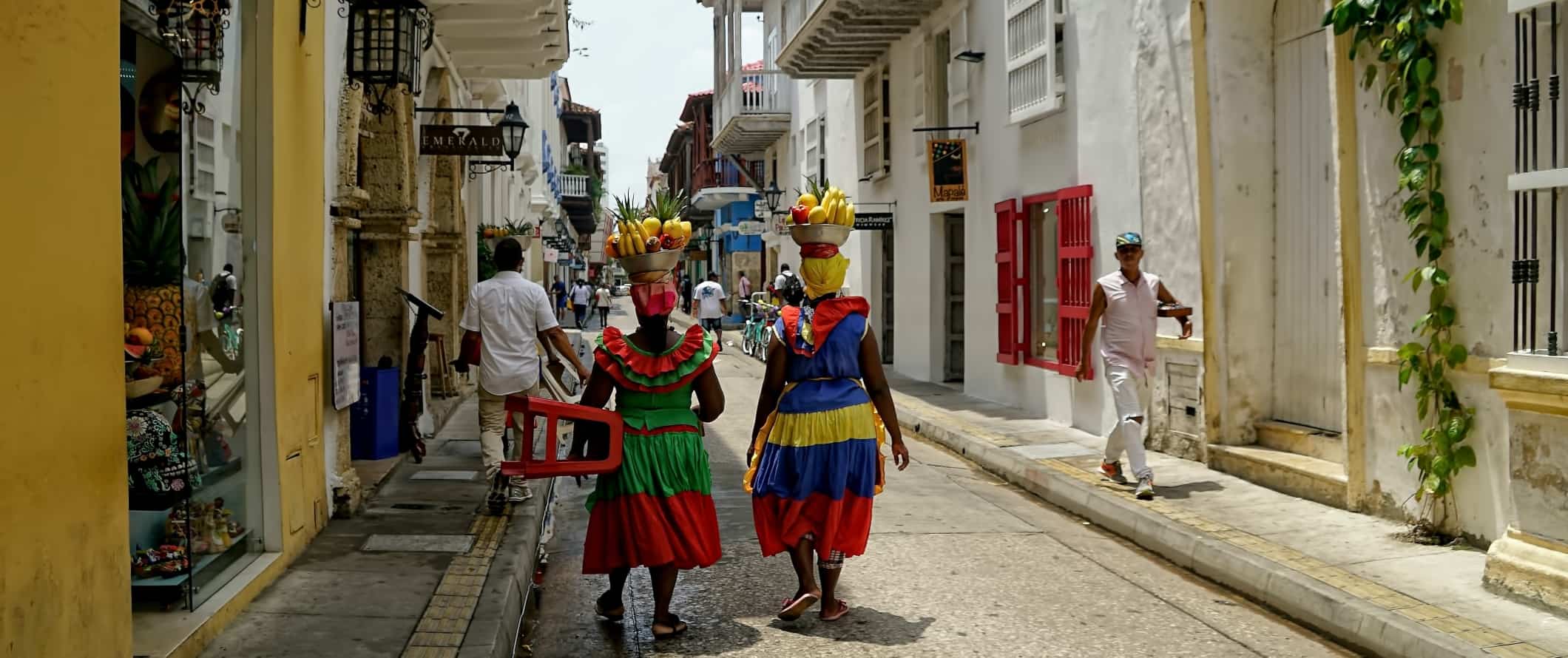
Accommodation – Most hostel dorm rooms in Colombia cost 30,000-45,000 COP per night, though in some cities and towns you can find them as low 15,000 COP. Private hostel rooms cost around 40,000 COP, though during the high season and in major metropolitan areas, it can be double that or even more. Free Wi-Fi and self-catering facilities are common, and many hostels also include breakfast.
Budget hotels in Colombia cost around 60,000 COP per night. On the coast and in the high season, however, most places are closer to around 120,000 COP. If you’re looking to stay at some of the really lovely boutique hotels the country has to offer, expect to pay around 650,000 COP or more a night.
Airbnb is available in the larger cities, with private rooms starting around 50,000 COP per night but going as high as 150,000 COP if you don’t book early. For an entire home or apartment, prices start at 150,000 COP but average closer to 280,000 COP.
There aren’t many campgrounds in Colombia, but hostels and guesthouses sometimes let you pitch a tent on their property. They charge you as much as a dorm bed though. Avoid wild camping here as it isn’t very safe.
Food – Colombian food is a blend of indigenous, Caribbean, and European traditions. While ingredients and popular dishes vary by region, common staples include maize, potato, cassava, rice, and all kinds of tropical fruit (dragon fruit, papaya, guava, passionfruit). Fried plantains, chicken soup, tamales, empanadas, meat pies, and roasted piglet are just some of the delicious popular dishes you’ll encounter.
A meal at a restaurant serving local food costs between 10,000-15,000 COP in the major cities and about 6,000-10,000 COP in the countryside. You can also find a lot of cheap food like empanadas for 2,500 COP (they make the best snack food). An arepa on the street is about 3,000-5,000 COP. Ceviche, which is popular throughout the country, costs around 15,000 COP.
Most Western restaurants cost 20,000-30,000 COP for a main dish. For fast food (think McDonald’s), expect to pay 15,000-20,000 COP for a combo meal.
Beer at the bar can be found for as little as 4,000 COP but you’re likely to pay double at a backpacker bar. Cocktails, which are becoming really popular here, cost around 20,000 COP.
Grocery shopping is very cheap, costing about 80,000-100,000 COP per week for staples like rice, beans, produce, and some meat or seafood. Most hostels have kitchens so you can make yourself breakfast and sandwiches to lower your food costs.
Backpacking Colombia Suggested Budgets
If you are backpacking Colombia, my suggested budget is 115,000 COP per day. This assumes you’re staying in a hostel dorm, cooking some meals and eating cheap street food, taking public transportation to get around, limiting your drinking, and sticking to mostly free or cheap activities like free walking tours and enjoying nature.
On a mid-range budget of 235,000 COP per day, you can stay in a budget hotel or private Airbnb, eat out for all your meals, enjoy a few drinks, take some guided tours, take a couple of cheap domestic flights, and do more paid activities like visiting museums and taking a food tour.
On a “luxury” budget of 500,000 COP per day, you can stay in a hotel, eat out anywhere you want, drink more, take more domestic flights, and do whatever tours and activities you want. This is just the ground floor for luxury though. The sky is the limit!
You can use the chart below to get some idea of how much you need to budget daily, depending on your travel style. Keep in mind these are daily averages – some days you spend more, some days you spend less (you might spend less every day). We just want to give you a general idea of how to make your budget. Prices are in COP.
Colombia Travel Guide: Money-Saving Tips
Colombia is generally an inexpensive destination to visit. Accommodation is cheap unless you are staying at major hotel chains. There are a ton of markets with cheap food, local attractions are affordable, and buses are cheap. But if you want to save even more, here are some extra ways to save money in Colombia:
- Eat like the locals – It’s easy to eat on a budget here if you stick to local Colombian food. Street food is super cheap, allowing you to fill up on a budget. Skip the fancy restaurants and Western food.
- Avoid drinking cocktails – Colombia has a lot of awesome cocktail bars now — especially in Medellín — but these drinks are expensive, usually costing around 20,000 COP (sometimes up to 30,000 COP). If you’re on a budget, skip the cocktails and stick to beer.
- Cook your food – While local food is really cheap, you can also save some money by grocery shopping. It’s not as glamorous but shopping for some of your meals will help you cut costs so you can afford to eat out more here and there.
- Avoid the hostels on the Caribbean coast – The hostels on the Caribbean coast were pretty lackluster. They were expensive and didn’t have great facilities, especially the bigger “resort” ones in beachside towns like Palomino. Instead, you can find comparatively cheap budget hotels on Booking.com for less than a private room in a hostel (and only slightly more than a dorm bed).
- Avoid “Gringolands” – Everything where the gringos cluster are is going to be double its normal price. Avoid staying in areas with lots of tourists and expats (like Poblado in Medellín, Cartagena’s Old Town, or Park 93 in Bogotá) since you’ll end up paying more for everything.
- Stay with a local – Couchsurfing connects you with locals who not only give you a free place to stay but can share their insider tips and advice. It’s the best way to save money and connect with a local.
- Fly Viva Air – If you’re planning to fly around Colombia, the best deals are on Viva Air. It has the cheapest fares in the country (though it flies to the fewest places). It’s best to book a few weeks in advance. (LATAM and Avianca, the two major carriers, also have deals sometimes so check their websites too.)
- Use miles and points – Get to Colombia by using your miles to fly Avianca (which is part of Star Alliance). There are also a lot of hotel chains in Colombia where you can use points too. If you have miles and/or points, you can burn through a lot of them in Colombia — and the redemption rates are excellent! And if you want to learn how to start earning miles for free travel, this post can show you how to get started!
- Avoid the airline surcharge – Non-Colombians are charged higher airfare prices than locals. If you look at the non-local version of the website, you won’t see the super saver cheap fares. To get around this, load up the local Spanish versions of an airlines’ website. Then use your browser extension to translate the pages and book away! This gives you the lower, Colombian prices, and no one will challenge you at check-in about your fare.
- Take Uber – Uber is the cheapest way to get around Bogotá, Cali, and Medellín. That said, Uber is actually illegal so don’t sit in the back seat or you might get stopped. I also like to tip the Uber drivers here, since the fares are so cheap and they are taking a risk. But all the drivers I met did this out of necessity — they couldn’t pay their bills if it weren’t for Uber.
- Haggle with taxi drivers – There are no meters in Colombia. While prices from the airports are regulated and non-negotiable, everything else is just a matter of your bargaining skills. If you’re going to take taxis, haggle before you get in the car.
- Take free walking tours – Most major and medium-sized cities in Colombia have free walking tours. They are a good way to see the city on a budget and connect with a guide who can answer all your questions. My favorites include Free Walking Tour Cartagena, Free Walking Tour Bogotá, and Real City Tours Medellín.
- Pack a water bottle – The tap water here is generally safe to drink so bring a water bottle with you to avoid buying single-use plastic. My preferred bottle is LifeStraw , which has built-in filters to ensure your water is always clean and safe.
Where to Stay in Colombia
Looking for a budget-friendly place to stay? Here are some of my favorite accommodations in Colombia:
- Media Luna (Cartagena)
- Republica Hostel Cartagena (Cartagena)
- Los Patios Hostel Boutique (Medellín)
- Hostel Rango Boutique
- Sugar Cane Hostel (Medellín)
- Selina (Bogotá)
- The Cranky Croc Hostel (Bogotá)
- La Brisa Loca (Santa Marta)
- Dreamer Santa Marta (Santa Marta)
- Hostel Masaya Santa Marta (Santa Marta)
- Viajero Cali Hostel & Salsa School (Cali)
- Oasis Cali Hostel (Cali)
How to Get Around Colombia
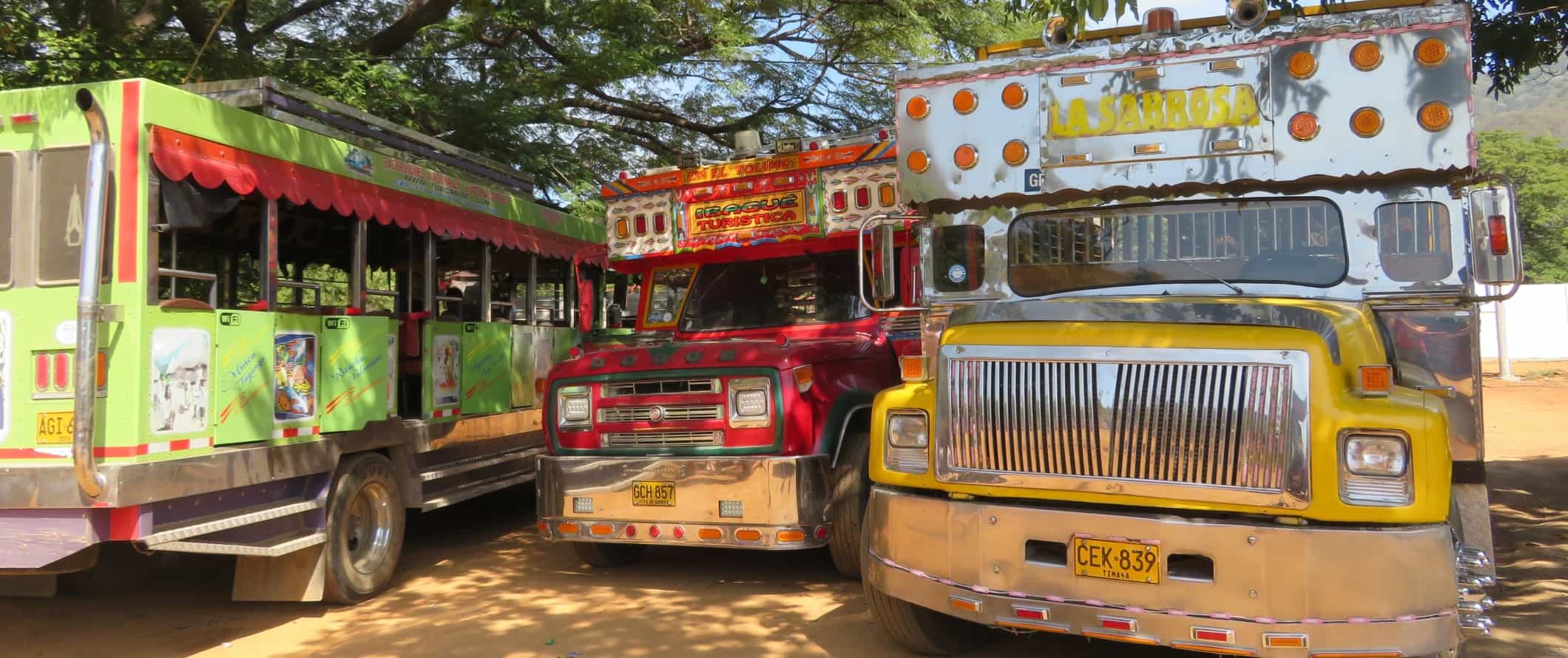
Public Transportation – Local transportation is cheap here. The metro in Medellín is only around 2,500 COP for a one-way fare. Local buses are the most common type of transportation in towns and cities. The fare is usually between 1,000-2,500 COP.
Colectivo – A colectivo in Colombia is a minibus, a shared taxi, or a large Jeep (and really, anything else that gets you around). These are run by private owners and are used mostly for short journeys between towns. You have to negotiate the price ahead of time. Since they’re faster and more direct than regular buses, they’re also more expensive.
It’s very common for travelers to use a colectivo . Drivers usually yell out destinations as they pass on the streets, or they approach you to see if you’re going their way.
Bus – Intercity buses are the most common way to get around Colombia. A bus from Bogotá to Medellín costs around 52,500 and takes around 9 hours while a bus to Quito, Ecuador from Bogotá costs around 181,000 COP and takes over 24 hours. Medellín to Manizales is 31,000 COP and Salento to Cali is 59,000 COP. On average, expect to spend 20,000-40,000 COP for a bus.
Companies like Expreso Palmira and Expreso Trejos are reliable companies, and they make it easy to research schedules and fares on their websites.
Flying – Budget airlines are often cheaper than buses in Colombia, so make sure to search for flights to compare prices. Viva has the cheapest flights (though they also have strict luggage restrictions). A flight from Bogotá to Medellín, for example, can be found for as little as 55,000 COP! Book early to find the best deals.
Train – There are no trains in Colombia.
Car rental – Cars can be rented for as little as 90,000 COP per day, though you don’t need one to get around the cities. Additionally, since break-ins are common I’d avoid renting a car unless you’re doing a specific trip beyond the cities. Drivers need to be at least 21 and have an International Driving Permit.
When to Go to Colombia
Colombia’s location near the equator keeps the climate pretty consistent throughout the year, with average daily temperatures hovering around 24°C (75°F) near the coast and 7-17°C (45-63°F) at higher elevations.
The peak season for tourism is from December to March, as well as the week before Easter (Semana Santa). Prices are most expensive during this time, but the country overall is fairly dry. If you’ve come to have fun, time your visit for the Carnival in Barranquilla, which takes place every February. This is the biggest Carnival, but Pasto and Manizales also have lively carnivals in the first week of January.
The rainy season varies per region. In the mountainous Andean area, there are two dry and two wet seasons. The driest months occur from December-March and then July-August. In Southern Colombia, rainfall is more frequent, but the showers never last long.
If you’re planning on doing a bit of everything in Colombia — from hiking in the mountains to lounging on beaches and visiting ruins — December to March is definitely the best time to visit so you can take advantage of ideal conditions all across the country. Just be prepared for bigger crowds.
How to Stay Safe in Colombia
Colombia requires a lot of caution. On the whole, it’s generally safe and you’re not going to get kidnapped or anything. But there is still a lot of petty crime in the country, especially at night.
In fact, there’s a local expression about this in Colombia: “No dar papaya” (Don’t give papaya). Essentially, it means that you shouldn’t have something “sweet” out in the open (a phone, computer, watch, etc.) that would make you a target. Keep your valuables hidden, don’t wander around places you shouldn’t at night, don’t flash money around, avoid coming out of nightlife spots alone at night, etc.
Simply put: Don’t put yourself in a position where people can take advantage of you.
Do not do drugs here. You’re going to get a lot of offers but don’t be one of those people. First, it’s a huge insult to Colombians, who are trying to shed their drug-related past and don’t want to be associated with the cartels. Second, it’s illegal (although small amounts of cocaine and marijuana are decriminalized). Third, there’s a lot of violence associated with it, and you can end up in some bad situations. Don’t do drugs here.
You should also use caution when withdrawing money from an ATM. Avoid the ATMs on the street if possible and go into the bank to use the ATM. That way you can put your money away discreetly without being watched.
If you are eating out, keep your backpack on your lap or place your foot or a chair leg through a strap. It is very common for someone to try and snatch your bag so keep it secure at all times.
If you’re worried about getting ripped off you can read about common travel scams to avoid here. There’s a lot so keep an eye out!
Look for hotels or hostels with 24-hour security. You always want someone around in case you need assistance.
Always trust your gut instinct. Make copies of your personal documents, including your passport and ID. Forward your itinerary along to loved ones so they’ll know where you are.
If you experience an emergency and need assistance, dial 123.
Because of the current situation in Venezuela, it’s a good idea to avoid the border towns of Cúcuta and Maicao.
For more in-depth coverage of how to stay safe in Colombia, check out this post we wrote that answers some frequently asked questions and concerns.
The most important piece of advice I can offer is to purchase good travel insurance. Travel insurance protects you against illness, injury, theft, and cancellations. It’s comprehensive protection in case anything goes wrong. I never go on a trip without it as I’ve had to use it many times in the past. You can use the widget below to find the policy right for you:
Colombia Travel Guide: The Best Booking Resources
These are my favorite companies to use when I travel. They consistently have the best deals, offer world-class customer service and great value, and overall, are better than their competitors. They are the companies I use the most and are always the starting point in my search for travel deals.
- Skyscanner – Skyscanner is my favorite flight search engine. They search small websites and budget airlines that larger search sites tend to miss. They are hands down the number one place to start.
- Hostelworld – This is the best hostel accommodation site out there with the largest inventory, best search interface, and widest availability.
- Booking.com – The best all around booking site that constantly provides the cheapest and lowest rates. They have the widest selection of budget accommodation. In all my tests, they’ve always had the cheapest rates out of all the booking websites.
- Get Your Guide – Get Your Guide is a huge online marketplace for tours and excursions. They have tons of tour options available in cities all around the world, including everything from cooking classes, walking tours, street art lessons, and more!
- SafetyWing – Safety Wing offers convenient and affordable plans tailored to digital nomads and long-term travelers. They have cheap monthly plans, great customer service, and an easy-to-use claims process that makes it perfect for those on the road.
- LifeStraw – My go-to company for reusable water bottles with built-in filters so you can ensure your drinking water is always clean and safe.
- Unbound Merino – They make lightweight, durable, easy-to-clean travel clothing.
- Top Travel Credit Cards – Points are the best way to cut down travel expenses. Here’s my favorite point earning credit cards so you can get free travel!
Colombia Travel Guide: Related Articles
Want more info? Check out all the articles I’ve written on Colombia travel and continue planning your trip:
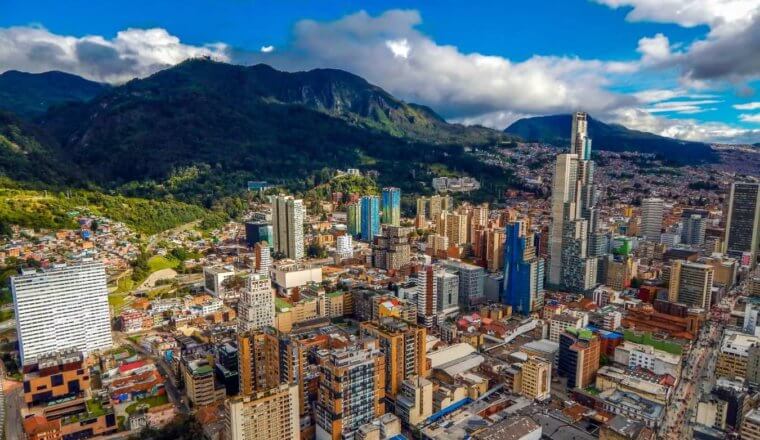
Where to Stay in Bogotá: The Best Neighborhoods for Your Visit
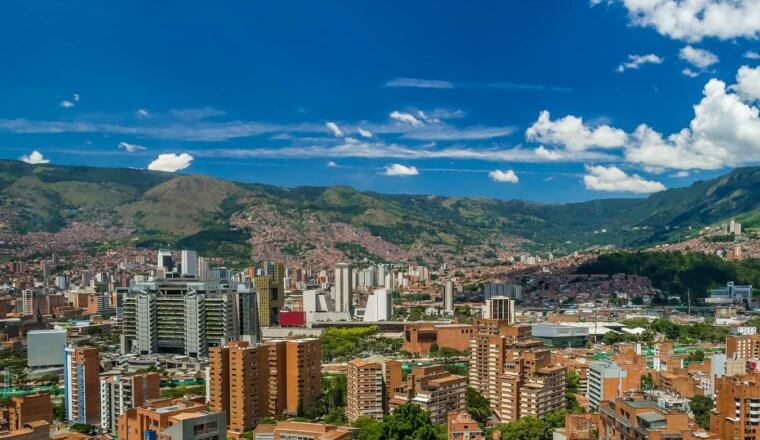
Where to Stay in Medellín: The Best Neighborhoods for Your Visit
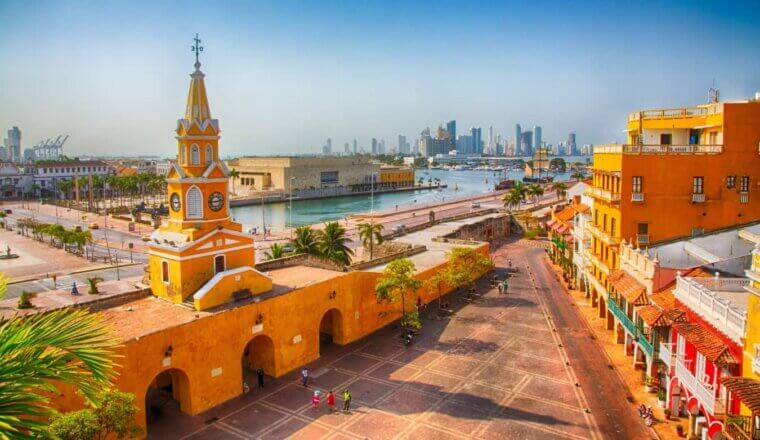
Is Colombia Safe to Visit?
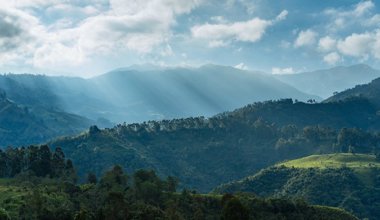
How Much Does it Cost to Travel Colombia?
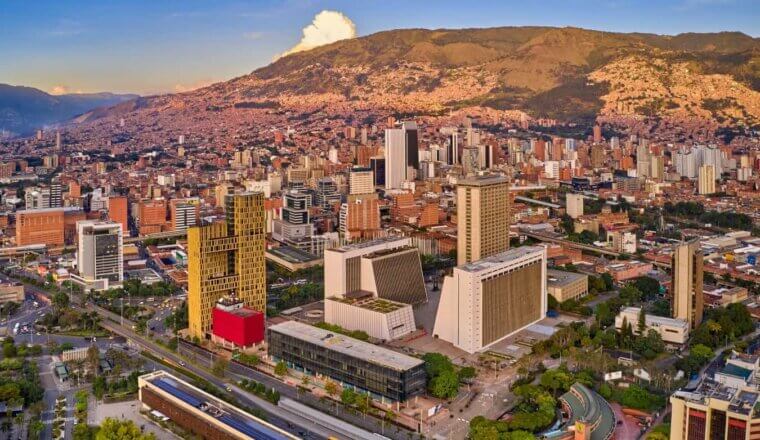
14 Things to Do in Medellín (and the ONE thing NOT to do!)
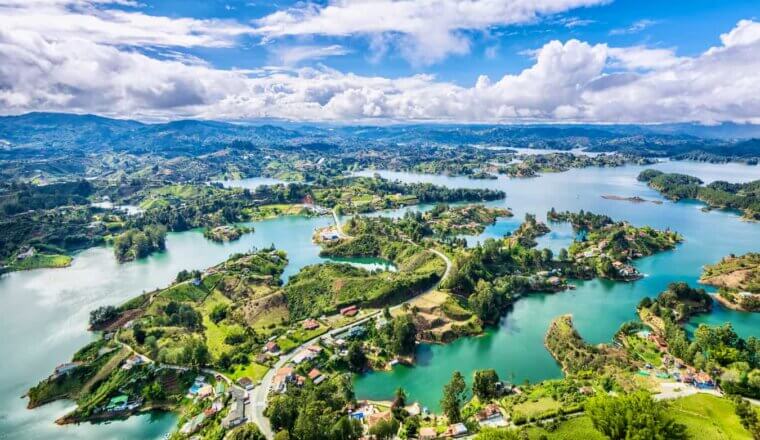
My 21 Favorite Places to Visit in Colombia
Get my best stuff sent straight to you, pin it on pinterest.
- Where To Stay
- Transportation
- Booking Resources
- Related Blogs
We’re sorry, this site is currently experiencing technical difficulties. Please try again in a few moments. Exception: request blocked

Immerse Yourself in Colombia: An Authentic Travel Guide
Leaving from...
Going to...
Discover Destinations When to Travel How to get around Visa Food Other Tips
Discover Colombia
If you asked someone 30-odd years ago what they knew about Colombia, you’d probably get responses relating to drug cartels, danger and of course Pablo Escobar.
Since then Colombia has moved on dramatically. Just take the constant 10% increase in tourists year on year as an example of how this country has changed for the better.
We’ve created this ultimate guide to Colombia to share with you everything that this diverse country has to offer. Decided that Colombia is somewhere you HAVE to visit?
Check out our twelve in-depth guides to learn about the best things to do and see in Colombia.
Is Colombia worth visiting?

Colombia is one of the world’s most diverse countrie s, boasting two oceans, the Andes mountain range, cultural and thriving cities, flourishing jungles and with that native wildlife.
Housed across Colombia’s 59 national parks , you’ll find over 10% of the world’s animal species, making it a great country to explore if you love wildlife.
If exploring the wilderness is not what you are after, there’s no need to worry. Colombia has a number of energetic metropolitan cities that offer a great food scene, a number of historical sites and innovation spurred by the entrepreneurship that’s flourishing within the cities.
Destinations like Cartagena boast stunning colonial architecture that tells a story of years ago, transporting you back in time as you wander through its streets.
Throughout Colombia, you’ll come across a number of once-in-a-lifetime opportunities . Whether it be whitewater rafting, hiking, kitesurfing, horse riding, or diving…the list literally goes on and on!
Keep reading: Looking for inspiration on where to stay? Check out our list of 43 best places to stay In Colombia to discover the most unique and best-value accommodations out there.
Is Colombia safe?
Despite Colombia’s huge steps towards change, people are still asking the same question – ‘Is Colombia safe?’
In short, it’s safe to travel to Colombia , but you need to be aware of which places are better to avoid. We’ve put together a devoted blog that delves into travelling safely in Colombia . You can use this resource to help you decide whether Colombia is safe enough for you.
Best destinations in Colombia

Top 3 places to visit in Colombia
Colombia is a diverse country offering lots of different opportunities and adventures depending on where you go.
As hard as it is to pick, here are our top three places to visit in Colombia:
Medellin — an incredible and innovative city

Once home to the famous drug lord, Pablo Escobar, Medellin used to be considered one of the most dangerous cities in the world. Fast forward to now and Medellin has completely transformed itself into a thriving and innovative cosmopolitan city.
The city is considerably safer with a top-notch transport system via its metro system and cable cars, numerous stunning parks and delicious restaurants.
Another great thing about Medellin, due to its location, temperatures remain warm and pleasant , meaning you can visit all year round. If you are in Medellin, we also recommend taking the 2-hour bus journey from Medellin to Guatape as a day trip.
Cartagena — where the Caribbean and Colombia collide

Situated on Colombia’s Caribbean coast, Cartagena boasts some of the best-preserved colonial architecture in all of the Americas.
Once a crown jewel of the Spanish empire, you’ll clearly understand why it’s been made a UNESCO World Heritage Site after a few hours of strolling around Cartagena. The 13 km of ancient walls seemed to have preserved the city, giving you the feeling of going back in time.
Being on the coast, Cartagena isn’t too far from some amazing beaches including Playa Blanca. Inevitably though, this kind of beauty has attracted tourists from all over the world, meaning some of the popular sites and beaches can get very busy! It’s only a 1 to 1.5-hour flight from Bogota to Cartagena .
Tayrona National Park — some of Colombia’s best nature

Tayrona National Park sits in northern Colombia at the foothills of the Sierra Nevada de Santa Marta where they meet the Caribbean coast.
The national park is a large protected area perfect for travellers looking to explore some of the best beaches in Colombia or adventure through lagoons to picturesque cloud forests. The beaches offer great places to snorkel, whilst the jungles provide opportunities to hike amongst wildlife such as birds, lizards and monkeys.
It takes around 5 hours from Cartagena to Tayrona National Park , while it’s only 3 hours from Barranquilla and less than an hour from Santa Marta .
When is the best time to visit Colombia?
Due to Colombia’s proximity to the equator, temperatures remain stable throughout most of the year. Temperatures do vary depending on altitude, though. The higher you go, the colder it tends to be.
Here’s a rough guide of the average temperatures depending on altitude:
- < 1000 m – More than 24°C (Cartagena, Santa Marta, Cali)
- 1000 – 2000 m – ~ 20°C (Medellín, Manizales)
- 2000 – 3000 m – ~ 14°C – (Bogota, Pasto)
Colombia has two seasons, a wet and a dry one. The dry season is between December and March , considered one of the best times to visit Colombia, and the wet season runs from April to June and October to November . July to September can also be a good time to visit because it’s mainly dry, plus it’s whale season!
December to February is the busiest time
However, you won’t be the only person wanting to travel at the best time, so if you chose to visit Colombia between December and February, expect a lot of tourists. With more tourists come higher prices as businesses have the leverage to increase prices.
Travelling outside of these months can save you some money and also provide the opportunity to explore tourist sites without thousands of other tourists.
How to get around in Colombia
Colombia is a huge country with plenty of amazing destinations to explore. Around a third of the country is taken up by the Amazon Jungle where moving around is extremely difficult, but luckily the rest of the country isn’t quite as tricky to navigate.
Here’s a short overview of the main transport options:

When travelling around Colombia, one of your main forms of transport will be its extensive bus network. Long-distance buses tend to be relatively comfortable with reclining seats, air conditioning and toilets.
You’ll be looking for comfort as journeys between the big cities are pretty long . For example, Medellin to Cartagena is 14 hours, and Bogota to Cali is 10 hours.
The main bus companies in Colombia are Expreso Palmira, Bolivariano and Trejos , which also provide good service and easy-to-use websites.

A big tip when travelling by bus in Colombia is to wear warm clothes. We all love a bit of air conditioning, but those buses get seriously cold. Ten hours in arctic temperatures isn’t exactly going to be enjoyable!

Flying in Colombia is a popular option, especially for those short on time or who have a larger budget to play around with.
There are a number of domestic airline providers including the two biggest Avianca and Copa. VivaColombia is also a big player in the airline space and tends to offer the cheapest flights, but watch out for the luggage restrictions.
The majority of the time flights are more expensive than the bus, but it’s worth checking just in case, because the cost-time ratio may be worth it. Do keep in mind that taking a short-haul flight can be up to ten times more polluting than taking a more environmentally-friendly option like the bus.
By colectivo
Colectivos are small minivans or truck-style vehicles that are mainly used for short journeys within a city or between two that are nearby. This form of transportation is predominantly used by locals, meaning they’re usually cheap.
Make sure to agree on the price to your destination before getting in, though. They’re definitely not as comfortable as the bus and don’t have much space for your luggage. Because they don’t have set pick-ups and drop-offs, they can get you closer to where you want to be than the bus.
A big downside though is that they don’t leave until they’re full , so you could be waiting around for a while!
Although renting a car in Colombia isn’t a very popular choice amongst travellers, it doesn’t mean it’s not an option. You’ll need a passport, credit card and international driver’s license in order to rent a car with prices starting from around $17.
Sure, having your own car gives you the freedom to explore at your own leisure, but do consider that the road quality between some cities isn’t great and Colombians aren’t known to be the most careful drivers. Bus travel is also very convenient, so we would recommend using the available transport.
Colombia doesn’t have a train network , so unfortunately this isn’t an option!
Entry requirements and visa for Colombia
We all love to hear it, travelling to Colombia is relatively stress-free when it comes to immigration and Visas. A large number of countries are able to enter Colombia visa-free for a period of up to 90 days.
This includes countries such as the United Kingdom, United States, Australia, New Zealand and those within the European Union, amongst others. These countries are all included in the list of countries that don’t require a Visa .
In addition, all visitors are required to have a passport that is valid for at least 6 months after the date of entry, so make sure to renew your passport if it’s going to run out soon.
Proof of exit
Sometimes Colombian border force will ask you for proof of exit from the country in the form of a plane, bus or boat ticket. Other times they won’t. If you don’t want to take your chances but don’t know when you want to leave Colombia, there’s a way around it.
‘Rent’ a plane ticket for $12. Best Onward Travel book a real plane ticket for you that is valid for 48 hours. It’s 100% legal and safe.
Must-try food in Colombia

Colombia’s food scene varies depending on which region you’re visiting, meaning if you’re backpacking through Colombia you’ll be treated to a variety of dishes and flavours.
Colombia is a country rich in natural ingredients which you’ll find in their predominantly meat-based dishes and delicious soups.
Of course, we couldn’t write about Colombia and not mention the coffee. Coffee in Colombia boasts a mild, well-balanced flavour that is popular all around the world. Their average annual coffee production is 11.5 million bags, the third highest in the world.
Here are some of our favourite dishes you have to try whilst you’re in Colombia:
- Bandeja Paisa — is the national dish of Colombia. It was originally created to provide peasant workers with enough energy for a hard day’s work. Nowadays it’s a substantial, high-calorie lunchtime meal which is perfect for anyone looking for a challenge. It consists of rice, plantain, arepa (corn cakes), avocado, minced meat, chorizo, black sausage, fried pork rind and then topped with a fried egg. We wish anyone who takes this dish the best of luck!
- Mondongo Soup — you’ll find this dish served in most Colombian restaurants, but the dish may not be for everyone. It consists of diced tripe (typically the stomach of a cow, slow-cooked chicken or beef stock and lots of vegetables. When in Rome as they say!
- Empanadas — are a popular snack throughout both Central and South America. They are typically deep-fried pastries stuffed with a variety of different fillings, from meat with potatoes to vegetarian options. If you’re looking for a healthier choice, you can also find baked versions too. Empanadas are usually super cheap and the perfect snack to tide you over till dinner.
Essential travel tips for Colombia

Here’s a selection of the best tips and pieces of information that may make your trip to Colombia that bit easier:
Paying with Colombian Pesos in Colombia
Colombia uses the Colombian Peso . The last time we checked (June 2023), $1 was equivalent to around 4170 COP.
It’s good to always have some cash on you. Not all establishments take cards. You’ll also need cash for taking the bus, markets and tips too.
In all of the big cities, there will be plenty of ATMs available to withdraw money and in more rural areas, you may have to rely on bank branches instead.
Most ATMs in Colombia charge between 10,000 and 14,000 COP to withdraw money. However, BBVA, Davivienda and Colpatria don’t apply charges to certain cards, so try these ones first.
Buying a sim card in Colombia
There are three main mobile providers in Colombia — Movistar, Tigo and Claro . You’ll be able to find stores for these providers all over Colombia, and in most of the international airports. Claro is the most popular of the three and offers great coverage, speed and packages.
Although it can be tempting to buy a sim card when you first arrive in a country, if you’re on a budget, I would avoid doing this. The sim cards at the airport are often a lot more expensive than buying it in a store in the city. They know that people will pay for convenience!
Colombia’s language cheat sheet
The language spoken in Colombia is Spanish .
It’s always good to know a few essential words before travelling to a place, so here are a few to get you started:
- Hello – Hola
- Thank you – Gracias
- Please – Por favour
- Sorry – Lo siento
- Beer – Cerveza
The perfect packing list for Colombia
For the majority of your time in Colombia, you’ll probably be enjoying warm temperatures and lots of sunshine. Meaning you’ll need cool and light clothes.
However, if you’re venturing to higher altitudes, make sure to bring some warmer clothes, especially for the nighttime. A rain jacket is also a good shout if you’re travelling outside of the dry seasons.
Aside from the essential travel gear, here are some that have become permanent fixtures on our packing list:
- Reusable water bottle – they’re better for the environment and can save you money on water.
- A portable charger – there’s probably going to be a time when your phone’s battery is on red, at a time that you desperately need it.
- An adaptor – Colombia uses plugs A and B, the same as the main plugs used in North and Central America. A universal travel adaptor is a great buy if you’re travelling between different continents.
Was this post helpful?
Click on a star to rate it!
Average rating 4.3 / 5. Vote count: 8
No votes so far! Be the first to rate this post.
As you found this post useful...
Follow us on social media!
We are sorry that this post didn't meet your expectations.
Your feedback is very valueable to us
What was missing in this post? (TIP: If you want us to reply to your feedback, you can leave your email in this text box.)

Kate is a writer, (ex)Management Consultant and avid traveller. She recently returned from a 2-year career break exploring the world and decided corporate life wasn’t for her. She’ll soon be testing life as a digital nomad. She’s visited over 40 countries and fell in love with Latin America in particular. Her travelling has inspired a passion for yoga, salsa, hiking and Spanish.
- Explore more
- Barranquilla
- Santa Marta
- Isla Grande
- Tayrona National Park
- Bogota to Cali
- Bogota to Cartagena
- Bogota to Medellin
- Cartagena to Barranquilla
- Medellin to Bogota
- Medellin to Cartagena
To enhance your experience on our website, we utilize cookies. By browsing our site, you agree to our cookie use. For details, please read our privacy policy .

- Skip to main content
- Skip to header right navigation
- Skip to site footer

Albom Adventures
Capturing the essence of travel through photography
Inspiring travel through photography
Colombia Travel Tips: 10 Cool Things to Know Before You Go
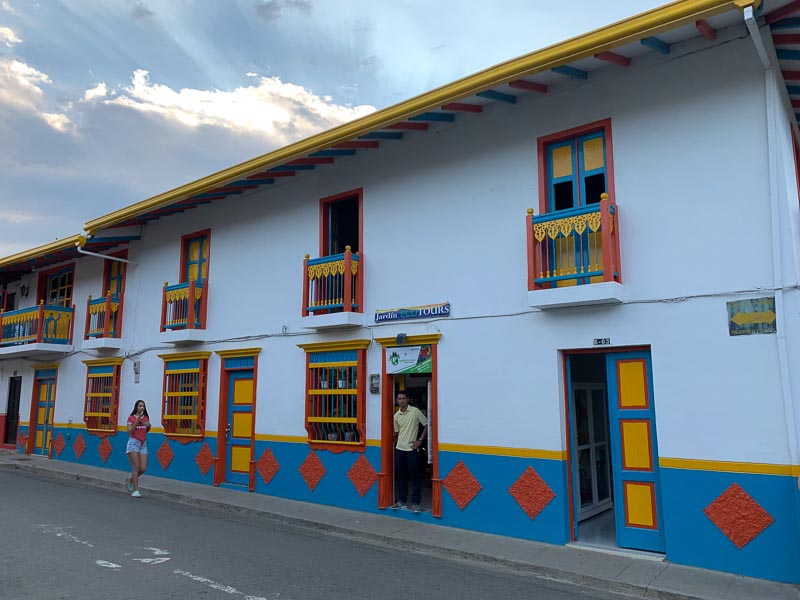
If you are heading to South America, don’t miss these Colombia travel tips shared with us by travel writer Mike Jensen. Read more about him below.
Colombia is a country of a dynamic and colourful culture and generally friendly people. With so much to do and so many things to see, you can easily book a month’s worth of travel and still have a lot more discovery to cover.
With a coastline on its edge and mountains along its border, adventurers flock from all over the world to navigate its diverse terrains.
But hit shows like “Narcos” combined with an infamous history involving drug lords and cartels, cast this beautiful country in a negative light.
That version of Colombia has largely disappeared, giving way to a reinvigorated capital of Bogota and a culture defined by its bravery and resilience.
Colombia travel tips
If you’re planning on a trip to this South American country , here are ten essential tips to know:
1. Drop your stereotypes about drugs and cocaine
Most residents in Medellin still recall growing up in an environment characterized by drug wars, but those days are long gone. Coca leaves are still chewed on the streets and available for tourists, but Colombia has moved on from its sordid past.
The hero-villain Pablo Escobar is definitely still the most famous person coming from this country. However, Colombia’s culture is a lot more diverse. Modern-day Colombia is made more vibrant and unique by its survival of its brutal past and story of redemption.
2. Safety and security are not an issue
Safety in Colombia has vastly improved throughout the years. A huge part of this is a heightened presence of military personnel at checkpoints and in high-traffic areas in the city. The drug cartels are still present, but they’ve moved their business off the streets.
The FARC is also on the brink of a monumental peace agreement (2016/17), so many factors contributing to the misconception about Colombia’s lack of safety are going away.
This unfair view of Colombia is unfortunate, but the locals are warm and generous. They are a proud people, and they won’t be shy to show you the beauty of their culture. If you want to find bad people in Colombia, you will definitely find them, just as you will in any other country. If you take regular safety precautions when you travel regardless of destination, you’ll find that Colombia is a safe and enjoyable place to travel.
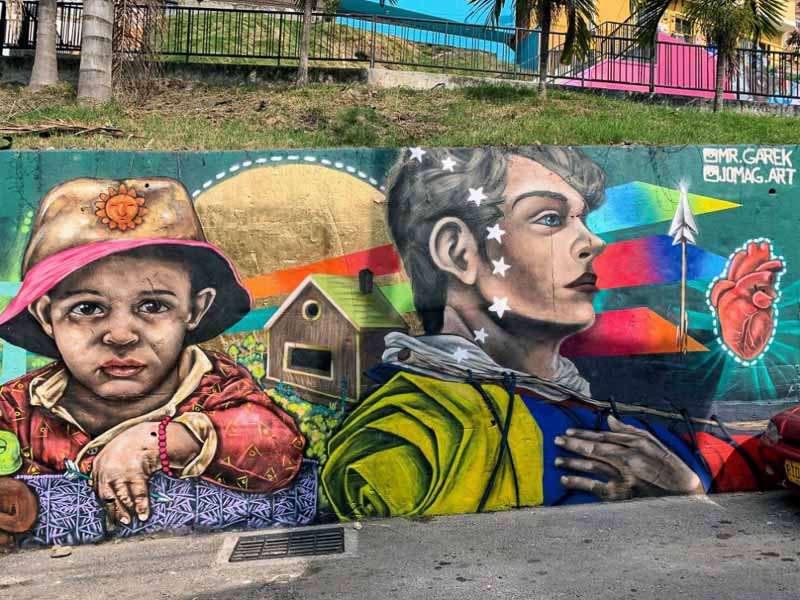
3. Be prepared for unpredictable weather
Weather in different parts of Colombia varies greatly. It depends more on the altitude than the time of the year. If you’re travelling from north to south, it will be more likely that you’ll experience all four seasons. Bogota is relatively cool during the day and chilly at night, while Cartagena is known for very humid weather and Medellin for what feels like eternal spring.
4. Aguardiente is the most Colombian staple you should have
There’s no drink more popular in Colombia than aguardiente. Every administrative region in Colombia has a license to produce its own aguardiente, so there’s no one way to describe it. It usually has an alcohol content of 60%, which already gives you an idea of what kinds of experiences go along with it.
There’s no Colombian celebration without aguardiente. You’ll also find these consumed in bars, at home, and on street corners. It’s meant to be drunk straight or as shots and usually ends with an unforgettable “guayabo de aguardiente”, which is Colombian slang for hangover.
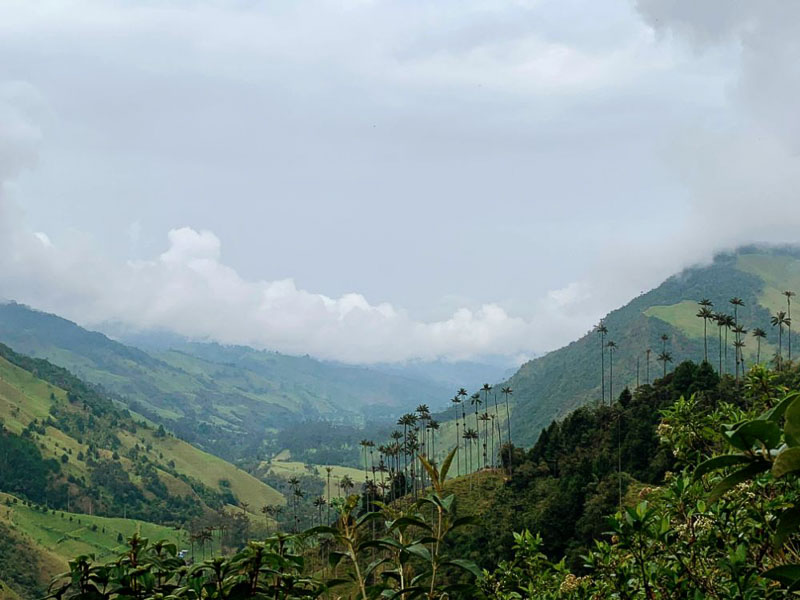
5. Head over to a Pueblito for the weekend
Pueblitos are small villages that dot the Colombian countryside, which can be great weekend destinations. While the cities are abuzz with energy, the Pubelitos offer servings of the country’s colonial past and old-world charm. There are many Pubelitos you can visit from any major urban city. All can be accessed by road.
It’s easy to hire a chauffeured car or rent your own to make the trip. The most iconic Pueblito is Guatavita off of Bogota , which offers idyllic views of casitas that best characterize Colombia’s classic countryside.
6. Perk up your days with café tinto
One of the many popular exports of Colombia is coffee beans, and it’s in very high demand even inside the country. Colombia’s coffee beans are so heavily exported that you’ll most likely be served Nescafe in a coffee shop unless you make your way to one of the coffee farms.
The best way to find café tinto, however, is through the throngs of vendors selling café tinto in thermal jugs on every street and town square. These small cups of coffee are very strong and commonly taken black.
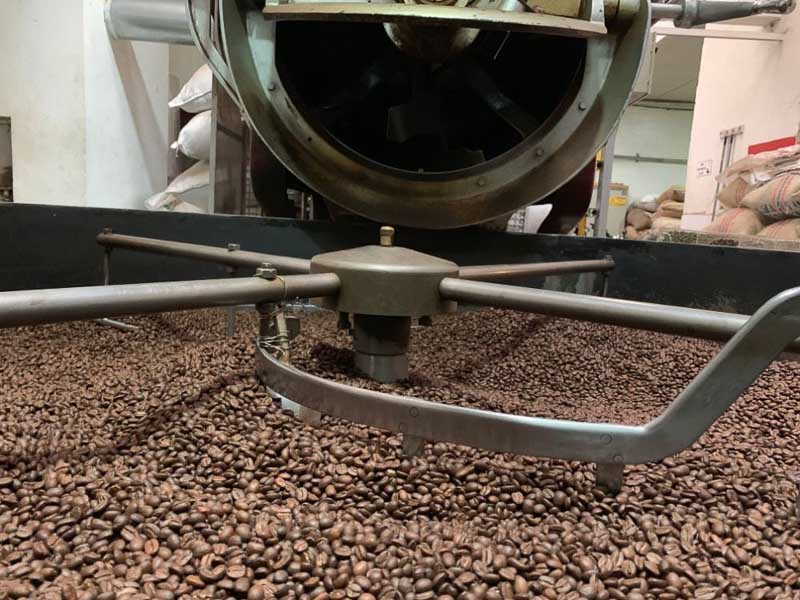
7. Colombia is not as cheap as it once was
Colombia can still be cheaper than travelling in Europe, but don’t expect dirt cheap prices that are common in Southeast Asia. The biggest spending will be on accommodations, especially in popular backpacker or tourist towns. There will be a place for any kind of budget, but you will end up spending a bit more on a standard room in Colombia than you normally would in Asia.
If you will be doing long-distance travelling by bus, these tickets can also be expensive, but they’re comfortable, airconditioned, and sometimes have WiFi. Eating out can also be quite pricey unless you stick to street food, which is a great cuisine on its own.
8. Colombian food is hearty and filling
If you’re travelling to Colombia, forget about your diet. Colombian food is equivalent to comfort food – so engrained in the culture of the people and meant to express warmth and a sense of home. That said, it’s not everyone’s cup of tea. Most of the dishes are fried, and there’s a noticeable lack of vegetables. Meals mostly consist of rice and meat with a medley of side dishes that include some vegetables, beans, or fruits.
Street food is a cheap option, but not necessarily a healthy one. The most popular one is the arepa, which is a type of bread made from maize and sometimes stuffed with cheese or meat. Another popular snack is the empanada, deep-fried minced meat in batter.
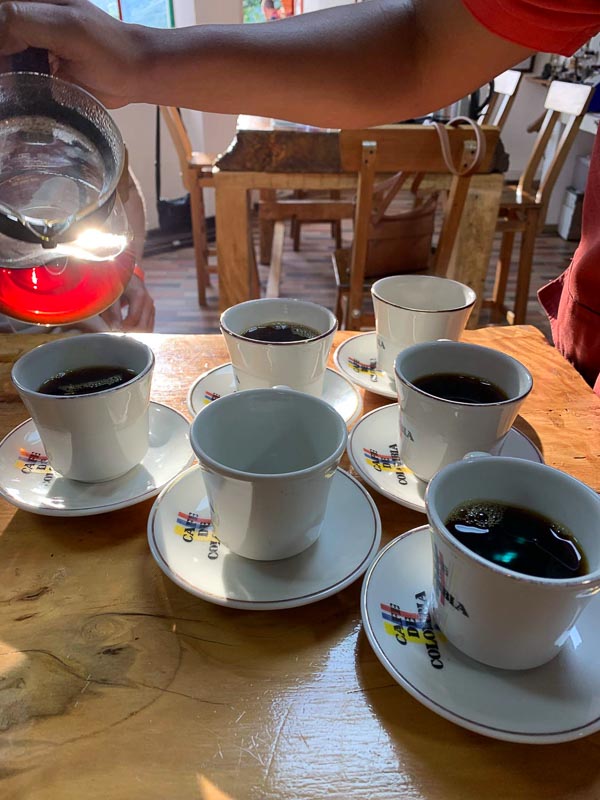
9. Try to learn key Spanish words
Some people in Colombia know how to speak English, but it’s not a very common language. Sometimes, not even people who work in the tourism industry know how to speak English. Hotel receptionists usually know how to speak English and would be the best people to help you navigate around the city.
Look up common Spanish words for directions, places, and questions. If you do know some Spanish, learning a bit of Colombian slang will also help. If all else fails, be ready to have a translator on your phone to make things go more smoothly. (Download the free Google Translate App from the Apple App Store or from Google Play .)
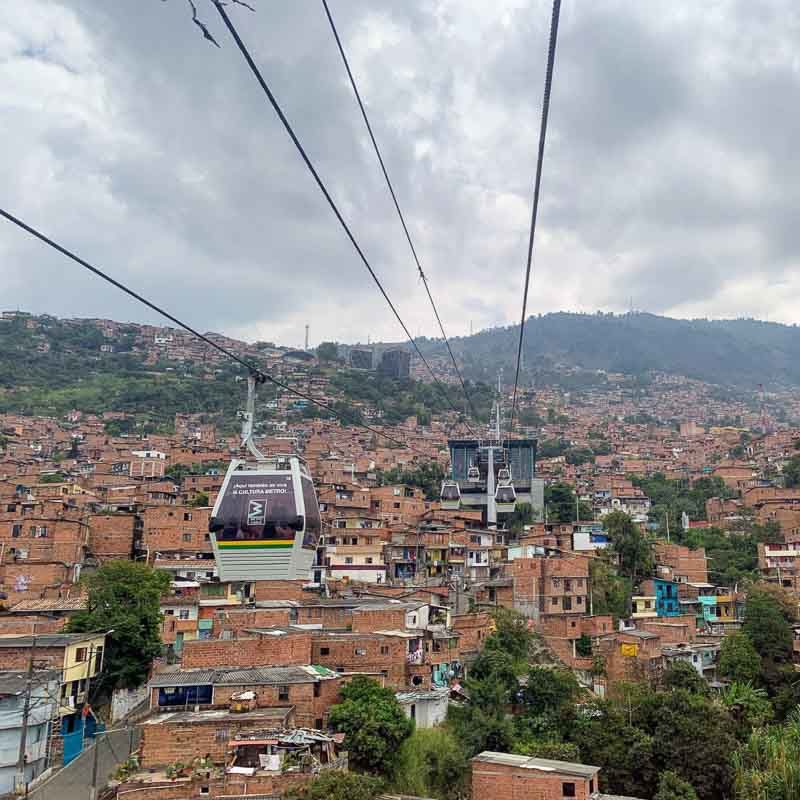
10. Colombia is beautiful
There are so many aspects to Colombia that make this country an unforgettable destination. You will hear music everywhere, locals dancing salsa and rumba regardless of time and place, and it’s difficult not to join in. Landscapes are very diverse – lush jungles, volcanoes, deserts, beaches, plantations, alpine lakes – and outdoorsy folk will have a ball exploring the country. Lastly, Colombians are generous and kind; hanging out with the locals will definitely add a different dimension to your trip.
Getting to Colombia
Getting to Colombia is easy, either via road, plane, private boat, or cruise ship. And once here, how to get around Colombia can be just as simple.
Final thoughts on travelling to Colombia
Colombia has gone through rough times, but the modern-day country has a lot to offer. There is beauty to be seen everywhere, from its kind people to the gorgeous sceneries. Whether you’re visiting for a week, a month, or even a year, there is much adventure to be had, and it’s not unlikely that you will fall in love with this country.
Save on your trip with these resources
These are our go-to companies when we travel. We believe this list to be the best in each category. You can’t go wrong using them on your trip too.
- Flights : we use Expedia for the best and cheapest flight options.
- Accommodations: we use Booking.com (hotels), VRBO (self-contained), or Hostelworld (budget).
- Cars (gas or electric): we use RentalCars to search for deals and dealer ratings.
- Motorcycles : we have heard good things about BikesBooking .
- Campervans or Motorhomes : we use Campstar where Albom Adventures readers get a 3% discount.
- Private guides : we love the private guides at Tours by Locals .
- Travel Insurance: while not required, we always opt for travel insurance and start at InsureMyTrip to compare coverage plans.
Check out our travel resources page for more companies that we use when you travel.
Be sure to check out Albom Adventure’s South American itinerary , as well as our guides to Cartegena and to the animals at the port area .
Save for later
If you enjoyed this article on Colombia travel tips, please share it on social media and save it for later on Pinterest.
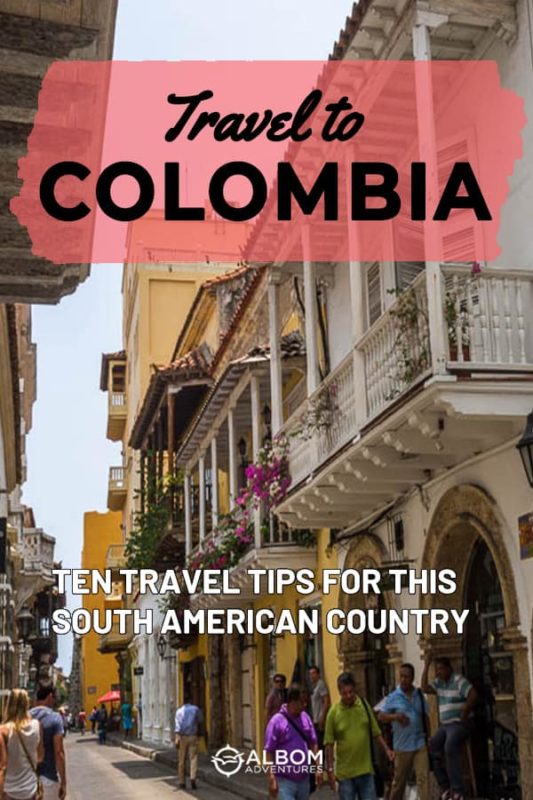
Which of these Colombia travel tips surprised you?
About the author.

Mike is addicted to both adventure and travel, so he decided to combine the two to form TheAdventourist . There, he shares his journey from one adrenaline rush to another, always exploring new places as he goes. You can find him sharing his travels on Facebook .
More from South America you might also like …
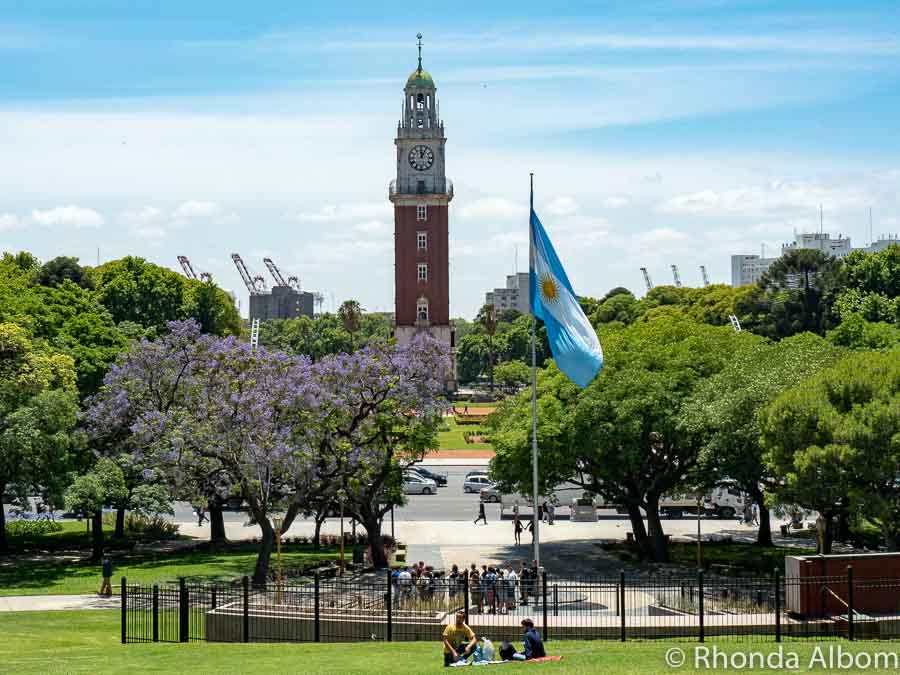
Argentina Travel Tips: A Guide for First-Time Visitors
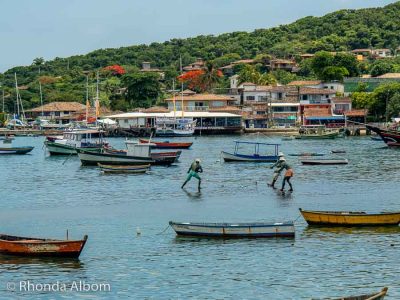
10 Best Beaches in Buzios Brazil, a Stunning Coastal Town
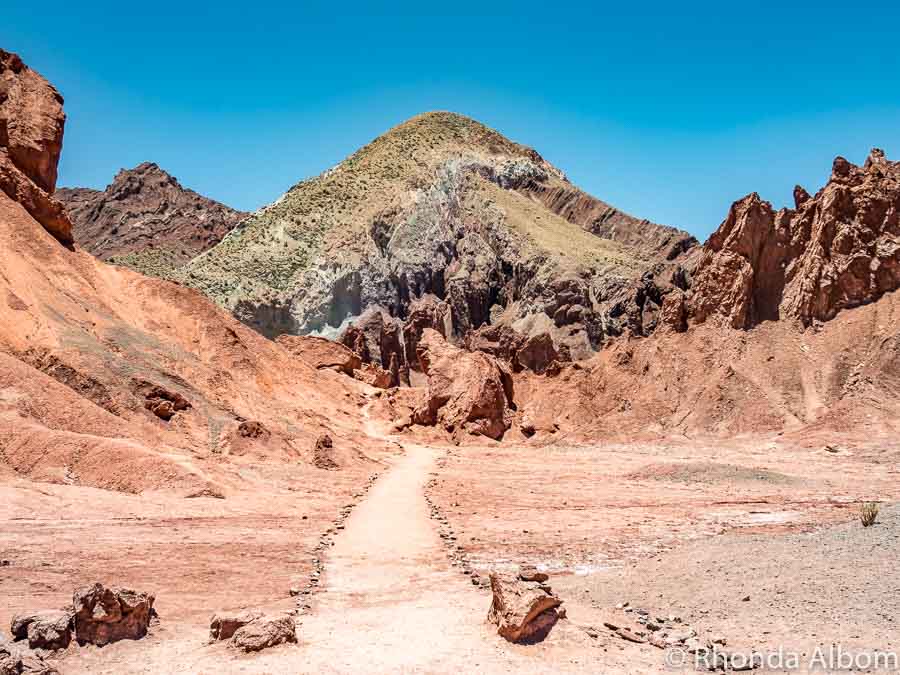
17 Things to Do in San Pedro de Atacama Desert
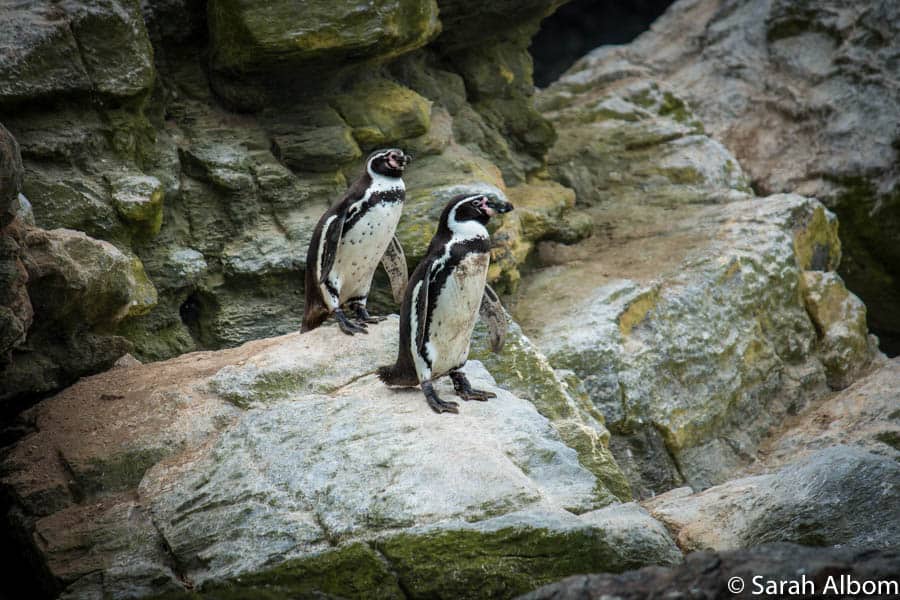
Getting to Isla Damas – Seeing Penguins in Chile
About albom adventures editorial team.
Albom Adventures’ editorial team consists of travel bloggers and other travel writers who periodically provide content to this blog. If would like to join our editorial team, please send us an email via the information on our contact page .
Reader Interactions
Paul Pietrangelo
May 3, 2021 at 1:27 am
Hi Rhonda, It’s been some time. Sorry for not being there often. We had so many problems with this new home to the point I want to move. This builder is useless. I lived in Pointe West for over 31 years with less problems and I’m living in this new home for just 4 months with so many problems. The builders of today just want their money and that’s all. I miss cruising. Some friends want us to go on a cruise in January. I’d love to but my wife & I are not sure because of all the difficulties and most of all Covid. We have our first shot and will get the second one in August. I’m stay scared. Maybe we’ll cruise in 2023. Enjoy but keep safe.
Cruisin Paul
June 14, 2020 at 4:03 pm
This is interesting, and I learned a lot! I got interested in Colombia when I had a group of pre-teen students visit my school (at the time). I want to go one of these years.
Manisha Yadav
May 6, 2020 at 5:17 am
Detailed article and beautiful tips. Let us hope travel opens soon.
April 30, 2020 at 1:12 pm
i have a friend that grew up in Colombia that recently went and she was showing me all of her pictures. Essentially everything you said about Colombia she agreed with. Thanks so much for sharing your tips and encouraging travel to this gorgeous destination!
L. Diane Wolfe
April 29, 2020 at 5:26 am
I’d love to try genuine Columbian coffee.
April 29, 2020 at 2:37 am
Well done as always. I would love to have some coffee. I’ll bet it’s even better there and the Colombian coffee here.
Have a fabulous day and week, Rhonda. ♥
April 29, 2020 at 1:15 am
Obviously a country with a love for vibrant colors – the first two shots are so vibrant! Great series.
Alex J. Cavanaugh
April 28, 2020 at 11:36 pm
Think I’ll avoid both drinks and watch what food I eat. Shame they don’t do more vegetables.
Alan Blair Bates
April 28, 2020 at 3:02 pm
I guess things have changed on the violence end of things but I like what you have to say.
Photo Cache
April 28, 2020 at 12:29 pm
It is a popular travel destination. I don’t know if I get to visit it someday.
Worth a Thousand Words
Leave a Reply Cancel reply
Your email address will not be published. Required fields are marked *
Save my name, email, and website in this browser for the next time I comment.
This site uses Akismet to reduce spam. Learn how your comment data is processed .
Privacy Overview
- Colombia Tourism
- Colombia Hotels
- Colombia Bed and Breakfast
- Colombia Vacation Rentals
- Flights to Colombia
- Colombia Restaurants
- Things to Do in Colombia
- Colombia Travel Forum
- Colombia Photos
- All Colombia Hotels
- Colombia Hotel Deals
- Last Minute Hotels in Colombia
- Things to Do
- Restaurants
- Vacation Rentals
- Travel Stories
- Rental Cars
- Add a Place
- Travel Forum
- Travelers' Choice
- Help Center
Is it safe to travel to Colombia? - Colombia Forum
- South America
- Colombia
Is it safe to travel to Colombia?
- United States Forums
- Europe Forums
- Canada Forums
- Asia Forums
- Central America Forums
- Africa Forums
- Caribbean Forums
- Mexico Forums
- South Pacific Forums
- South America Forums
- Middle East Forums
- Honeymoons and Romance
- Business Travel
- Train Travel
- Traveling With Disabilities
- Tripadvisor Support
- Solo Travel
- Bargain Travel
- Timeshares / Vacation Rentals
- South America forums
- Colombia forum

24 replies to this topic

Colombia has dramatically evolved over the last 30 years, especially safety wise. It is far from being as safe as Switzerland or Singapore, but Colombia is probably slightly safer than Mexico, and on par with Argentina.
It is certainly a growing economy with poverty and social challenges to address, but Colombia has absolutely positively evolved from the terrible reputation the country has in Europe.
Take information from people who have actually gone to Colombia, not from Auntie Brigit who is basing her opinion solely on reputation.

Disclosures
> 62 y/o solo MALE traveler.
> started off in Europe whete its not so safe either.
When you look at the USA travelers website you have to condider their audience. They have to assume those that have money to travel but no common sense, snd those woth little money and with common sense and everything in between.
You should check your own givermnents travel advisory. Who knows there maybe a special on belgiums...kidnappins or roberies..
Ive been to those 3 cities so far and didnt have issues, but thats just a snapshot in time too. Who know what will happen tomorrow - anywhere!
I you have traveled before and use....
Common sense
Pay attention to your surroundings
You should do fine.
But when traveling in a group, WHO will be watching out for each other? Will everyone be so chatty, that no one will be watching or paying attention???
Do your due diligence and go ftom there.
Yeah, I saw on instagram someone claiming there was 16 tourists going missing per day in Columbia...and they even had a source. it's laughable.
Post #3 stated it perfectly.
And guerillas...not once in our research, blogs, others experiences here and talking to people in country, and 3 weeks in country, were those words even mentioned once.
This post has been removed at the author's request.
Welcome back
For what its worth it apprears you did your homework and are now trying to convenience yourself its ok to go.?
If what you are reading - and believing - is telling you to stay - where is the common sense?
There are other safer? Places, but watchout what you read - again?...since you may go down that rabbit hole - again.

I tend to look at the recommendations from the UK or Ireland governments, and downplay the comments from the US. As others have noted, the US advice tends to be extremely overblown. Frankly, I'd love to see what they'd say about travel to the US!
- pets passing through Bogota airport 8:35 pm
- US dollar doesn’t go very far 7:33 pm
- Restaurants 6:21 pm
- 8 hour layover 5:54 pm
- Hotel 11:28 am
- Hotel recs w kid? 11:24 am
- Colombia trip 11:17 am
- Trip Report--Colombia for 12 days with kids ages 9 and 5 11:14 am
- Itinerary help, please--10 days in Colombia with kids 11:01 am
- Driving from Medellin to coffee farms 8:57 am
- 4 amazing days in Medellin: book your trip now! yesterday
- Flying to San Jose del Guaviare from Bogotá yesterday
- Is it safe to travel to Colombia? Apr 10, 2024
- Speaking Spanish in Colombia Apr 10, 2024
- Travelling from Cartagena to Medellin/Cali 6 replies
- When is the best time to visit Columbia? 7 replies
- Best area to stay in Bogota & Cartagena 7 replies
- Best beach resorts in colombia?? 5 replies
- Gay Life in Medellin 5 replies
- Internal Flight between Medellin and Cartagena 5 replies
- Santa Marta to Cartagena 2 replies
- Bachelor party in colombia 7 replies
- The main international airports in Colombia 6 replies
- columbia south america budget 6 replies
Colombia Hotels and Places to Stay
- How does the "pico y placa" driving restriction work in Colombia?
- Canadian Entry Fee to Colombia - Effective November 2023
- HAPPY NEW YEAR 2024! Roll Call - Who's Traveling to Colombia?
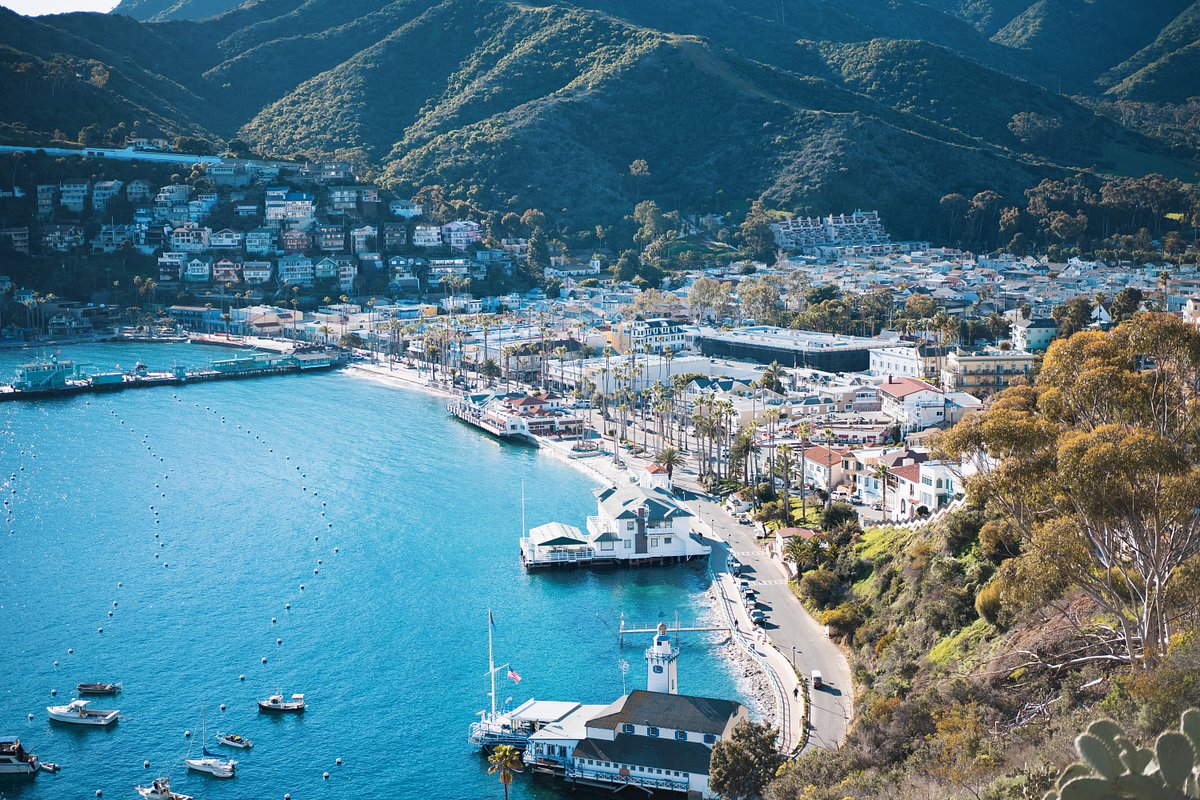

Search Smartraveller

Latest update
Exercise a high degree of caution in Colombia overall due to the threat of violent crime and terrorism.
Higher levels apply in some areas.
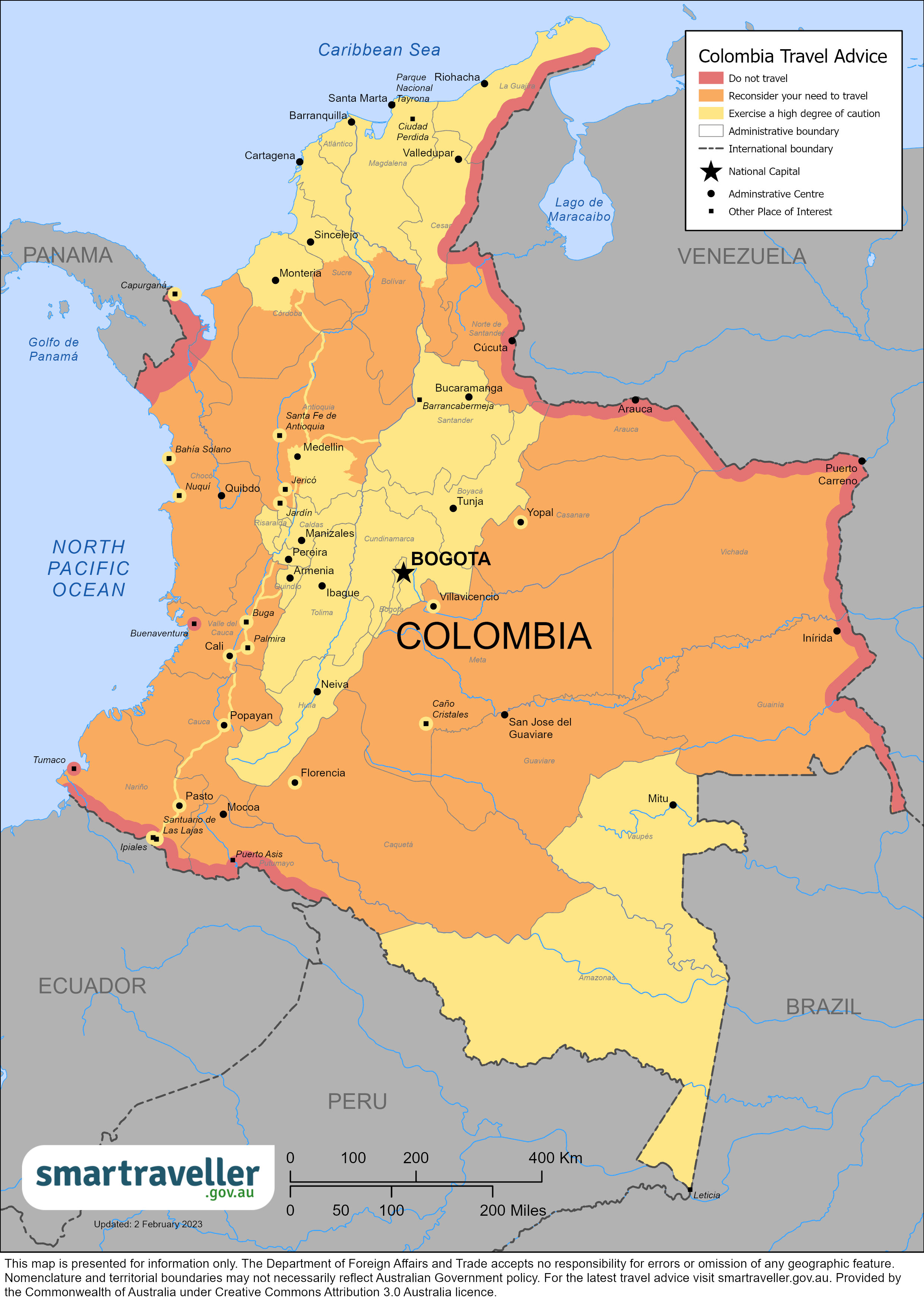
Colombia (PDF 946.27 KB)
Americas (PDF 3.25 MB)
Local emergency contacts
Fire and rescue services, medical emergencies.
Call 123 or go to the hospital.
Call 112 or go to the local police station.
Always get a police report when you report a crime. You can report any crime online or by calling +57 018 0009 197 48 or 122.
Advice levels
Exercise a high degree of caution in Colombia overall.
Exercise a high degree of caution in Colombia overall due to the threat of violent crime and terrorism.
Do not travel to areas within 20km of the Venezuela border, within 20km of the Ecuador border (except the Pan American Highway border crossing of Ipiales and the Santuario de las Lajas), the cities of Buenaventura and Tumaco and the Darién Gap (except the town of Capurganá).
Do not travel to:
- areas within 20km of the Venezuela border;
- areas within 20km of the Ecuador border (except the Pan American Highway border crossing of Ipiales and the Santuario de las Lajas);
- the cities of Buenaventura and Tumaco;
- the Darién Gap (except the town of Capurganá)
due to the high risk of terrorism and violent crime.
See ' Safety '
Reconsider your need to travel to Antioquia (except Medellin and its Valle de Aburrá metropolitan region; the south-eastern Oriente subregion; and the towns around Medellin of Santa Fé de Antioquia, Jericó and Jardín), Arauca, southern Bolivar, Caquetá (except Florencia), Casanare (except Yopal), Cauca (except Popayán), the Sur subregion of Cesar, Chocó (except the towns of Nuquí, Bahía Solano and Capurganá), the Alto Sinú and San Jorge subregions of Córdoba, Guainía, Guaviare, Meta (except Villavicencio and the tourist site of La Macarena/Caño Cristales), Nariño (except Pasto, the border crossing of Ipiales and the Santuario de las Lajas), Norte de Santander, Putumayo, the San Jorge and La Mojana subregions of Sucre, Valle del Cauca (except Cali, Buga and Palmira) and Vichada.
Reconsider your need to travel to:
- Antioquia (except Medellin and its Valle de Aburrá metropolitan region; the south-eastern Oriente subregion; and the towns around Medellin of Santa Fé de Antioquia, Jericó and Jardín)
- southern Bolivar
- Caquetá (except Florencia)
- Casanare (except Yopal)
- Cauca (except Popayán)
- the Sur subregion of Cesar
- Chocó (except the towns of Nuquí, Bahía Solano and Capurganá)
- the Alto Sinú and San Jorge subregions of Córdoba
- Meta (except Villavicencio and the tourist site of La Macarena/Caño Cristales)
- Nariño (except Pasto, the border crossing of Ipiales and the Santuario de las Lajas)
- Norte de Santander
- the San Jorge and La Mojana subregions of Sucre
- Valle del Cauca (except Cali, Buga and Palmira)
due to the high threat of terrorism and criminal activity.
See Safety
- Terrorist groups continue to plan attacks around Colombia. Monitor the media and follow the advice of local authorities.
- Violent crime and gang activity are common and increasing. Criminals may pose as police officers or spike drinks and food. Don't accept food or drink from strangers.
- Don't travel alone or at night. Drug-related crime, terrorism and civil unrest make some areas very dangerous. These include the regions within 20km of the Venezuelan and Ecuadorian borders, the cities of Buenaventura and Tumaco, and the Darién Gap. Avoid these areas.
- Kidnapping occurs in areas of Colombia. If you’re travelling to an area with a high risk of kidnapping, seek professional security.
- Ayahuasca tourism is a growing and unregulated industry in Colombia, some participants have reported being assaulted and robbed.
- Hikers are sometimes robbed at gunpoint. Hire a reputable, experienced guide. Petty crime, such as theft, occurs in tourist areas.
Full travel advice: Safety
- Yellow fever is widespread. Get vaccinated before you travel. Some national parks require a vaccination certificate to enter. Zika virus is also widespread. If you're pregnant, discuss your travel plans with your doctor.
- Malaria is a risk in areas below 800m. This doesn't include Bogotá. Consider taking anti-malarial medication if travelling to these areas.
- Altitude sickness is a risk to anyone above 2500m (this includes Bogota). Get advice from your doctor. Make sure your travel insurance covers medical evacuation from high altitude.
- HIV/AIDS is a risk for travellers. Take precautions if you engage in activities that expose you to risk of infection.
- The standard of private hospitals in Bogotá and other major cities is reasonable. Medical facilities are limited elsewhere. You'll need to pay upfront. Check your travel insurance covers medical evacuation.
Full travel advice: Health
- Don't use or carry illegal drugs. Penalties are severe and include long prison sentences.
- It's illegal to photograph military bases and strategic sites. Check with officials before taking photos.
- If you're a dual national, you're required to enter and exit on your Colombian passport. If you're male and aged over 18, you may need to complete national service. Contact the Embassy of Colombia for details.
- Minors with Colombian citizenship must exit the country with both parents, or travel with a copy of their birth certificate and the notarised/apostilled authorization to leave the country from the non-travelling parent(s).
Full travel advice: Local laws
- Due to the current State of Emergency in Ecuador, if you're planning to enter Ecuador from Colombia through land borders, you will need to present an apostilled police check covering the previous 5 years. Children travelling with family are exempt.
- If you're visiting for tourism and plan to stay for 90 days or less, you generally won't need a visa to enter Colombia. Entry and exit conditions can change at short notice. You should contact the nearest embassy or consulate of Colombia for the latest details.
- Before entering or exiting Colombia, you must complete a free online form ('Check-Mig') on the Migracion Colombia website.
- Colombian authorities or travel providers may request additional requirements to enter or exit Colombia. Contact your travel provider and check the Migracion Colombia website for further information.
Full travel advice: Travel
Local contacts
- The Consular Services Charter details what the Australian Government can and can't do to help you overseas.
- For consular assistance, contact the Australian Embassy in Bogotá . You must make an appointment to visit.
- To stay up to date with local information, follow the Embassy’s social media accounts.
Full travel advice: Local contacts
Full advice
Violent crime.
Violent crime and gang activity is common.
' Express kidnapping ' also occurs. Criminals abduct people and force them to withdraw funds from ATMs before releasing them. The victim may be held overnight so that a second withdrawal can be made the next day. There have been incidents where those who have resisted have been killed or injured. Hailing taxis on the street can make you vulnerable to this threat. Use a phone dispatch service or taxi service app to book a licensed taxi. Ask for help from staff at hotels, restaurants or entertainment venues.
Hikers are sometimes robbed at gunpoint, including when hiking on trails in and around Bogotá. Reduce your risk by hiring a reputable, experienced tour guide.
Always be alert to your own safety and security. If you suspect criminals have drugged you or your fellow travellers, get urgent medical help.
Criminals also target foreign citizens and tourists using popular dating applications and websites, particularly in larger cities such as Bogotá, Cali, Medellín and Cartagena.
If you travel to remote areas, travel with recognised tour operators and arrange for your security throughout your visit. Look for up-to-date advice from the local authorities before each stage of your journey. Be aware that mobile and internet connections in rural areas are often limited.
The towns of Bahía Solano, Nuquí and Capurganá in Chocó are popular eco-tourism destinations. However, most of Chocó department is remote. Illegal armed groups are active and involved in the drug trade throughout the department, particularly near the border with Panama. If you travel to these towns, only do so by air and don't travel inland or along the coast out of town.
If you travel to Ciudad Perdida (The Lost City) in the Sierra Nevada de Santa Marta, you should do this as part of an organised tour. If you travel to Parque Nacional Tayrona, don't venture inland. Stick to designated paths, beach areas and resorts.
The tourist site of Caño Cristales is located in the Department of Meta, in the Parque Nacional Natural de la Macarena. If you are travelling to Caño Cristales, only do so with a reputable tour company, and travel by air to and from the town of La Macarena.
If travelling in La Guajira, avoid the area close to the border with Venezuela. Be aware that medical services are limited. Hire the services of a reputable tour company. Be ready for high temperatures, scarce potable water and food (bring enough water and food).
When travelling to the archaeological park at San Agustin in the department of Huila, only enter and leave the park on the main road through Popayán or Neiva.
Drug-related criminal activity also creates danger in places where cultivation, processing and transport occur. There is evidence of high levels of coca cultivation and related criminal activity in the following Departments in Colombia:
- northern Antioquia and
It also creates increased danger in:
- regions within 20km of the Venezuelan and Ecuadorian borders
- the port cities of Buenaventura, Turbo and Tumaco
- the Darién Gap (Panamanian border)
There is a risk to your safety in any area where coca, marijuana or opium poppies are cultivated and near cocaine processing labs. In these areas, criminal groups attack, extort, kidnap, detonate car bombs and damage infrastructure.
Don't take risks or make yourself a target for criminals. To protect yourself from violent crime:
- avoid travelling at night
- fly into Colombia during the day if possible
- keep vehicle doors locked, windows up and valuables out of sight, even while moving
- stay in reputable accommodation with good security
- try not to travel by road in rural areas (fly instead)
- be careful when travelling alone, or travelling in or near tugurios (slums)
- use ATMs inside banks, shopping centres or other public locations during business hours and avoid using ATMs on the street
- avoid walking alone in isolated or deserted areas
Movement restrictions for minors in Medellin
Authorities in Medellin have imposed movement restrictions on unaccompanied minors (under the age of 18) in areas of the city where they're considered to be at higher risk of sexual exploitation. Minors aren't allowed to transit or stay in these areas between 7pm - 5am unless accompanied by a parent or legal guardian.
The areas of Medellin subject to the restrictions are listed in decree 0082 2024 (Spanish) and include:
- El Poblado (including Parque Lleras)
- parts of Corredor vial de la 33
- La Candelaria (including Plaza de Botero)
- Parroquia de la Veracruz, and
- parts of Corredor de la 70.
If you're travelling with a minor in Medellin, ensure that they carry proper identification (e.g. a photocopy of their passport) and follow the instructions of local authorities.
These restrictions will remain in place until 31 July.
Incapacitating drugs
Criminals in Colombia are increasingly using drugs to subdue their victims, including a growing number of foreign citizens. This may include using scopolamine or similar drugs that temporarily incapacitate the victim. Robberies and assaults occur after victims accept spiked food, drinks, cigarettes or chewing gum. Some victims have been killed. Criminals may also administer these drugs by aerosol spray or paper handouts. A large number of these incidents have involved the use of online dating apps to lure victims.
These drugs can cause serious medical problems, including loss of consciousness and memory loss. Unsuspecting victims become disoriented quickly and are vulnerable to robbery, sexual assault and other crimes. Hotspots include nightclubs, bars, restaurants, public buses and city streets, where criminals usually target people who are alone. Exercise caution when being approached by a stranger and avoid meetings arranged to take place in isolated locations.
Always check that your drink has been opened or prepared in front of you. Avoid leaving food or drinks unattended, and don't accept anything from strangers.
Petty crime
Petty crime, such as pickpocketing and bag snatching, is also common, particularly in larger cities such as Bogota, Cali, Medellin and Cartagena. This includes in major tourist areas, near hotels and at the airport in Bogotá. Don't carry large amounts of money or wear valuable watches or jewellery. Avoid using your mobile phone, cameras and other electronic equipment in the street. Avoid deprived areas of the cities. Tourists have been robbed at gunpoint.
Organised criminals operate in urban areas, including Bogotá and Medellín.
Criminals pose as police officers in Bogotá and popular tourist towns to conduct scams (asking to verify documents or foreign currency). People have reported harassment, theft and extortion. If approached, ask to be escorted to the nearest CAI ('Centro de Atención Inmediata') – the local police station.
Ensure that your personal belongings, including your passport and other travel documents, are secure at all times. Always keep photocopies of these documents with you, as local authorities often conduct identity checks.
Be alert on public transport. Don't leave your luggage unattended, in overhead bins or under the seat on buses, as they could be stolen while you're not watching or asleep.
Card overcharging is common. Be careful in popular tourist areas, where scammers target tourists by charging them elevated prices for services, food and drink. Ask for a printed price list before ordering, and check for any unauthorised transactions on your account statements. Pay careful attention when your cards are being handled by others and cover the keypad with one hand when entering your PIN.
Smash-and-grab attacks are common. Thieves snatch items from cars stopped at traffic lights. Keep vehicle doors locked, windows up and valuables out of sight, even when moving. Be alert to threats, including when stopped in traffic.
Take only the cash you need for the day and don't carry unnecessary valuables.
Ayahuasca or yage tourism
Ayahuasca or yage tourism is a growing industry, especially in the jungle regions of Colombia, Ecuador, and Peru. Shamans perform psychedelic rituals of spiritual cleansing with this traditional plant. The individuals offering these rituals are not formally licensed or regulated.
Yage is not illegal in Colombia, but its consumption is not regulated, and its interaction with existing medical conditions is not well understood.
Most facilities lack basic first aid or emergency plans for people who suffer physical or mental health effects after ceremonies. Participants report symptoms from being more alert but lacking control to amnesia. Effects could also include severe vomiting and diarrhoea.
Ceremonies often occur in remote areas with no access to medical or mental health resources and limited communication with local authorities.
Some participants have also been assaulted and robbed.
If you decide to take part in ayahuasca tourism:
- research potential ayahuasca tour operators before signing up
- avoid participating in ayahuasca rituals without a trusted friend present
- check if any existing medical condition may be aggravated by the use of ayahuasca
- check if your travel insurance covers health effects due to this type of experience
Cyber security
You may be at risk of cyber-based threats during overseas travel to any country. Digital identity theft is a growing concern. Your devices and personal data can be compromised, especially if you're connecting to Wi-Fi, using or connecting to shared or public computers, or to Bluetooth.
Social media can also be risky in destinations where there are social or political tensions, or laws that may seem unreasonable by Australian standards. Travellers have been arrested for things they have said on social media. Don't comment on local or political events on your social media.
More information:
- Cyber security when travelling overseas
Terrorist attacks remain a significant threat, even though security has improved.
Attacks could occur anywhere and at any time in Colombia.
Possible targets include:
- government, military and police sites, or personnel
- public transport
- nightclubs, hotels and restaurants
- shopping malls
- corporate facilities
The most well-known terrorist groups, the dissident groups of the former Revolutionary Armed Forces of Colombia (FARC) and the Ejército de Liberación Nacional (ELN) guerrillas:
- mainly target Colombian government and economic infrastructure
- sometimes target foreign companies and employees
- use terrorist-style tactics to conduct small-scale attacks
The FARC handed in their weapons on 27 June 2017 as part of a peace agreement with the government. However, dissident groups continue to operate.
The Colombian government has announced an attempt to reach peace agreements and cease-fires with various armed groups. There has been an increase in terrorist attacks by the ELN and the Clan del Golfo. The ELN has organised attacks against government and economic targets and announced a number of national 'armed strikes'.
Cartels also operate, the most well-known being the Clan del Golfo.
These groups can cause the security situation to deteriorate rapidly in some regions.
Some recent attacks include:
- May 2022 – the Clan del Golfo cartel paralysed parts of northern Colombia for 4 days during an 'armed strike'. People died.
- 26 March 2022 – a bomb exploded outside a police station in Bogotá's Ciudad Bolivar district. People died.
Terrorists, criminals and armed gangs operate in small towns and rural areas, which can be dangerous for travellers. Armed gangs are called 'BACRIM' in Spanish.
There is a risk of antipersonnel landmines left by terrorist and criminal groups in rural areas. These may be found in unmarked areas, including near main roads in rural areas and villages. Avoid remote rural areas and use designated roads.
Violence due to the BACRIM has spilled over into major cities. These groups are involved in drugs, extortion, kidnapping and robbery.
To protect yourself from terrorism:
- look out for possible threats
- avoid possible targets for terror attacks, where possible
- report any suspicious activity or items to police
- monitor the media for emerging threats
- take official warnings seriously
- follow advice from local authorities
If there's an attack, leave the area as soon as it's safe. Avoid the affected area in case of secondary attacks.
More information:
Kidnapping occurs across the world with political, ideological, and criminal motives. Foreigners, including Australians, have been kidnapped overseas whilst travelling. Kidnaps can happen anywhere, anytime, including in destinations that are typically at lower risk.
Kidnapping occurs in Colombia. Criminals sometimes kidnap and murder foreigners. Most kidnappings are for ransom. Groups such as the FARC dissident groups and the ELN in rural areas are involved in kidnapping. Express kidnapping is also a problem in major urban areas, and virtual kidnappings have been reported.
If, despite our advice, you travel to an area with a high risk of kidnapping, our ability to provide consular assistance in these destinations will be limited.
To reduce the risk of kidnapping:
- always be alert to your personal security and surroundings
- get professional security advice for travel in locations with a heightened kidnap risk
- check your accommodation has appropriate security measures
- avoid isolated locations, particularly when travelling alone
- notify family or friends of planned travel and share your location
- avoid talking about your money or business affairs
- use ATMs in public places and during daylight hours
- avoid giving personal details to strangers online or over the phone
The Australian Government's longstanding policy is that it doesn't make payments or concessions to kidnappers. Ransom payments to kidnappers have funded further terrorist attacks and criminal activity. Paying a ransom to terrorist groups will likely break Australian counter-terrorism financing laws.
Civil unrest and political tension
Demonstrations and protests take place regularly throughout Colombia, especially in large cities. Protests and rallies may occur around elections or on commemorative days.
Public protests and events that draw large groups of people can turn violent. Strikes are common and can affect local transport and traffic. Protesters or criminal groups may set up roadblocks, especially in rural areas.
If you visit areas affected by strikes and roadblocks, you may be unable to leave for days or weeks.
Get advice on current road closures from the Colombian Highway Police information line. Call #767.
It's illegal to participate in local political activities, rallies or public demonstrations if you've entered Colombia for tourist purposes or on a visa. Political involvement may result in you being deported.
To protect yourself during periods of unrest:
- avoid protests and rallies
- if a protest occurs, leave if it's safe to do so
- monitor the news for possible unrest and avoid those places
- Demonstrations and civil unrest
Border with Venezuela
Don't attempt to cross the Venezuela-Colombia border by land, even if it's open. Avoid travelling within 20 km of the Venezuelan border.
Climate and natural disasters
Colombia experiences natural disasters and severe weather , including:
- earthquakes
- landslides and mudslides
High temperatures may cause bushfires across Colombia. Bushfires can move rapidly and be unpredictable. They can also cause air pollution to reach levels that can pose a risk to your health, affect air traffic and road travel.
Volcanoes may be active. Get advice on recent volcanic activity from local authorities if you plan to go hiking. Check the updated bulletins on volcanic activity (Spanish).
There is a risk of earthquakes, especially in the Andean region. Updated information on earthquake activity can be found on the Colombia’s Geological Services website.
Colombia can experience tsunamis. Large and destructive tsunamis happen more often in the Pacific Ocean due to large earthquakes along major tectonic plates and ocean trenches.
Many parts of Colombia experience heavy rainfall. Landslides, mudslides and flooding are common and can affect travel to some parts of the country.
Monitor the news and ask for local advice before entering affected areas.
Hurricanes and severe weather
Coastal areas of Colombia can experience hurricanes. Hurricanes usually occur from mid-May to the end of November.
If a hurricane is approaching:
- find a local shelter
- monitor the media for updates
If there's a hurricane:
- you may get stuck in the area
- flights could be delayed or suspended
- flights out may fill quickly
- adequate shelter may not be available
To stay safe:
- know your hotel or cruise ship's evacuation plans
- secure your passport in a safe, waterproof place
- keep in touch with friends and family
Register with the Global Disaster Alert and Coordination System to receive alerts on major disasters.
Travel insurance
Get comprehensive travel insurance before you leave.
Your policy needs to cover all overseas medical costs, including medical evacuation. The Australian Government won't pay for these costs.
If you can't afford travel insurance, you can't afford to travel. This applies to everyone, no matter how healthy and fit you are.
If you're not insured, you may have to pay many thousands of dollars up-front for medical care.
- what locations, activities and care your policy covers
- that your insurance covers you for the whole time you'll be away
Physical and mental health
Consider your physical and mental health before you travel, especially if you have an existing medical condition.
See your doctor or travel clinic to:
- have a basic health check-up
- ask if your travel plans may affect your health
- plan any vaccinations you need
Do this at least 8 weeks before you leave.
If you have immediate concerns for your welfare, or the welfare of another Australian, call the 24-hour Consular Emergency Centre on +61 2 6261 3305 or contact your nearest Australian Embassy, High Commission or Consulate to discuss counselling hotlines and services available in your location.
- General health advice
- Healthy holiday tips (Healthdirect Australia)
Medications
Not all medication available over the counter or by prescription in Australia is available in other countries. Some may even be considered illegal or a controlled substance, even if prescribed by an Australian doctor.
If you plan to bring medication, check if it's legal in Colombia. Take enough legal medication for your trip.
Carry a copy of your prescription and a letter from your doctor stating:
- what the medication is
- your required dosage
- that it's for personal use
You may find most medication in pharmacies in large cities, but medicine for complex treatments may be unavailable in rural areas and small towns. Pharmacies (called droguerías) require a prescription from a local doctor to acquire some medications. In larger cities most pharmacies have delivery services.
Health risks
Yellow fever and other insect-borne diseases.
Yellow fever is widespread in Colombia. Yellow fever is a potentially fatal virus spread by mosquitoes. It can be prevented by vaccination. Get vaccinated before you travel. You'll need a valid yellow fever vaccination certificate to enter Colombia. Some airlines may want to see one when you leave. Some National Parks require proof of yellow fever vaccination to enter. More information is available at Parques Naturales de Colombia .
If you are in Colombia, vaccination is available free of charge at El Dorado/Bogota Airport. You can also get a yellow fever vaccine at Red Cross offices, some of which are located in major shopping centres.
Find out about returning to Australia after exposure to yellow fever .
Zika virus is widespread. If you're pregnant, the Australian Department of Health and Aged Care advises you to discuss travel plans with your doctor. Consider deferring non-essential travel to affected areas.
Malaria is a risk in all areas below 800m, which excludes Bogotá.
Other insect-borne diseases that are a risk include:
- Chagas disease
- leishmaniasis
To protect yourself from disease:
- consider taking medicine to prevent malaria
- make sure your accommodation is insect-proof
- use insect repellent
- wear long, loose, light-coloured clothing
Get medical advice if you have a fever, muscle pain, rash or severe headache.
- Infectious diseases
Altitude sickness
Many areas are above 2500m, including Bogotá (2640m).
You may suffer altitude sickness above 2500m, especially if you ascend quickly.
Altitude sickness can be life-threatening. It can affect anyone, even if you're physically fit.
You're at more risk of altitude sickness if you:
- have had altitude sickness before
- exercise or drink alcohol before getting used to the altitude
- have health problems that affect breathing
If you plan to travel to high-altitude areas, see your doctor before you go.
HIV/AIDS is a risk for travellers. Take precautions if you engage in activities that expose you to the risk of infection.
Cosmetic surgery
Foreign citizens have died or have been seriously injured when undergoing cosmetic or other elective surgeries using non-reputable providers. Use only reputable healthcare providers.
Other health risks
Waterborne, foodborne and other infectious diseases are common, including:
- tuberculosis
Severe outbreaks sometimes occur.
To protect yourself from illness:
- drink boiled water or bottled water with sealed lids
- avoid ice cubes in rural areas
- avoid raw and undercooked food, such as salads
- avoid contact with dogs and other mammals
If you're bitten or scratched by an animal, get medical help immediately.
Get medical help if you have a fever or diarrhoea.
Medical care
Medical facilities.
The standard of medical facilities in private hospitals in Bogotá and other major cities is reasonable.
Services outside major cities can be limited.
Public medical facilities are generally poorly funded and equipped. They often lack adequate medical supplies. Ambulance services in remote areas are unreliable.
Treatment at private clinics and hospitals is expensive.
Doctors and hospitals expect cash payment or confirmation of travel insurance before treating you. This includes emergency care.
If you become seriously ill or injured, you may need to be evacuated to a place with better facilities. People are usually evacuated to the US. Medical evacuation can be very expensive.
You're subject to all local laws and penalties, including those that may appear harsh by Australian standards. Research local laws before travelling.
If you're arrested or jailed, the Australian Government will do what it can to help you under our Consular Services Charter . But we can't get you out of trouble or out of jail.
You must carry photo ID in Colombia. If you don't want to carry your passport, a notarised copy of the photo and visa pages is acceptable. You can get this done at the Australian Embassy in Bogota .
Colombia has strong laws against child sex crimes . Authorities have arrested and prosecuted a number of foreigners for these offences. Offenders face long prison sentences and may face prosecution in Australia.
Colombia has severe penalties for possession, use or trafficking of illegal drugs. This includes long sentences in local jails.
Colombian drug trafficking detection methods are sophisticated and anyone attempting to traffic drugs should expect to be arrested. Convicted offenders can expect long pre-trial detention and lengthy prison sentences under harsh conditions. Colombian law may require that released offenders serve a long parole period in Colombia.
Don’t get involved with illegal drugs.
Pack your own luggage, lock it and keep it with you at all times. Don’t carry items for other people.
- Carrying or using drugs
It's illegal to take photos of military bases and strategic sites.
If you plan to take part in commercial surrogacy arrangements, be aware of all legal and other risks involved.
Although it is not illegal, surrogacy is not regulated by Colombian law. Get independent legal advice.
Research prospective clinics to ensure that you're dealing with a reputable organisation.
The Australian Embassy can't provide:
- legal advice about surrogacy
- information on clinics or agencies
You may need to spend a significant amount of time in Colombia before and after the birth. The processes required to obtain Australian citizenship and an Australian passport may take up to 9 months. You need to be prepared to stay in Colombia during this time.
- Going overseas for international surrogacy
- Going overseas to adopt a child
Australian laws
Some Australian criminal laws still apply when you're overseas. If you break these laws, you may face prosecution in Australia.
- Staying within the law and respecting customs
Dual citizenship
The Colombian Government requires Colombian citizens to enter and exit on a Colombian passport or other valid Colombian travel document. This includes dual nationals.
You could face delays at immigration if you're a dual national but you don't have a Colombian travel document.
If you're a male dual national aged over 18 years, you may be required to complete national service if you visit Colombia.
- Dual nationals
Visas and border measures
Every country or territory decides who can enter or leave through its borders. For specific information about the evidence you'll need to enter a foreign destination, check with the nearest embassy, consulate or immigration department of the destination you're entering.
Visa-free travel for short stays
If you're visiting for tourism and plan to stay for 90 days or less, you generally won't need a visa to enter Colombia.
Before entering or exiting Colombia, all travellers must complete a free online form ('Check-Mig') on the Migracion Colombia website (Spanish). This form is free and must be completed on the Migracion Colombia website between 72 hours and one hour before your flight's departure.
Immigration officers can refuse your entry even if you meet the criteria for visa-free entry. You must present an onward or return ticket with a departure date that's within the 90-day period allowed for visitor entry into Colombia.
For other situations, you'll need to get a visa before you travel.
If you're issued with a Colombian visa with more than 90 days validity, you must register the visa at a Migración Colombia office or online within 15 days of arrival in Colombia. You will face fines if you don't register the visa on time.
Entry and exit conditions can change at short notice. Contact the closest embassy or consulate of Colombia for details about visas, currency, customs and quarantine rules.
You may be able to extend your stay once you are in Colombia by up to 120 days. As a visitor, you can't remain in Colombia for more than 180 days in a calendar year. Contact Migración Colombia (Spanish) for further information.
Don't overstay your visa, or you will be fined or risk deportation at your own cost.
Travel via the United States
If you're travelling through the US, you must meet US entry or transit requirements.
Check your visa requirements with your nearest embassy or consulate of the United States before you travel.
- Travel advice for the US
Travel via Chile
If you’re travelling via Chile, ensure you meet all current entry or transit requirements.
- Travel advice for Chile
Border crossings
All land, sea and river borders are open. Entry and exit restrictions at borders may change at short notice. If crossing borders, check with local migration authorities for current restrictions.
From 12 January, when entering Ecuador via land borders you're required to present an apostilled police check covering the previous five years. The police check from Australia is obtained through the Australian Federal Police and can be apostilled in Australia or at an Australian Embassy when overseas .
We recommend you do not travel to some border areas or cross some borders due to a high risk of terrorism and violent crime.
- Do not attempt to cross the Venezuela-Colombia border by land, or travel within 20 km of the Venezuelan border
- Do not attempt to cross the Panama-Colombia border by land, or travel to the Darién Gap (except the town of Capurganá)
- Do not travel to within 20 km of the Ecuador border, except for the Pan-American highway crossing at Ipiales.
Entry stamp
You must get an entry stamp in your passport if you enter by land. Failure to do so may result in a fine on departure. If the immigration office on the border is closed, seek help at the nearest office of Migración Colombia (Spanish).
Check your entry stamp carefully. Officials will fine you if you stay in the country longer than your entry stamp allows.
Other formalities
Airport tax.
You need to pay an airport tax when you leave. This is usually included in your ticket price. Confirm with your airline or travel agent at the time of purchase.
If you’re travelling to the Archipelago of San Andres, Providencia or Santa Catalina you must purchase a tourist card from the airport you are travelling from. You can usually buy this at the boarding gate on the day of your flight. Tourists staying less than 24 hours on the islands, and children under 7 years, are exempt. Check with your airline to confirm the details prior to your travel.
Travel with children
A child under the age of 18 years who is a Colombian citizen, or resident travelling alone or with one parent must carry:
- a letter of consent from the non-travelling parent(s) that authorises travel. It must mention the proposed destination, the purpose of the trip, the date of departure and the return date.
- a copy of the child's birth certificate
Both documents must be translated into Spanish and notarised by a local notary or by the Colombian Embassy or Consulate in Australia.
Contact the nearest embassy or consulate of Colombia well before you travel.
- Advice for people travelling with children
Some countries won't let you enter unless your passport is valid for 6 months after you plan to leave that country. This can apply even if you're just transiting or stopping over.
Some foreign governments and airlines apply the rule inconsistently. Travellers can receive conflicting advice from different sources.
You can end up stranded if your passport is not valid for more than 6 months after your departure date from Colombia.
The Australian Government does not set these rules. Check your passport's expiry date before you travel. If you're not sure it'll be valid for long enough, consider getting a new passport .
Lost or stolen passport
Your passport is a valuable document. It's attractive to people who may try to use your identity to commit crimes.
Some people may try to trick you into giving them your passport. Always keep it in a safe place.
If your passport is lost or stolen, tell the Australian Government as soon as possible:
- In Australia, contact the Australian Passport Information Service .
- If you're overseas, contact the nearest Australian embassy or consulate .
You must get an entry stamp in your passport if you enter by land. If you don't, Colombian officials could force you to go back to the border to get the stamp.
You can use emergency passports to enter, transit and exit Colombia. They must be valid for at least 6 months from when you enter.
Passport with ‘X’ gender identifier
Although Australian passports comply with international standards for sex and gender, we can’t guarantee that a passport showing 'X' in the sex field will be accepted for entry or transit by another country. Contact the nearest embassy, high commission or consulate of your destination before you arrive at the border to confirm if authorities will accept passports with 'X' gender markers.
- LGBTQIA+ travellers
The local currency is the Colombian Peso (COP).
You can enter or exit Colombia with up to US$10,000 in cash, or its equivalent in any currency. Anything in excess of this amount must be declared on arrival and may be confiscated.
You can change US dollars and euros in exchange bureaus and commercial banks.
Major hotels and tourist places accept international credit cards.
ATM and credit card facilities are more limited in rural areas. Contact your bank to make sure your cards will work in Colombia.
Credit card fraud and robbery at ATMs is common.
Local travel
Local restrictions.
Face masks are mandatory in medical centres and in aged care facilities nationwide. See the Colombian Ministry of Health website.
Tours and adventure activities
Transport and tour operators don't always follow safety and maintenance standards. This includes adventure activities, such as diving.
If you plan to do an adventure activity :
- check if your travel insurance policy covers it
- ask about and insist on minimum safety requirements
- always use available safety gear, such as life jackets or seatbelts
If proper safety equipment isn't available, use another provider.
Driving permit
To drive in Colombia, you need both:
- a valid Australian driver's licence
- an International Driving Permit (IDP)
You must get your IDP before leaving Australia.
Road travel
Road conditions, including on major highways, can vary significantly in Colombia. You're more likely to be killed in a vehicle accident in Colombia than in Australia.
Hazards include:
- poorly maintained roads and vehicles
- aggressive driving
- poor lighting
Other risks when you travel by road, particularly in rural areas, include:
- landslides and flooding
- armed robbery
- other violence, including roadblocks by illegal armed groups
- landmines (not all areas with landmines are marked)
Major highways between large cities are of relatively good quality and suitable for land travel. This includes Ruta 25 (Barranquilla-Ipiales), Ruta del Sol (Bogota-Santa Marta), and Ruta 45 (Bogota-Medellin). Always exercise a high degree of caution when travelling by road.
Where major highways pass through a 'Reconsider your need to travel' or 'Do not travel' area, avoid detours off the major highway, never travel at night, and closely monitor local news and authorities for information on the highway conditions and incidents that may affect the route.
Get advice on current road closures from the Colombian Highway Information line. Call #767.
Do not cross between Panama and Colombia by land. It's impossible to drive between Colombia and Panama, as the Pan-American Highway has a break caused by a dense, mountainous jungle known as the Darién Gap. This area is dangerous, with a high risk of terrorism and violent crime. If you wish to take your vehicle to Panama, you must ship it from Cartagena to Colón, Panama.
When hiring a vehicle, do not hand over your passport as a form of security. Provide a photocopy instead. If you have to have your original passport photocopied, keep it in your sight at all times.
Check that your insurance has proper coverage. Read the rental contract, including liabilities or waivers when vehicles are damaged.
Always park vehicles in guarded parking lots, and do not leave valuables or bags visible inside the car.
If you are involved in an accident, you can call #767 to get urgent assistance.
To reduce your risks while travelling by road:
- check you have adequate insurance before driving
- learn local traffic laws and practices before driving
- avoid road travel in rural areas — if possible, fly between cities instead
- don't travel at night
- stay on well-travelled roads
- place belongings under your seat
- keep your doors locked and windows closed at all times
- carry a mobile phone
- park your car in a guarded parking lot when in a city
- monitor the media and get local advice on your proposed route before you travel
- tell friends or family of your travel plans and check in when you depart and arrive
- don't hitchhike
- Driving or riding
Motorcycles
Check if your travel insurance policy covers you when using a motorbike, quad bike or similar vehicle.
Always wear a helmet.
Criminals frequently rob taxi passengers. You're more at risk when travelling alone and hailing taxis from the street.
Use a phone dispatch service or taxi service app to book a licensed taxi. Ask for help from staff at hotels, hostels, restaurants or entertainment venues. Be careful and pay attention to suspicious behaviour, even when taking transport booked via apps. If possible, avoid taking taxis or ride-shares by yourself.
El Dorado International Airport in Bogotá only allows authorised taxis to pick up passengers at their terminals. Authorised taxi booths can be found at El Dorado and most airports in Colombia. Consult the airport's website for more information.
Public transport
Pedestrians don't have the right of way, including at stop signs.
Public transport isn't always safe. Criminals frequently target buses.
Criminals acting as bus company staff tell people to put their personal belongings in the overhead bins. As soon as they're distracted, criminals steal their belongings. Many Australian travellers have been robbed like this.
To reduce your risks on public transport:
- book a vehicle from a reputable provider
- don't use overhead luggage compartments
- don't leave your belongings unattended
- Transport and getting around safely
Boat travel
International cruise liners visit Cartagena, Santa Marta, San Andres Island and Buenaventura.
Be cautious when taking tourist boats directly from the northern Caribbean coast, particularly from Cartagena, San Andres or Santa Marta, and the nearby islands and beaches. Travel only in licensed boats and check for lifejackets and safety equipment.
Travelling by river is dangerous. Boats are often overloaded and lack lifesaving equipment.
Always wear a life jacket, even if others don't.
- Going on a cruise
- Travelling by boat
DFAT doesn't provide information on the safety of individual commercial airlines or flight paths.
Check Colombia's air safety profile with the Aviation Safety Network.
Emergencies
Depending on what you need, contact your:
- family and friends
- travel agent
- insurance provider
Your insurer should have a 24-hour emergency number.
Consular contacts
Read the Consular Services Charter for what the Australian Government can and can't do to help you overseas.
For consular assistance, contact the Australian Embassy in Bogotá. You can only visit the Embassy by appointment.
Australian Embassy, Bogotá
Edificio Tierra Firme Avenida Carrera 9 No. 115-06 Oficina 2003 Bogotá, Colombia
Email: [email protected] Phone: +57 601 657 8030 Website: colombia.embassy.gov.au Facebook: Embajada de Australia en Colombia y Venezuela X: @AusEmbCO Instagram: @AusEmbCO
Check the Embassy website for details about opening hours and any temporary closures.
24-hour Consular Emergency Centre
In a consular emergency, if you can't contact an embassy, call the 24-hour Consular Emergency Centre on:
- +61 2 6261 3305 from overseas
- 1300 555 135 in Australia

Travelling to Colombia?
Sign up to get the latest travel advice updates..
Be the first to know official government advice when travelling.
Cookies on GOV.UK
We use some essential cookies to make this website work.
We’d like to set additional cookies to understand how you use GOV.UK, remember your settings and improve government services.
We also use cookies set by other sites to help us deliver content from their services.
You have accepted additional cookies. You can change your cookie settings at any time.
You have rejected additional cookies. You can change your cookie settings at any time.
- Passports, travel and living abroad
- Travel abroad
- Foreign travel advice
Warnings and insurance
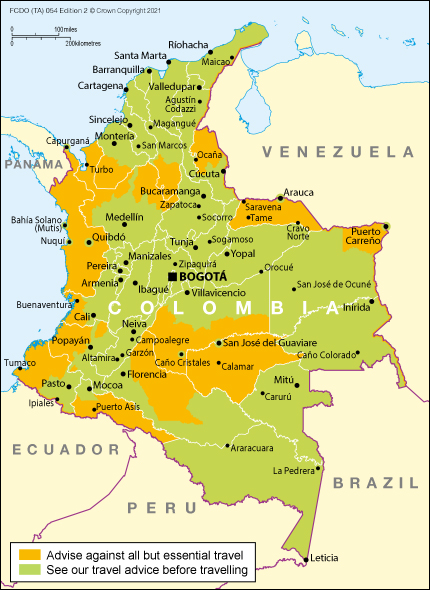
Your travel insurance could be invalidated if you travel against advice from the Foreign, Commonwealth & Development Office (FCDO).
Areas where FCDO advises against all but essential travel
Colombia-venezuela border and northern colombia .
FCDO advises against all but essential travel to:
- the Catatumbo region of Norte de Santander Department
- all of Arauca Department, except for the department capital, Arauca
- the municipality of Puerto Carreño in Vichada Department, except for the department capital, Puerto Carreño
- within 5km of the rest of the border with Venezuela, except for the city of Cúcuta
FCDO currently advises against all travel to Venezuela’s border regions with Colombia . You should not use any of the Colombia-Venezuela land crossings.
Pacific coast and Colombia-Panama border
- Chocó Department, except for the department capital Quibdó, the whale-watching towns of Nuquí and Bahía Solano and the tourist site of Capurganá
- the western part of Valle del Cauca Department, including Buenaventura
- the western part of Cauca Department
- the South Pacific, Sanquianga and Telembi regions of Nariño Department
- the southern part of Córdoba Department
- the Urabá and Bajo Cauca regions of Antioquia Department
- the southern part of Bolívar Department
Colombia-Ecuador border and southern Colombia
FCDO advises against all but essential travel to within 5km of the border with Ecuador except for:
- the border crossing on the Pan-American highway at the Puente Internacional de Rumichaca
- the city of Ipiales in Nariño Department
FCDO advises against all but essential travel to Orito, San Miguel, Valle del Guamuez, Puerto Caicedo, Puerto Guzmán, Puerto Asis and Puerto Leguizamo in Putumayo Department.
Central Colombia
- all of Guaviare Department, except for the department capital San José del Guaviare
- Cartagena del Chairá, San Vicente del Caguan, Puerto Rico, El Doncello, Paujil and La Montañita in Caquetá Department
- the Ariari region of southern Meta, except for Caño Cristales
If travelling to the tourist site of Caño Cristales, travel by air from the town of La Macarena with a reputable tour company.
Find out more about why FCDO advises against travel .
Before you travel
No travel can be guaranteed safe. Read all the advice in this guide and any specific travel advice that applies to you:
- women travellers
- disabled travellers
- LGBT+ travellers
- solo and independent travel
- volunteering and adventure travel
Travel insurance
If you choose to travel, research your destinations and get appropriate travel insurance . Insurance should cover your itinerary, planned activities and expenses in an emergency.
About FCDO travel advice
FCDO provides advice about risks of travel to help British nationals make informed decisions. Find out more about FCDO travel advice .
Follow and contact FCDO travel on Twitter , Facebook and Instagram . You can also sign up to get email notifications when this advice is updated.
Related content
Is this page useful.
- Yes this page is useful
- No this page is not useful
Help us improve GOV.UK
Don’t include personal or financial information like your National Insurance number or credit card details.
To help us improve GOV.UK, we’d like to know more about your visit today. We’ll send you a link to a feedback form. It will take only 2 minutes to fill in. Don’t worry we won’t send you spam or share your email address with anyone.
How to cope with restless legs while traveling
The twitchy, achy condition doesn’t just affect people during sleep.
Through the windows of an express train from Kyoto, Japan, to a whisky distillery on Mount Kaikoma, my colleagues admired the views and calmly discussed the agenda for the day. Distracted and annoyed, I punched my quads while counting down the minutes until we could get off the train. I envied anyone in a state of calm.
My decades-long problem with restless legs interrupted what should have been an unparalleled experience. Every time I traveled, I found myself squished into a confined space or restricted with prolonged stillness — both triggers for my twitchy limbs.
Eventually I was diagnosed with restless legs syndrome (RLS), but the treatment plan for mitigating symptoms while traveling was not clear. On trips, I implemented my own treatments to assuage the annoying twitching in my legs — meditation, marijuana , stretching and taking muscle relaxers. My remedies didn’t reliably work, and the struggle left me feeling distracted, frustrated and helpless.
I’m not alone in the journey to mitigate symptoms. According to Karla Dzienkowski, executive director of the Restless Legs Syndrome Foundation , nearly 12 million adults and children in the United States deal with the condition. And travel in particular is known to exacerbate RLS.
What causes restless legs syndrome?
“The hallmark symptom of RLS is the uncontrollable urge to move the legs. Individuals often describe the accompanying RLS sensations as throbbing, aching, twitching, bubbling in the legs, or insects crawling under the skin,” Dzienkowski explained in an email. It’s also known as Willis-Ekbom disease, and my doctor identified genetics as the leading cause.
RLS is notoriously difficult to treat. Andy Berkowski, a physician and founder of ReLACS Health , says that RLS is unfortunately marginalized in the medical community, as the condition lacks a diagnostic treatment protocol. Berkowski said that RLS is the third-most-common sleep disorder, “but it doesn’t get the attention it deserves.”
According to the Restless Legs Syndrome Foundation, a single unifying cause of RLS has not been identified. The group says RLS often runs in families, and it’s more common in people with Type 2 diabetes. Also, up to 25 percent of women develop the syndrome during pregnancy, but symptoms often disappear after giving birth. Many experts say RLS is neurological.
“RLS is not a leg condition; it’s a brain condition,” Berkowski said.
How can restless legs syndrome affect you while traveling?
Traveling creates conditions that make it more difficult to mitigate RLS symptoms — particularly, the inability to move freely. In a confined space with limited mobility, the legs can twitch with aggression. “People call the airplane a torture chamber for restless legs,” Berkowski says.
For me, RLS flares up in the evening, especially if I’m traveling. If I am sleep-deprived or otherwise anxious, the symptoms dominate with increased intensity. And, as someone who is on and off planes frequently for work, my symptoms are exacerbated by sleep deprivation, limited mobility, and increased alcohol and caffeine intake.
During an overnight flight from Chicago to Paris , my sleep was interrupted by jarring kicks seemingly from deep inside my legs. Unfortunately, moving around the cabin, massaging my legs and flexing my toes did not offer relief.
Experts say anxiety also plays a role when traveling with RLS. “There’s the psychological effect that makes things worse. As with any sensation condition, the more you draw your attention to RLS, the more you will notice it,” Berkowski said.
How to mitigate RLS when traveling
Brian Koo, associate professor of neurology at Yale and director of Yale Medicine’s Restless Legs Syndrome center, recommends avoiding evening or overnight travel altogether if possible. Koo explains that sleep and RLS are intrinsically linked. “Try to get a good night’s sleep in the days leading up to travel,” Koo said. “If you’re changing time zones, adjust your schedule several days before the trip.” Koo warns patients that if they don’t get quality sleep, they are likely to have a bad bout with RLS during the trip.
Koo also voices a strict warning for patients who plan to use over-the-counter sleep aids. “The OTC sleep aids that contain antihistamines will make RLS worse,” he says. He recommends managing your sleep schedule before a trip and has seen improvement in people who avoid alcohol and sugar while traveling.
Berkowski agrees: “You’re not on the same schedule. You’re up early, and may grab that high-sugar mocha latte at the airport before your flight.” He warns that caffeine, sugar and alcohol are culprits of RLS, especially when combined with sleep deprivation.
Berkowski tells his patients that while traveling, mobility is key. “Mild to moderate activity throughout a trip is essential,” he advises. “Simple choices will mitigate symptoms: choose an aisle seat on a flight, avoid the moving walkway at the airport and walk beside it instead, board the flight or train as late as possible, stay standing in the airport before your flight, and on road trips, get out and walk briskly as often as needed.”
An important accompaniment to movement is ensuring proper blood flow to the legs while traveling. Sarah Hans, a physician at United Vein and Vascular Centers , treats patients with RLS. She advises wearing compression socks or stockings while traveling to help with blood flow. She says that “simple exercises such as calf raises with your feet on the ground and pulling your knees toward your chest can help.” Hans also recommends staying well hydrated.
Over the last 20 years, I’ve learned that punching my quads and obsessing over the sensation are not productive coping mechanisms. For me, pre-adjusting my schedule to the destination, avoiding caffeine and wearing compression stockings have helped the most.
Andrea Javor is a Chicago-based writer. Follow her on X or Instagram: @AndreaEJavor.
More travel tips
Vacation planning: Start with a strategy to maximize days off by taking PTO around holidays. Experts recommend taking multiple short trips for peak happiness . Want to take an ambitious trip? Here are 12 destinations to try this year — without crowds.
Cheap flights: Follow our best advice for scoring low airfare , including setting flight price alerts and subscribing to deal newsletters. If you’re set on an expensive getaway, here’s a plan to save up without straining your credit limit.
Airport chaos: We’ve got advice for every scenario , from canceled flights to lost luggage . Stuck at the rental car counter? These tips can speed up the process. And following these 52 rules of flying should make the experience better for everyone.
Expert advice: Our By The Way Concierge solves readers’ dilemmas , including whether it’s okay to ditch a partner at security, or what happens if you get caught flying with weed . Submit your question here . Or you could look to the gurus: Lonely Planet and Rick Steves .


IMAGES
VIDEO
COMMENTS
Read the entire Travel Advisory. Do Not Travel to: Arauca, Cauca (excluding Popayán), and Norte de Santander departments due to crime and terrorism. The Colombia-Venezuela border region due to crime, kidnapping, and risk of detention when crossing into Venezuela from Colombia. Country Summary: Violent crime, such as homicide, assault, and ...
The Department of State renewed its Travel Advisory for Colombia on October 26, 2021, which remains at Level 3 (Reconsider Travel). Reconsider travel to Colombia due to COVID-19. Exercise increased caution in Colombia due to civil unrest, crime, terrorism and kidnapping. Some areas have increased risk.
Call us in Washington, D.C. at 1-888-407-4747 (toll-free in the United States and Canada) or 1-202-501-4444 (from all other countries) from 8:00 a.m. to 8:00 p.m., Eastern Standard Time, Monday through Friday (except U.S. federal holidays). See the State Department's travel website for the Worldwide Caution and Travel Advisories.
Stick to exploring one section of the country and exploring it well: spend three weeks bouncing between sun-soaked, Caribbean beaches or heading from Medellín deep into the Zona Cafetera. Your trip should match Colombia's characteristic pace: slow and enjoyable. 2. Domestic flights are affordable and quick.
Colombia - Venezuela Border - Level 4: Do Not Travel. U.S. citizens are advised not to travel to the border of Colombia and Venezuela. U.S. citizens are at risk of detention when crossing into Venezuela. The Colombia-Venezuela border is not clearly marked, and U.S. citizens should not go near the border due to the risk of crossing into ...
Review the State Department's guidance on travel during the COVID-19 pandemic. Visit our Embassy webpage on COVID-19 for information on conditions in Colombia. Assistance U.S. Embassy Bogota, Colombia Tel. +57-1-275-2000 [email protected] https://co.usembassy.gov/ U.S. Consular Agency, Barranquilla [email protected]
Colombia. South America. Soaring Andean summits, unspoiled Caribbean coast, enigmatic Amazon jungle and cryptic archaeological ruins. Colombia boasts all of South America's allure and more. Best Time to Visit.
Colombia Travel Advisory : Level 3: Reconsider Travel: January 2, 2024: Costa Rica Travel Advisory : Level 2: Exercise Increased Caution: July 17, 2023: ... Subscribe to get up-to-date safety and security information and help us reach you in an emergency abroad. Recommended Web Browsers: Microsoft Edge or Google Chrome. ...
An Illustrated Handbook for Nature Tourism Guides in Colombia. Flowers, forests, jungles, birds, bears, and even capybaras—Colombia truly has it all. You'll be utterly charmed by the beauty of our nature and you'll be able to show visitors that the legends it spawns have some surprising truths to them. Learn more.
Fast Facts about Colombia. Power voltage is 110V at 60 Hz. Colombia's currency is the Colombian Peso and 1 Colombian Peso is equal to 0.0003 USD. The best way to get around Colombia is by bus. As long as your stay is under 90 days, you do not need a tourist visa, just a valid US passport.
Colombia is a country located in South America. Bogota is the capital and it is a country known for its history, architecture, landscapes, and beaches. Colombia is a country with a torrid past and one that people are only just starting to think about visiting in the past 10 years, with good reason, as it has a lot to offer the tourist.
Daily budget Basic US$50, occasional treat US$90 Drink Fresh fruit juice US$2 FoodPargo frito con arroz con coco ... Travel advice for Colombia. From travel safety to visa requirements, discover the best tips for traveling to Colombia. Eating and drinking in Colombia; Getting around Colombia: Transportation Tips ...
Discover essential Colombia travel guides and tips to ensure a smooth and memorable trip. From must-visit destinations to local customs, get prepared with our expert advice.
A Travel Guide to Colombia with ️ Travel Itineraries, ️ Top places to visit in 2024, ️ Beautiful coastlines and beaches, and more! ... Safety and Travel Advice in Colombia. ... Personal Travel Advise: Ask us your travel questions directly. How to Plan a Trip: 7 Easy Tips for Your Next Adventure. Best Travel Insurances in 2024 (COVID-19 ...
Travel during daylight hours only, especially in rural areas. If you choose to drive a vehicle in Colombia, learn the local traffic laws and have the proper paperwork. Get any driving permits and insurance you may need. Get an International Driving Permit (IDP). Carry the IDP and a US-issued driver's license at all times.
Best Colombia Tours. Explore local culture with a Colombian tour guide through these unique excursions: Full-Day Rosario Islands Including Barú, Cholon and Playa Blanca from Cartagena. Freedom Tour of Palenque in Cartagena. Lodotherapy in the Totumo Volcano with Visit to Galerazamba from Cartagena.
For most people visiting Colombia, the 90-day tourist permit is more than enough. On the other hand, Colombia's tourism slogan was, "The only risk is wanting to stay.". If you find yourself wanting a bit more time to explore all that Colombia has to offer, those 180 days/year of visa-free travel might come in handy. 2.
Trust us, the backdrop of waterfalls and lush forest is the cherry on top! Ride the Coffee Train ... Colombia Travel Tips. Finally, let's go over some critical travel tips: Entry and exit requirements: Passport validity for six months is essential for travelers. Most visitors do not need a visa for stays up to 90 days, but double-check before ...
Visit our website for Travel to High-Risk Areas. Last Update: Reissued after periodic review with updates to the Crime Risk Indicator, information about the Do Not Travel areas, and COVID-19 information. Assistance: U.S. Embassy Bogota, Colombia. Tel. +57-1-275-2000 or 601-275-2000. [email protected].
It is a reason to come back one day. # 23 RAINY AND DRY SEASON. If there's something you should know before planning your trip to Colombia, is that you can experience two distinct seasons: dry and rainy. According to us, Colombia is a country you can visit any time of the year, but you should consider those seasons.
4. Travel requirements for Colombia. US, Canadian, UK, and Australian citizens do not need a visa to travel to Colombia. You can enter the country with a valid passport, provided it will not expire in the next 6 months. A visit can last up to 90 days without a visa. If the stay is longer than 90 days, a visa is required.
Bus - Intercity buses are the most common way to get around Colombia. A bus from Bogotá to Medellín costs around 52,500 and takes around 9 hours while a bus to Quito, Ecuador from Bogotá costs around 181,000 COP and takes over 24 hours. Medellín to Manizales is 31,000 COP and Salento to Cali is 59,000 COP.
Colombia Travel Tips & Useful Info. ... US Dollar, Pound Sterling and other major currencies can be exchanged at the airport, however, UK travelers should be aware that Pound Sterling can be difficult to exchange at banks and has very poor exchange rates at bureau de changes. ATMs are widely available in Bogota and Cartagena, and credit cards ...
By U.S. Embassy Bogotá. 3 MINUTE READ. November 21, 2021. COVID-19 Testing Requirement: Effective December 6, 2021, all air passengers 2 years or older, regardless of vaccination status or citizenship, must show a negative viral COVID-19 test taken no more than 1 day before travel to the United States. For more information, please visit: https ...
The higher you go, the colder it tends to be. Here's a rough guide of the average temperatures depending on altitude: < 1000 m - More than 24°C (Cartagena, Santa Marta, Cali) 1000 - 2000 m - ~ 20°C (Medellín, Manizales) 2000 - 3000 m - ~ 14°C - (Bogota, Pasto) Colombia has two seasons, a wet and a dry one.
Bogota is relatively cool during the day and chilly at night, while Cartagena is known for very humid weather and Medellin for what feels like eternal spring. 4. Aguardiente is the most Colombian staple you should have. There's no drink more popular in Colombia than aguardiente.
The American Embassy's advice says "reconcider travel to Colombia", we are from Europe but this advice worries us. At the same time, we hear and read so much wonderful things about Colombia and we are planning an itinerary roughly like this: Bogota - Medelin - Cartagena - Tayron - Capurgana.
Don't travel alone or at night. Drug-related crime, terrorism and civil unrest make some areas very dangerous. These include the regions within 20km of the Venezuelan and Ecuadorian borders, the cities of Buenaventura and Tumaco, and the Darién Gap. Avoid these areas. Kidnapping occurs in areas of Colombia.
Pacific coast and Colombia-Panama border. FCDO advises against all but essential travel to: Chocó Department, except for the department capital Quibdó, the whale-watching towns of Nuquí and ...
Nearly 12 million people in the United States deal with restless legs syndrome, and travel in particular is known to exacerbate the condition. ... Local guides, travel tips and the latest industry ...